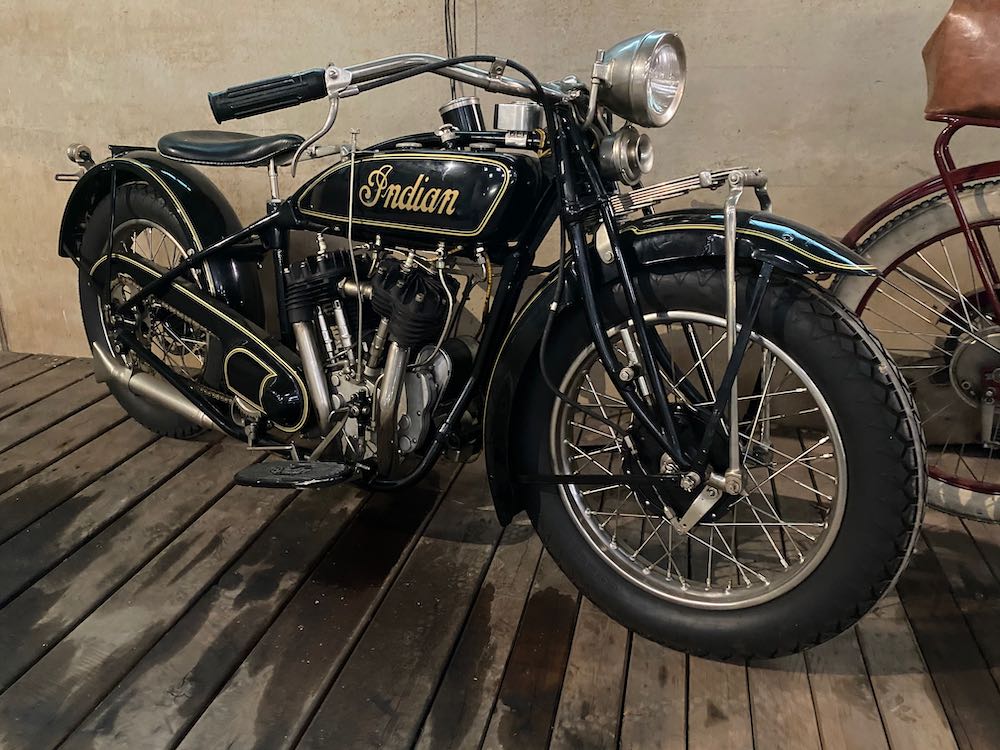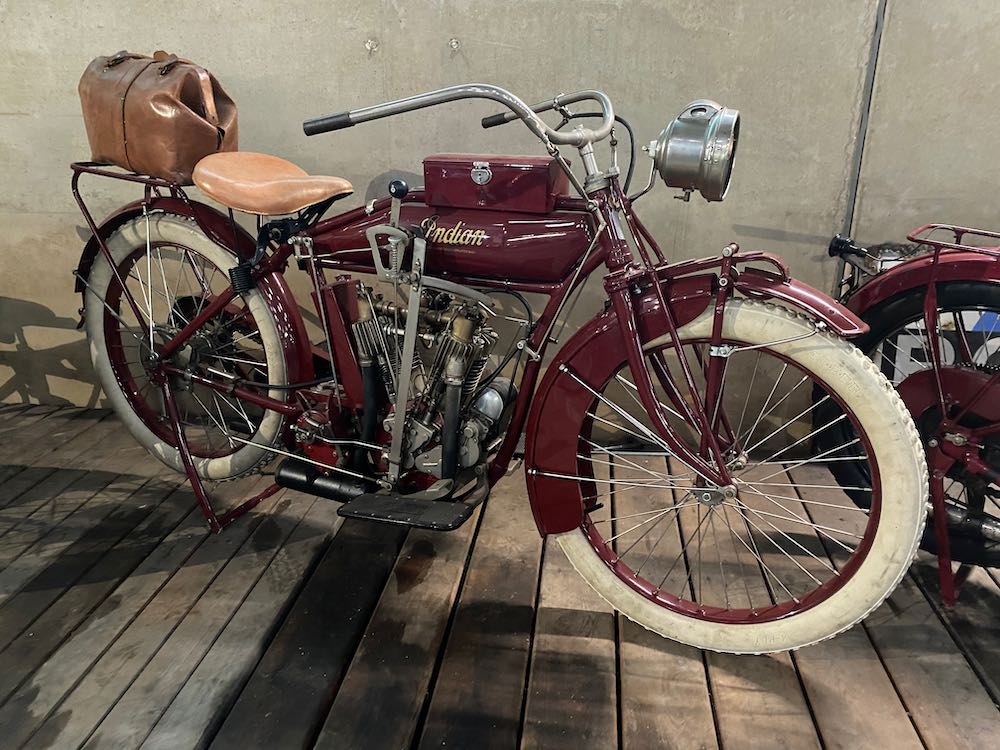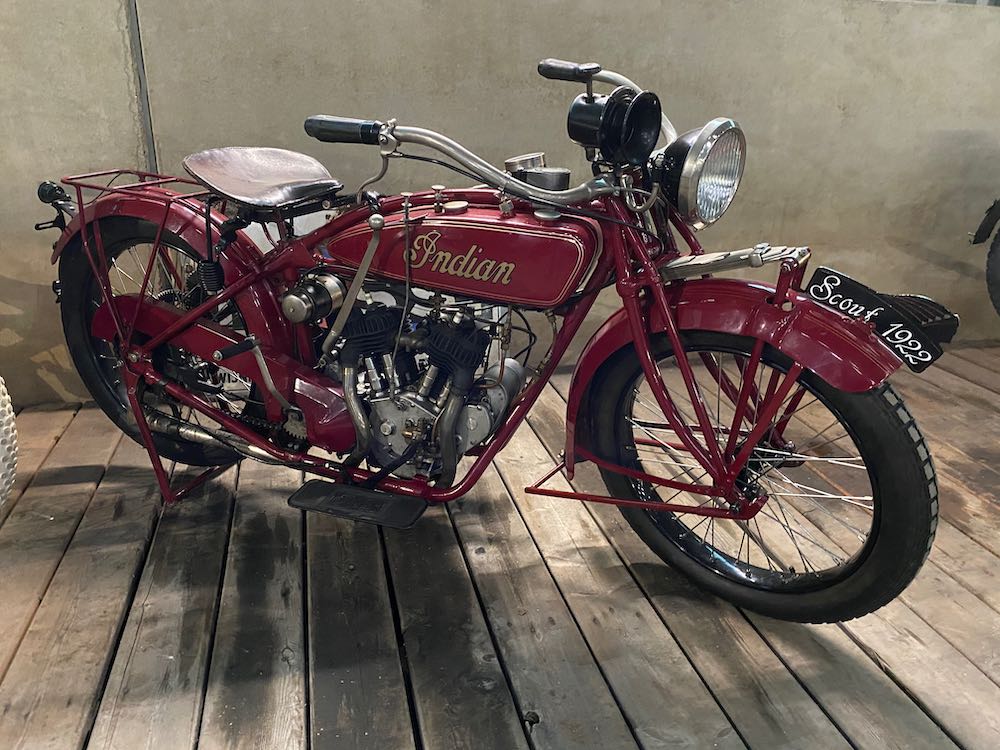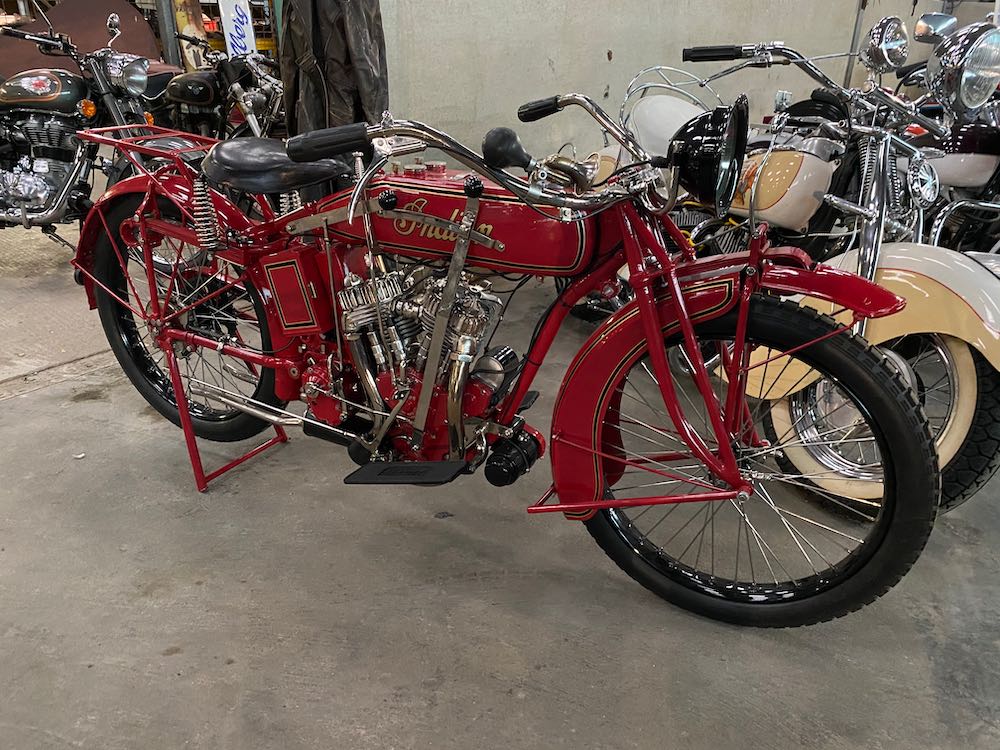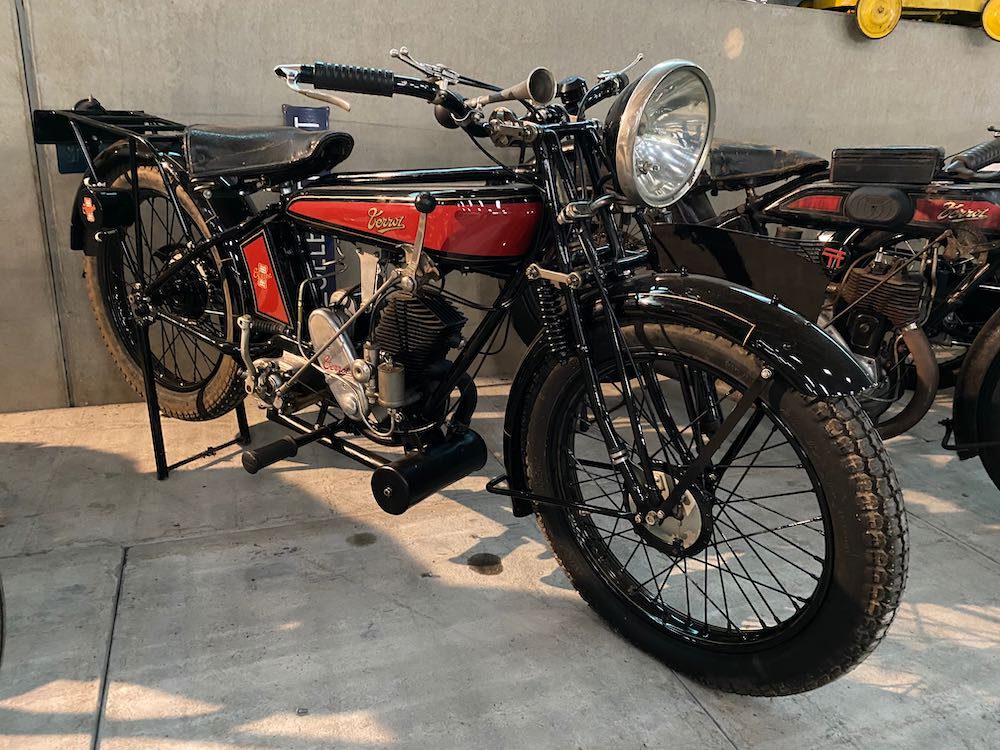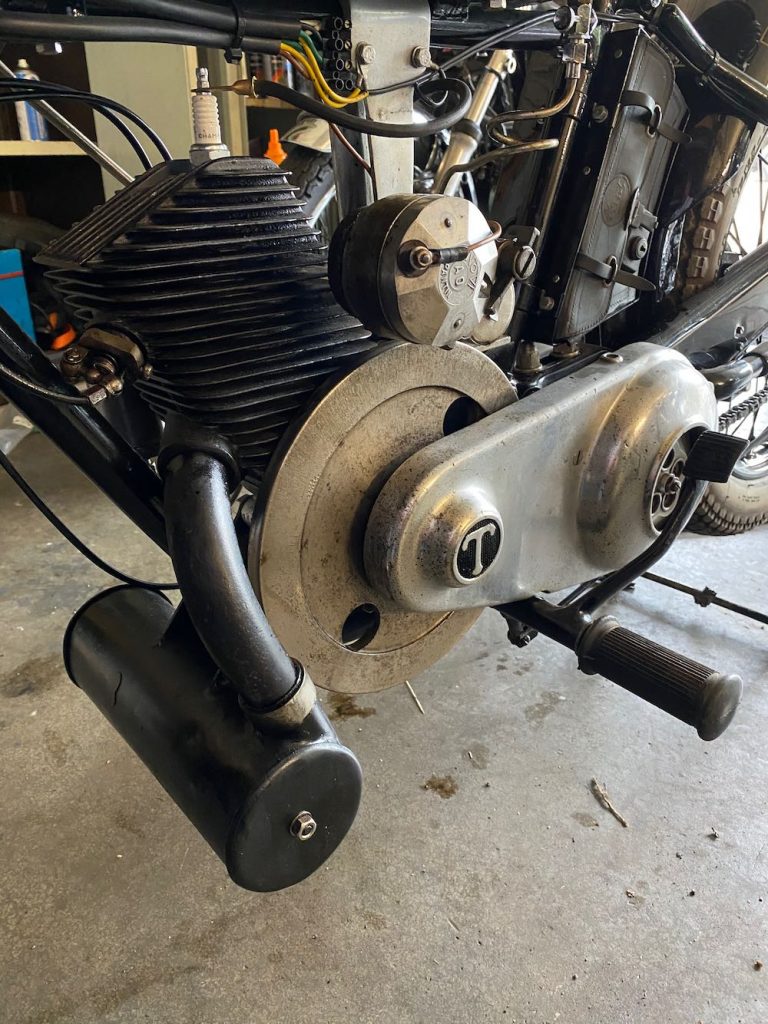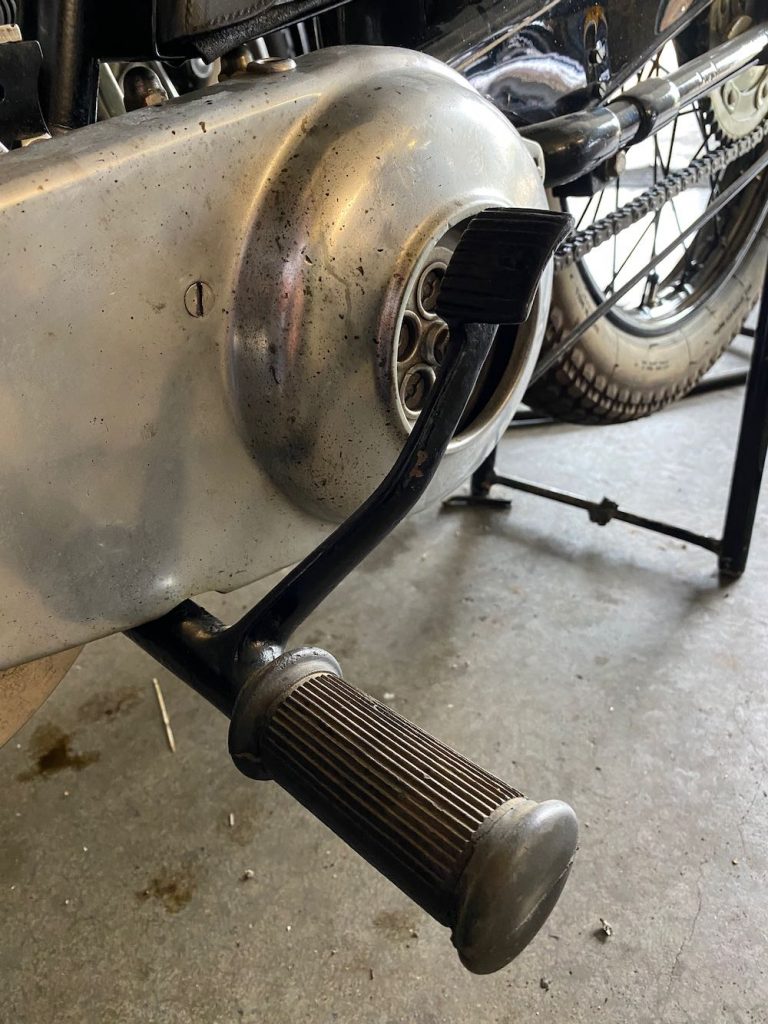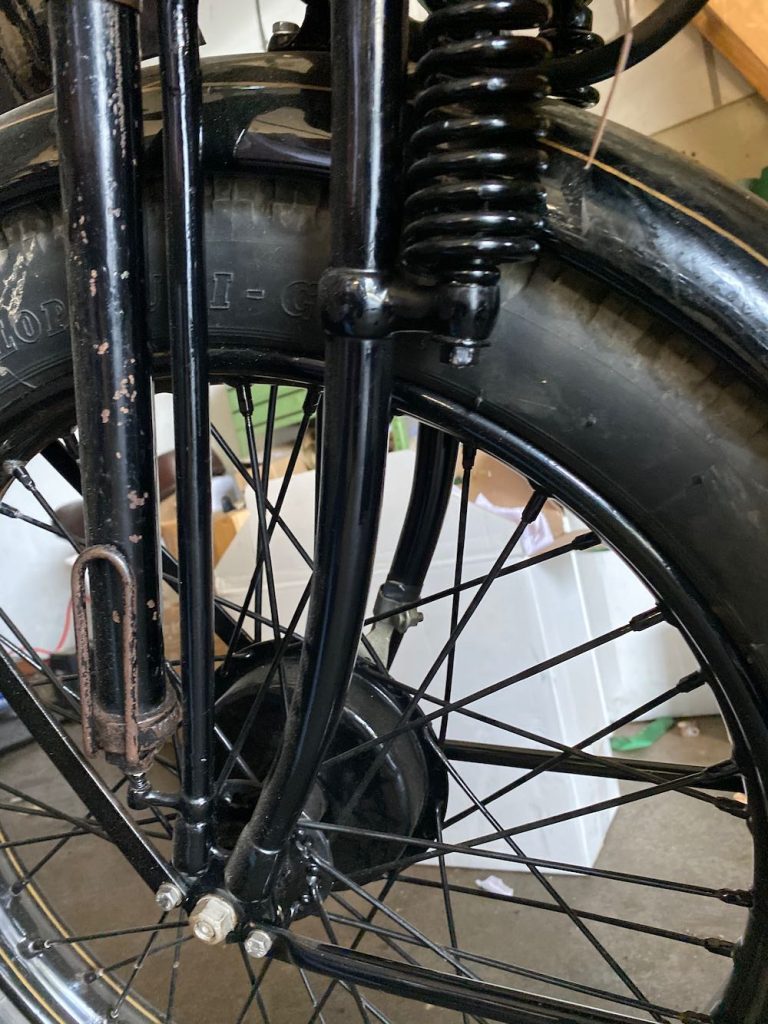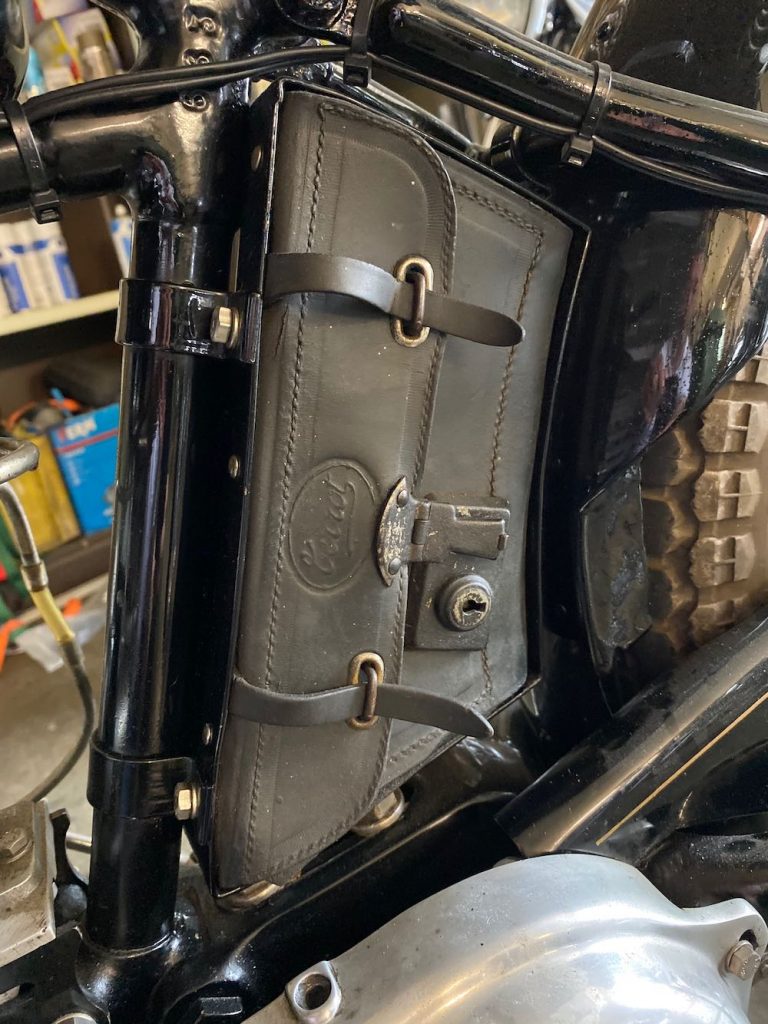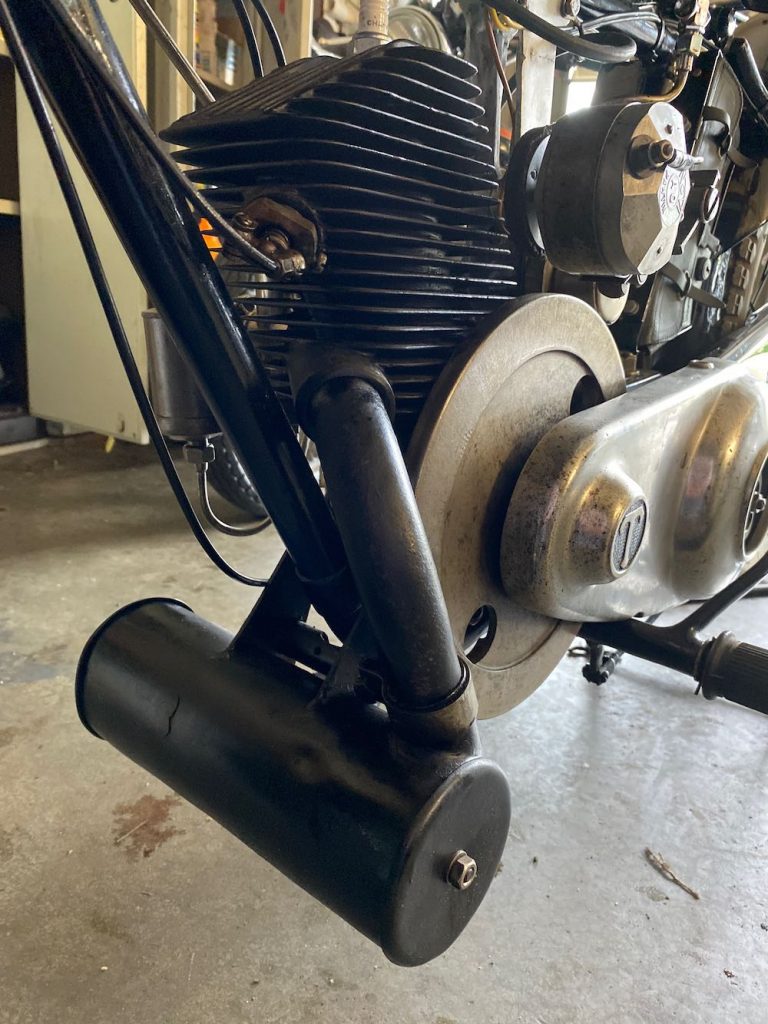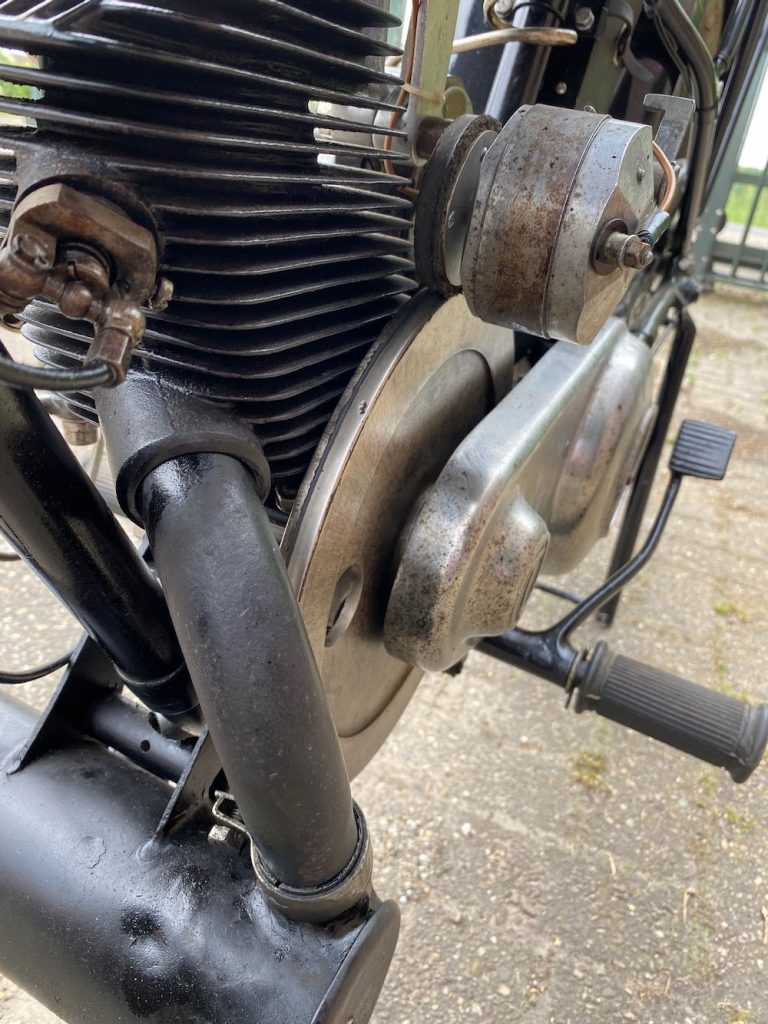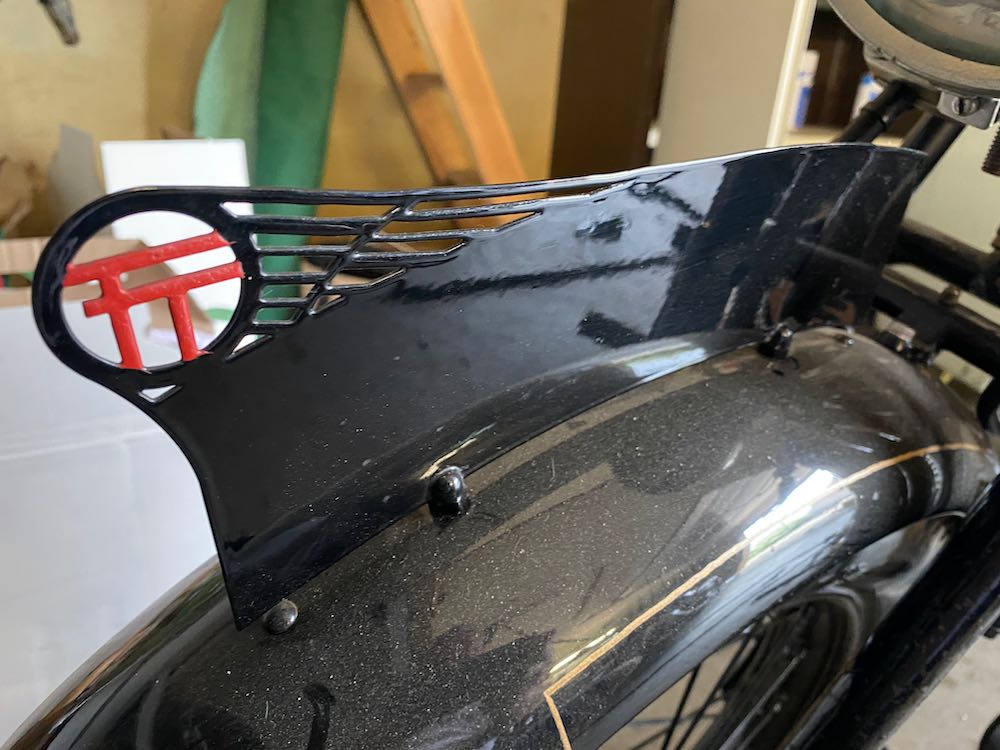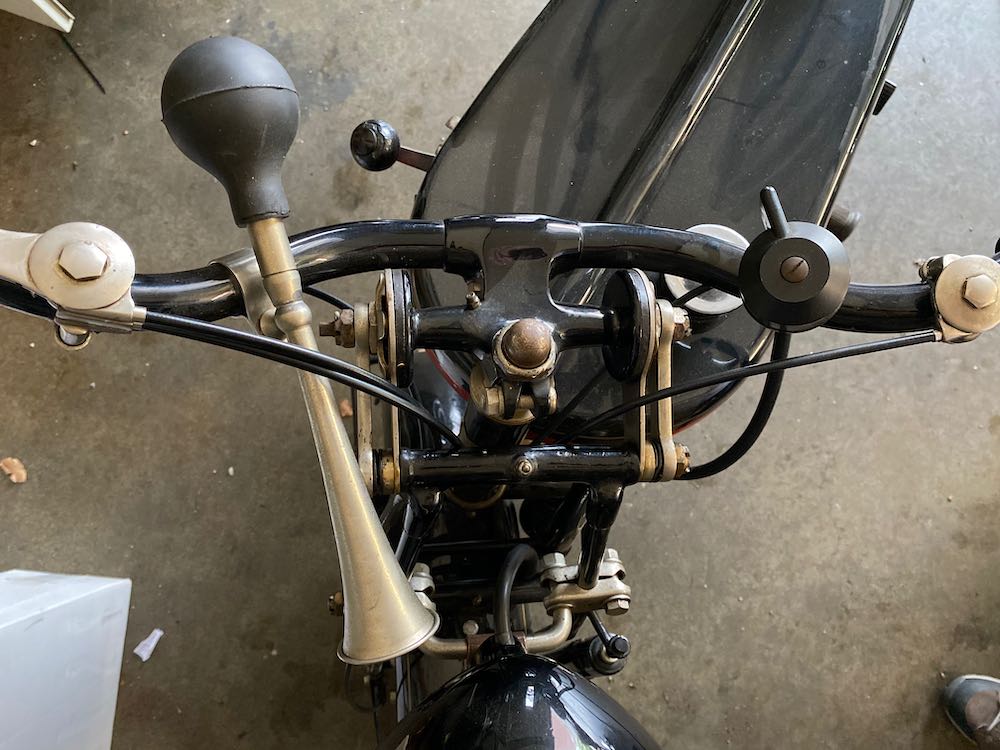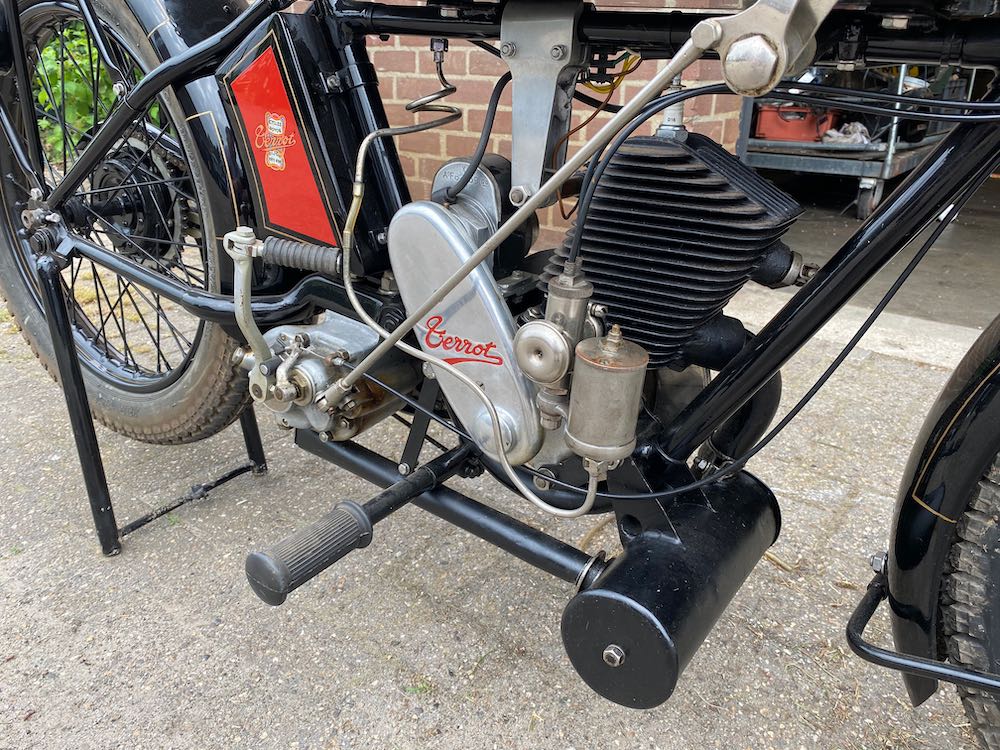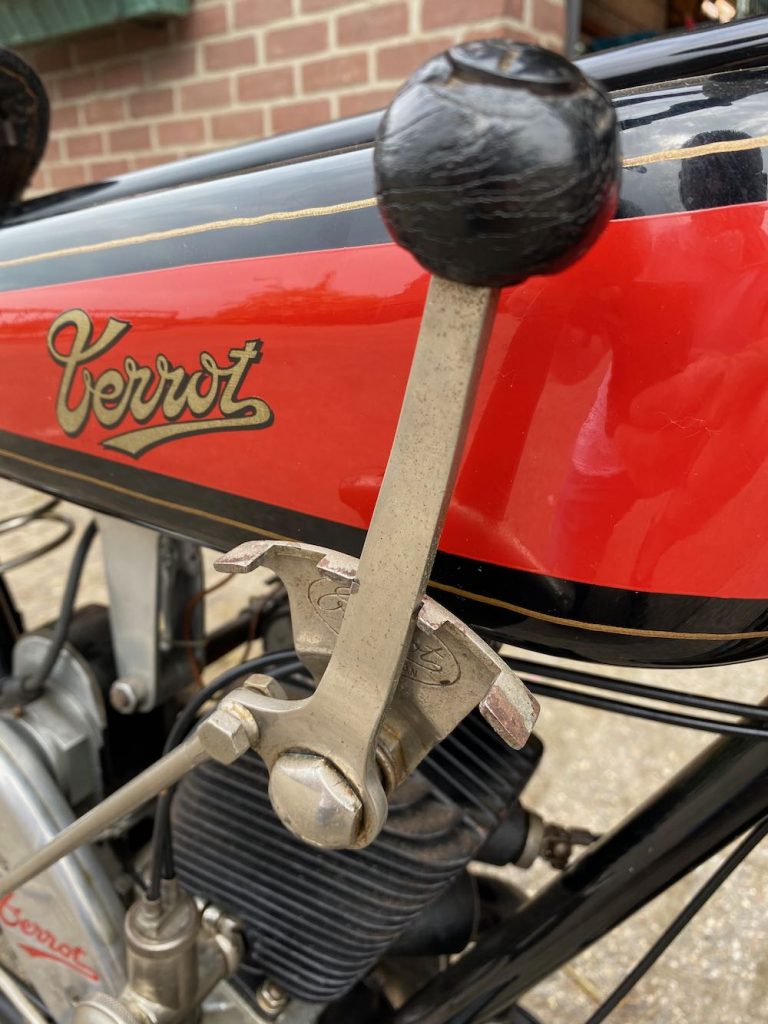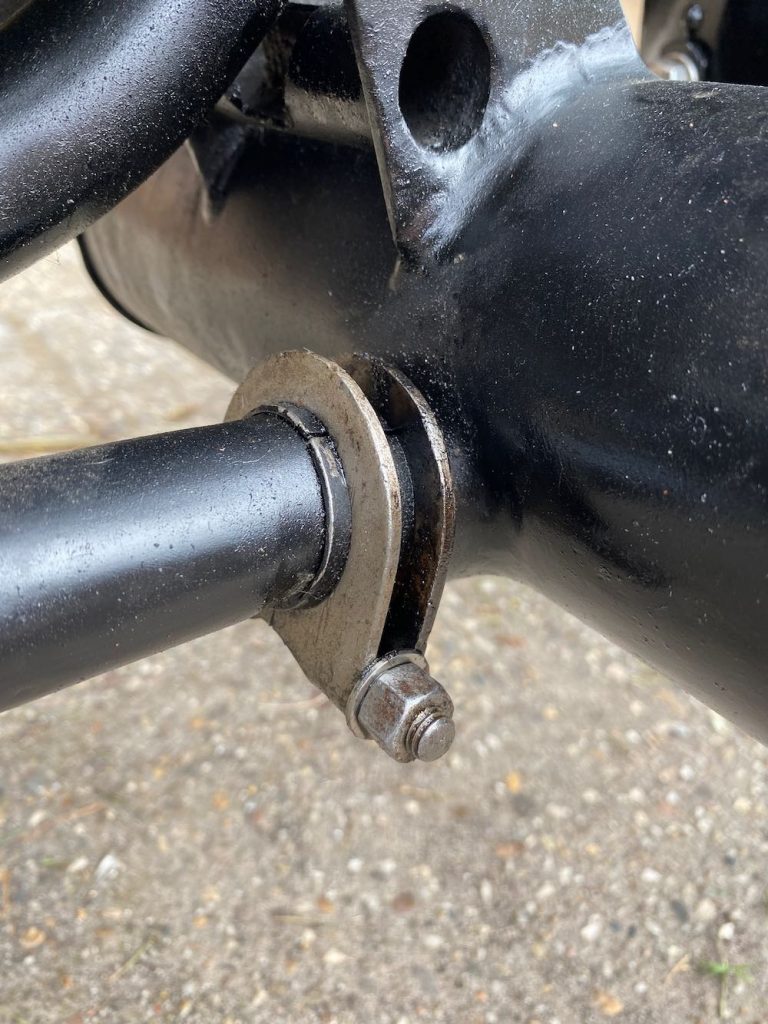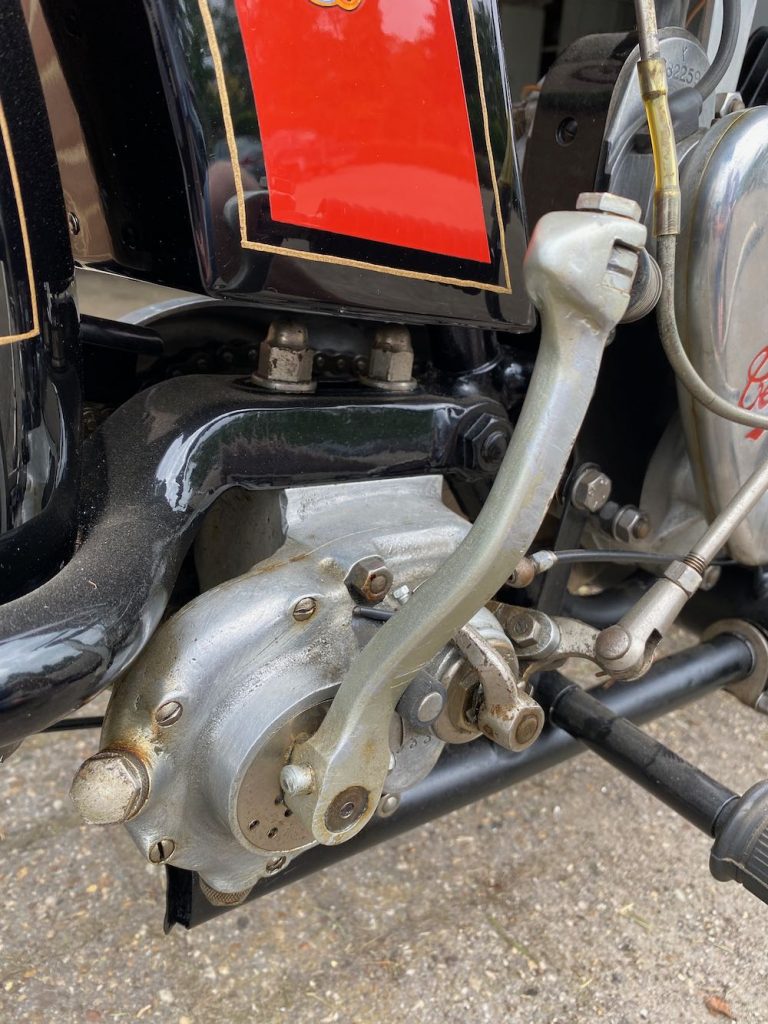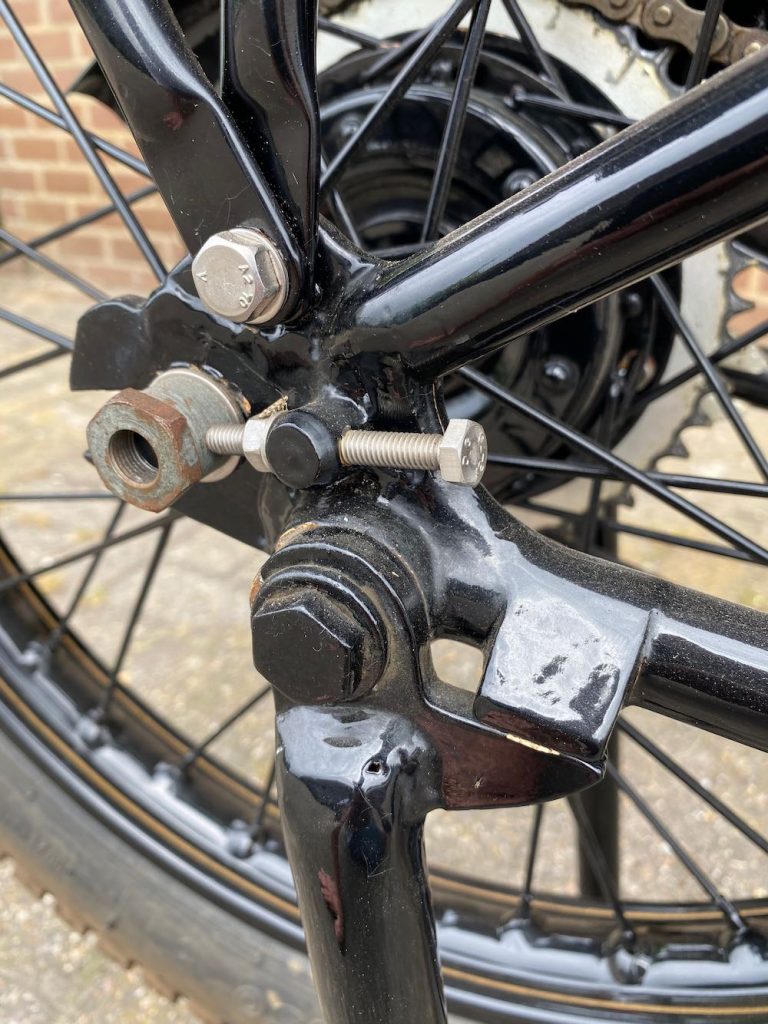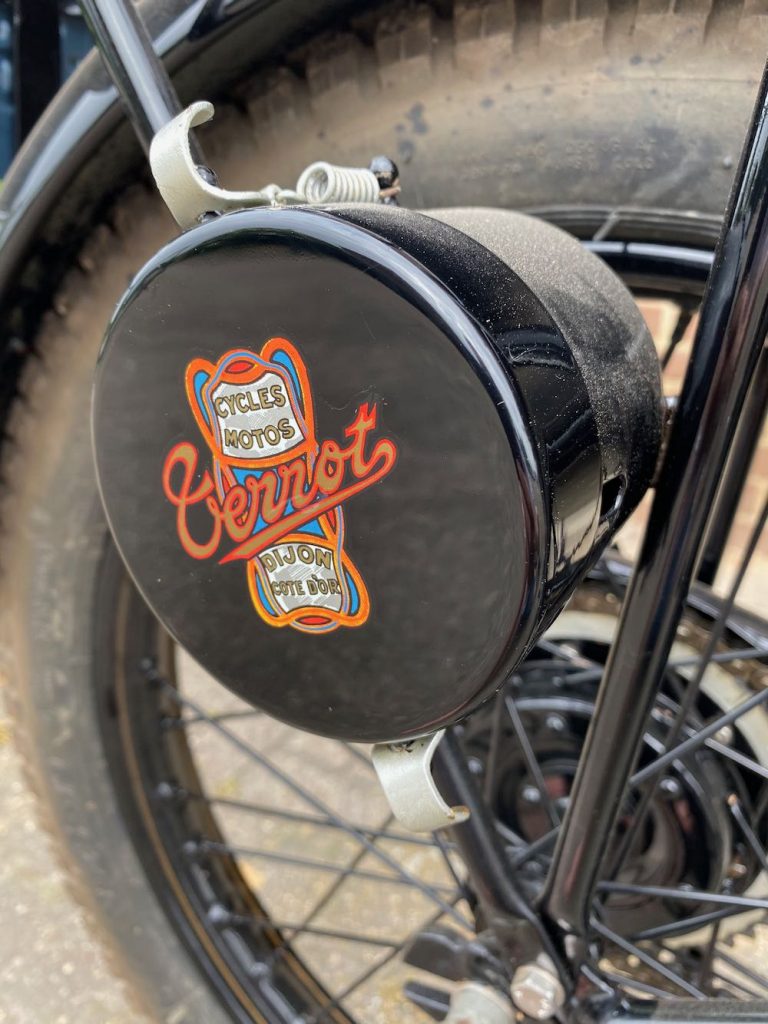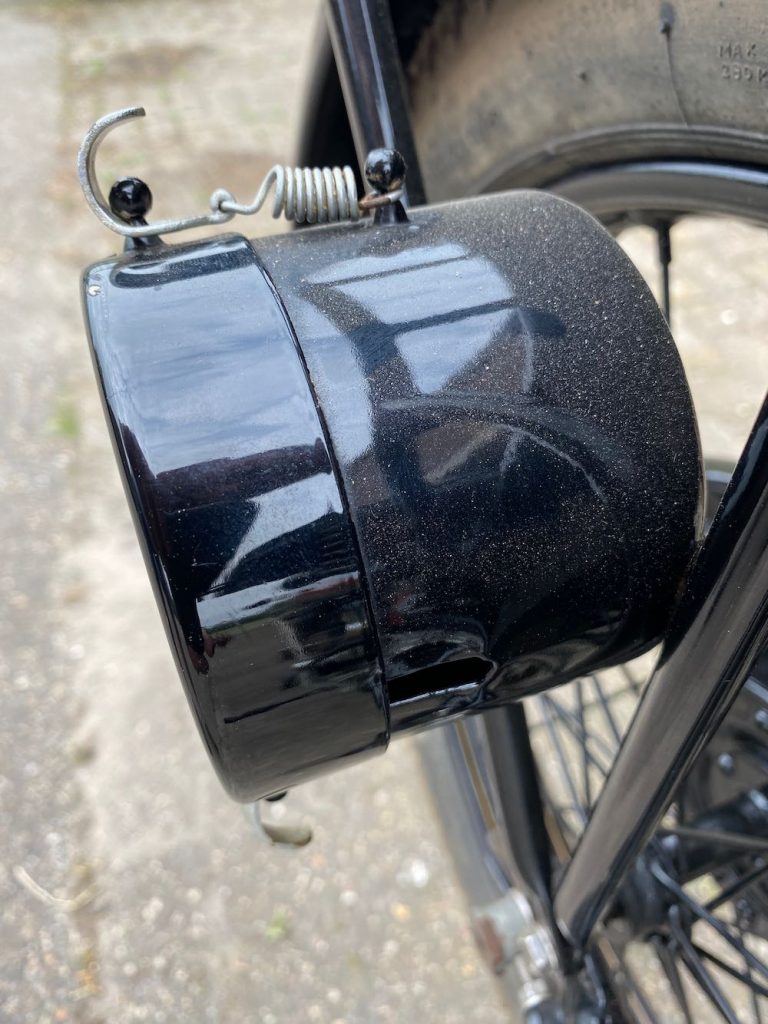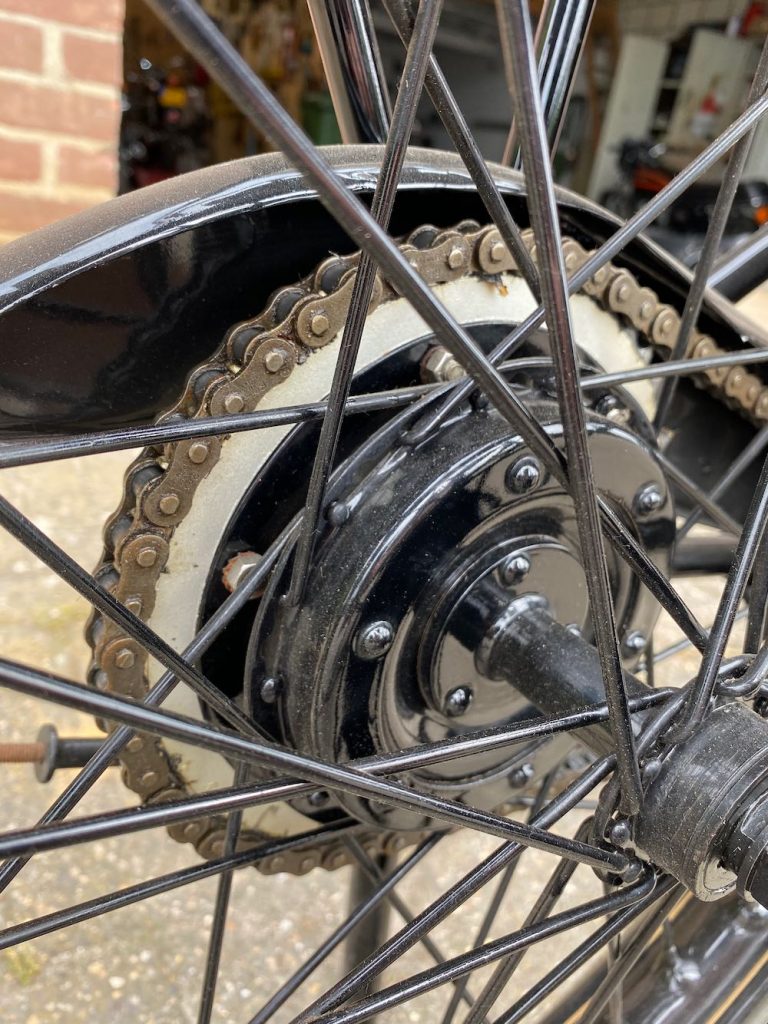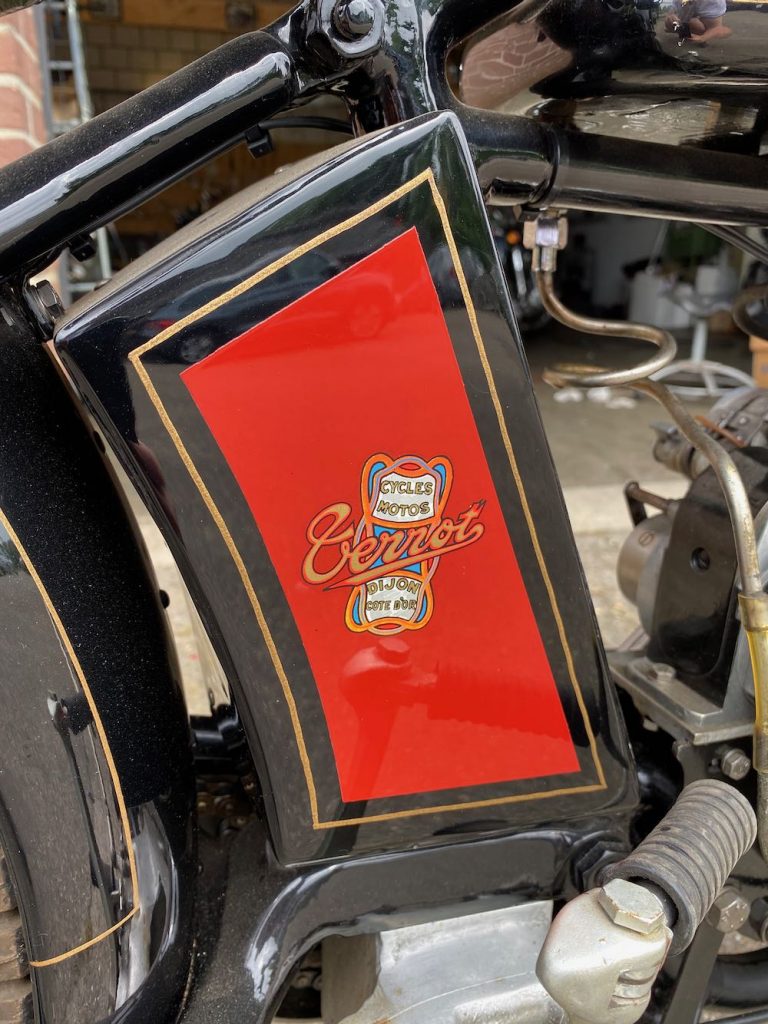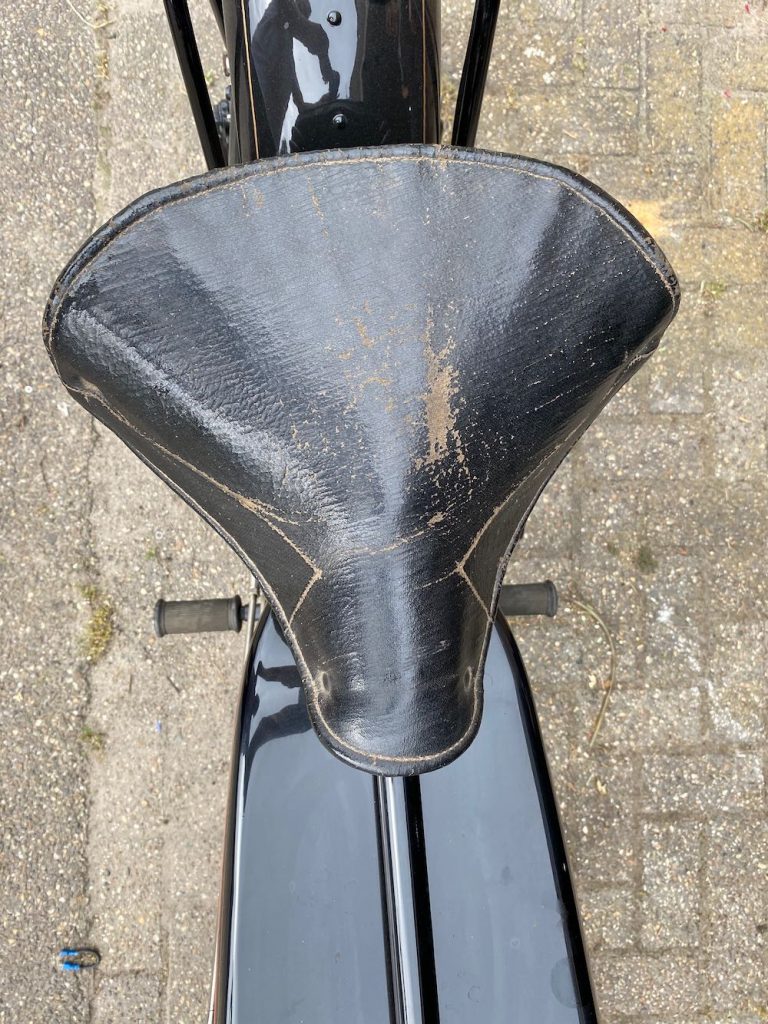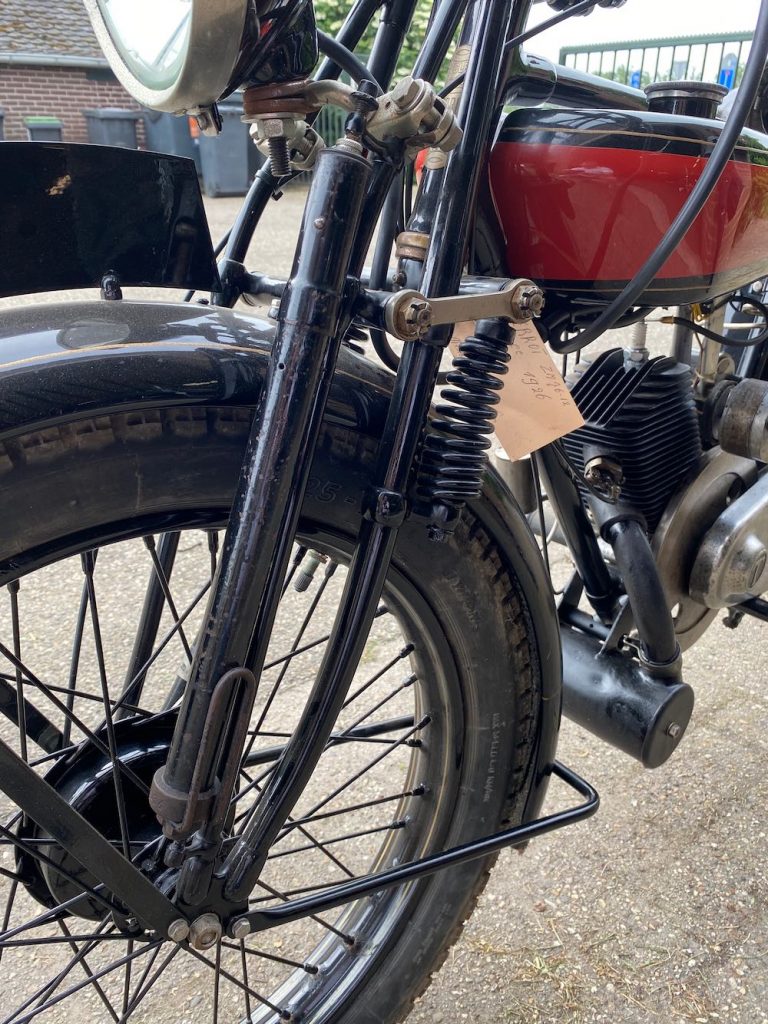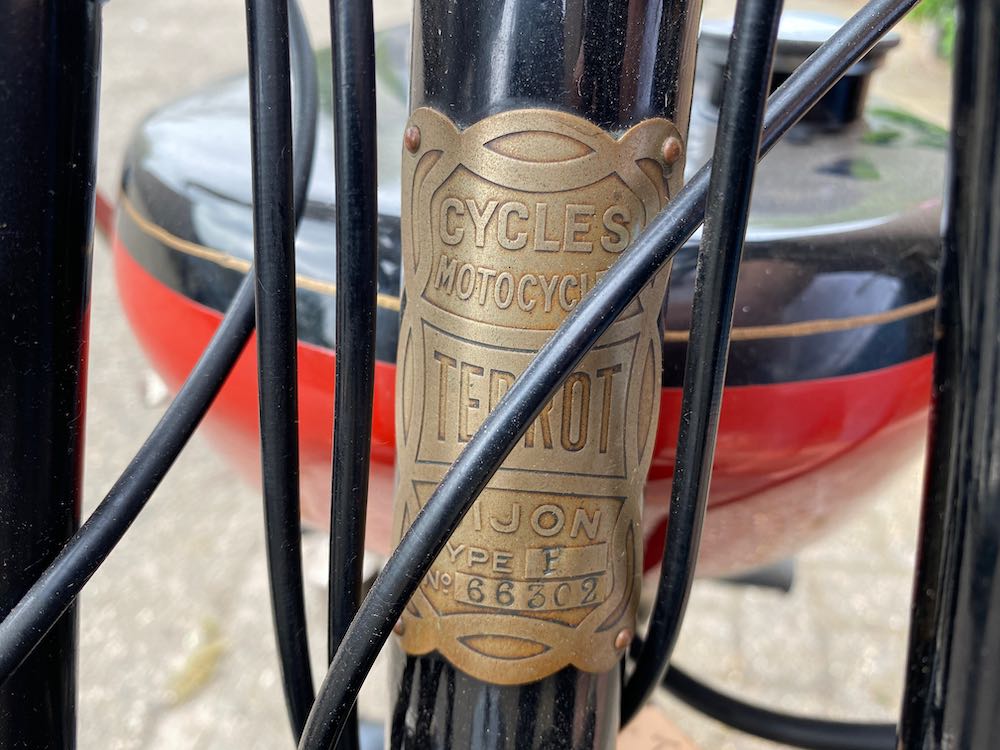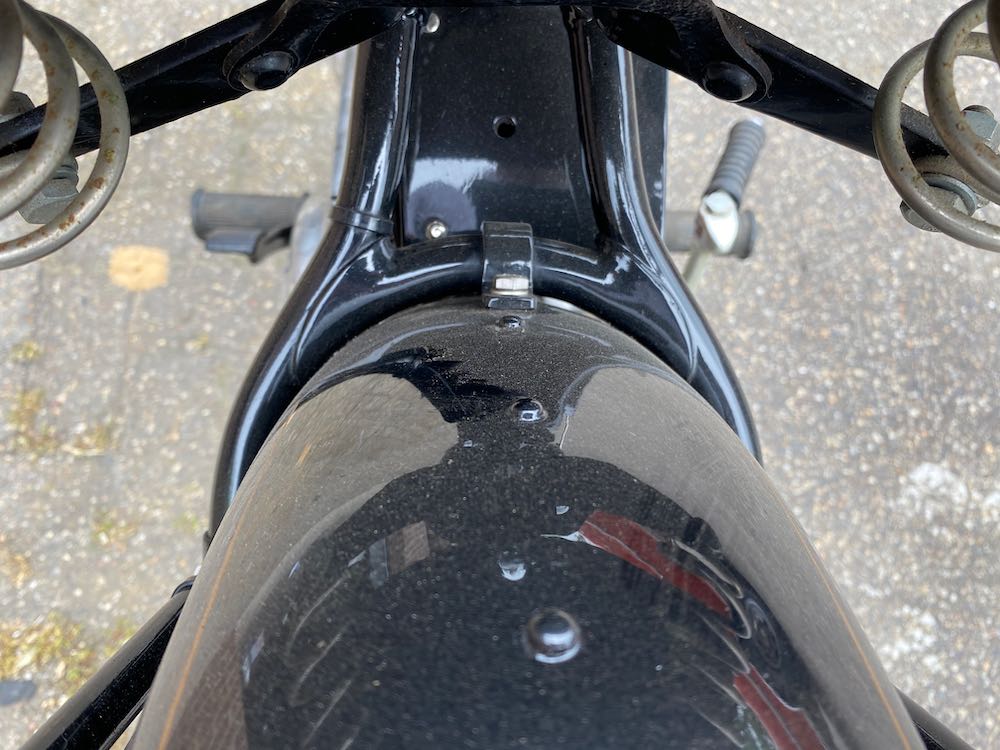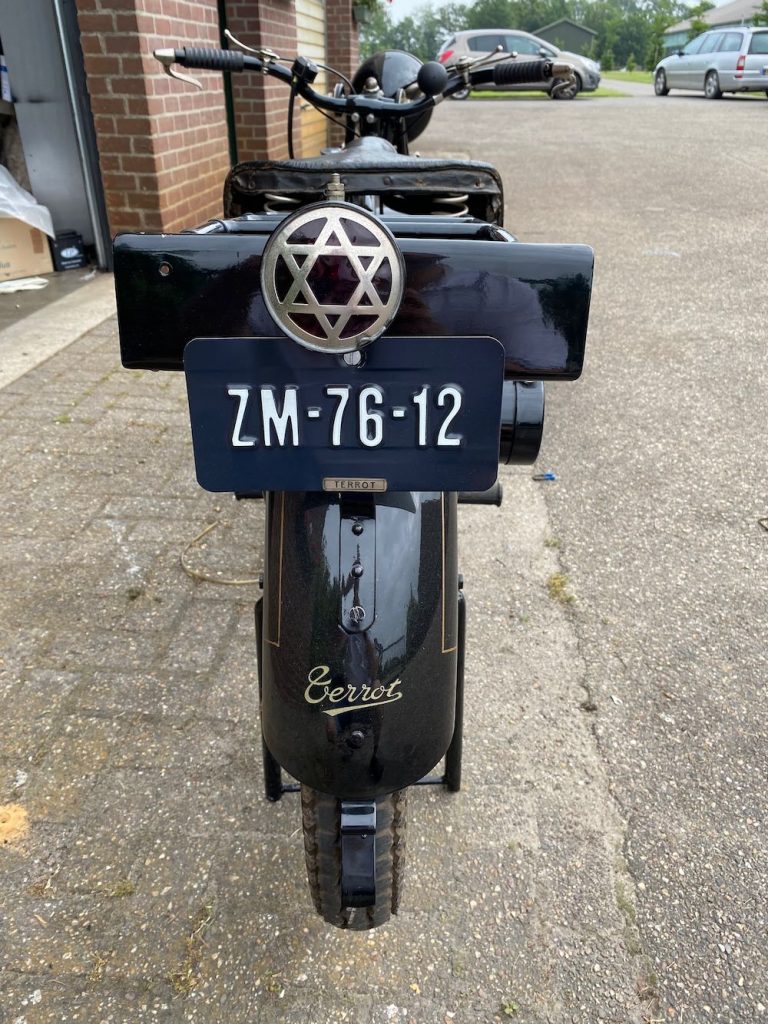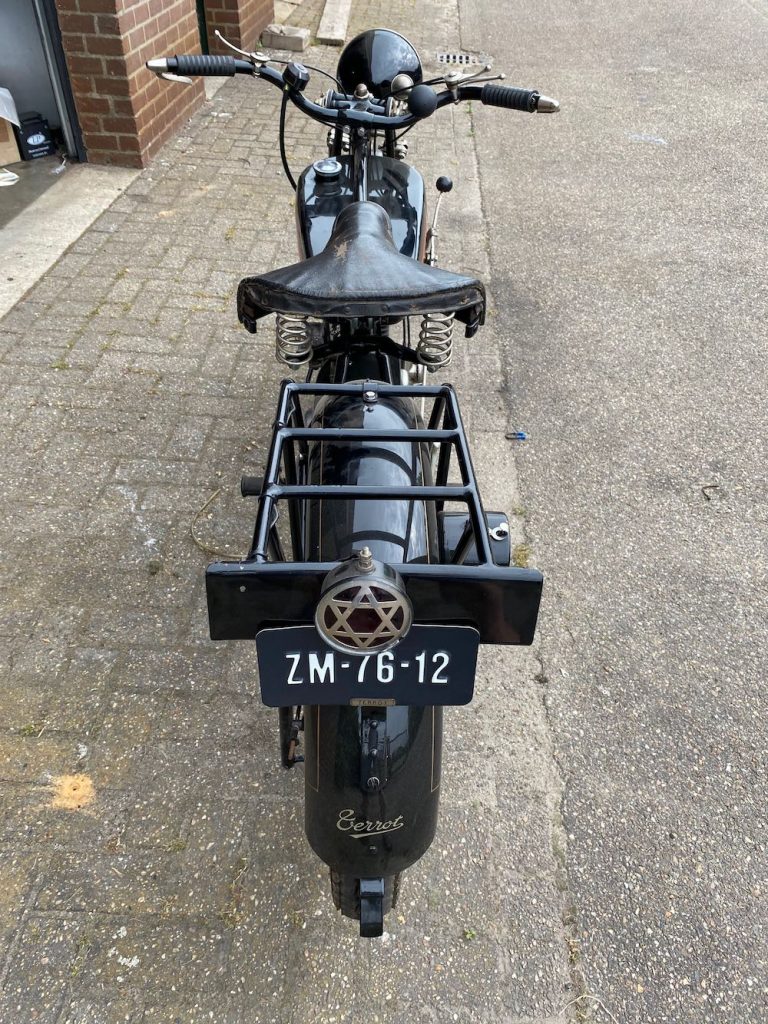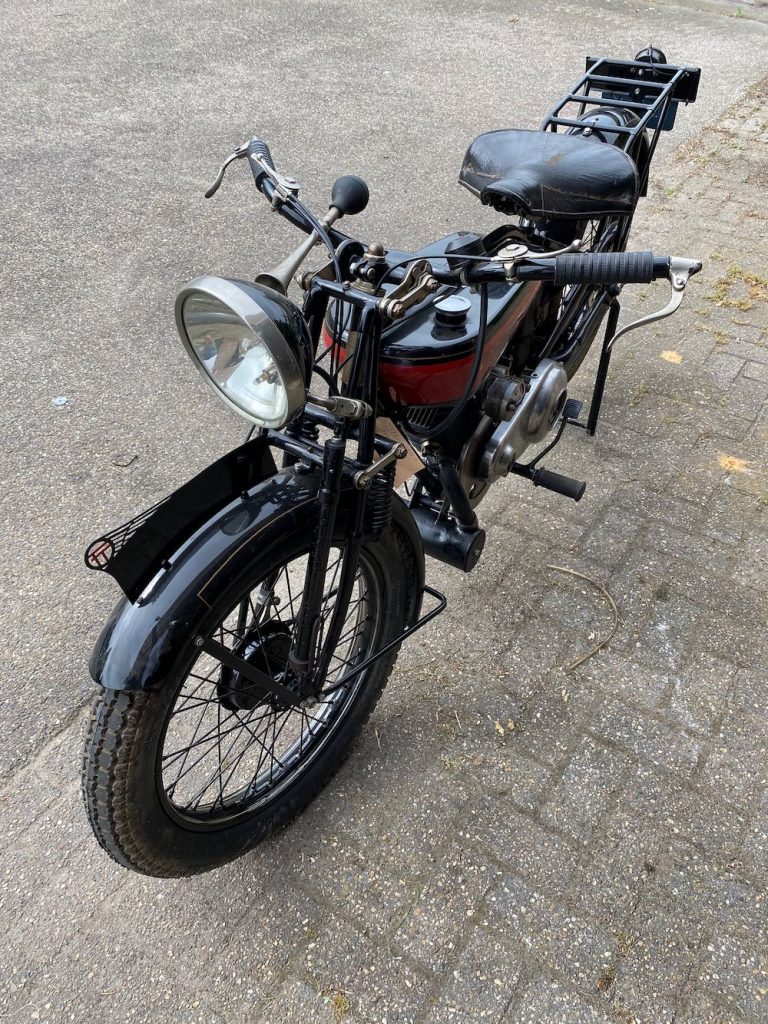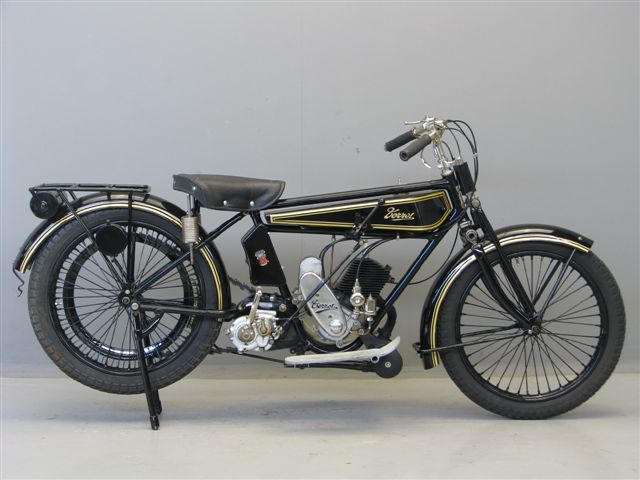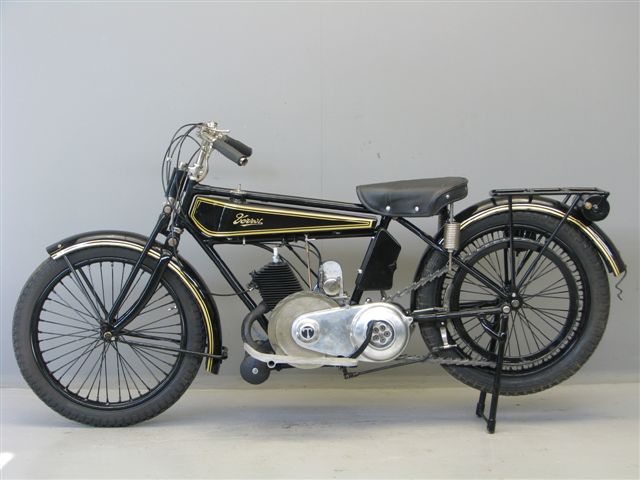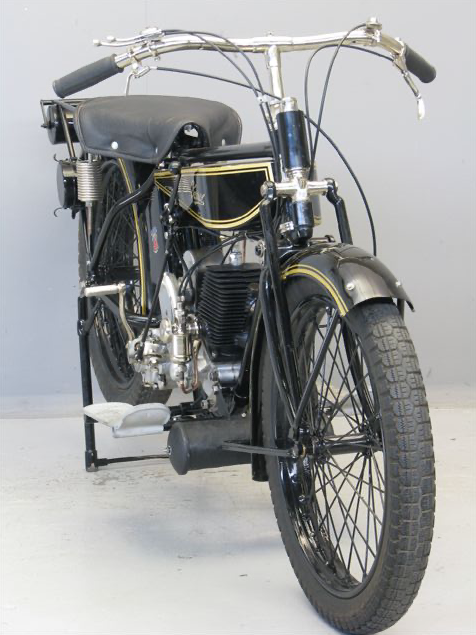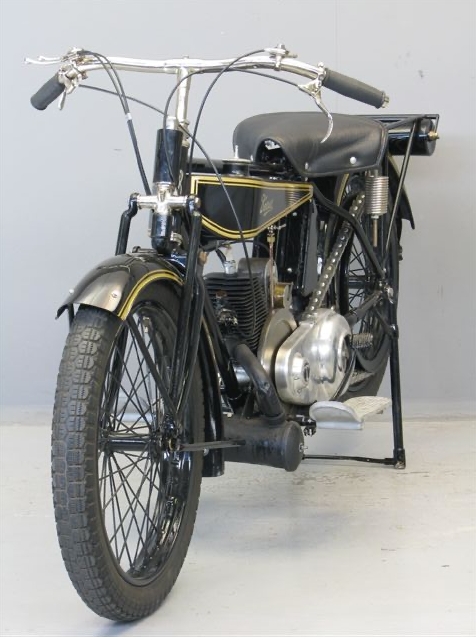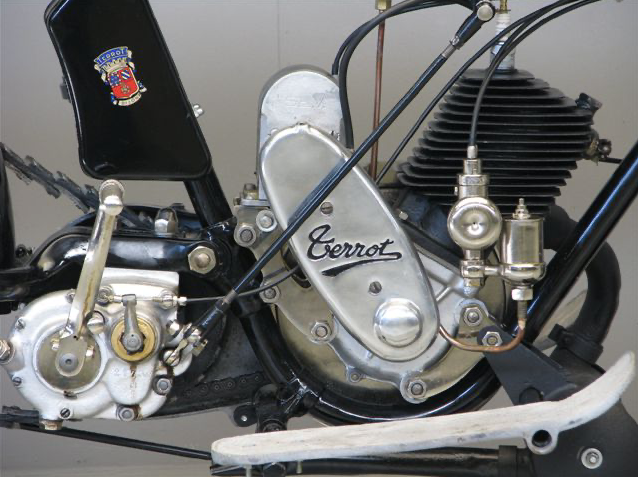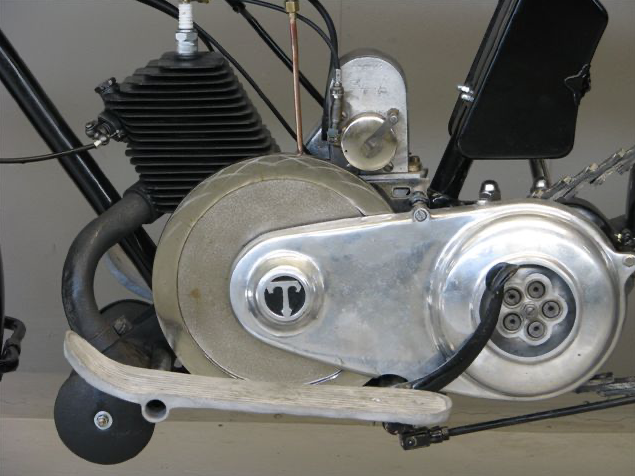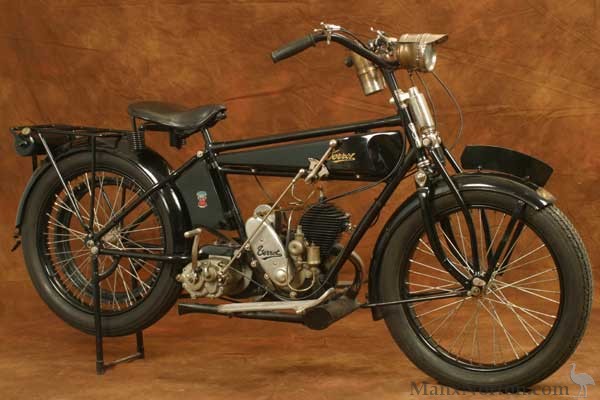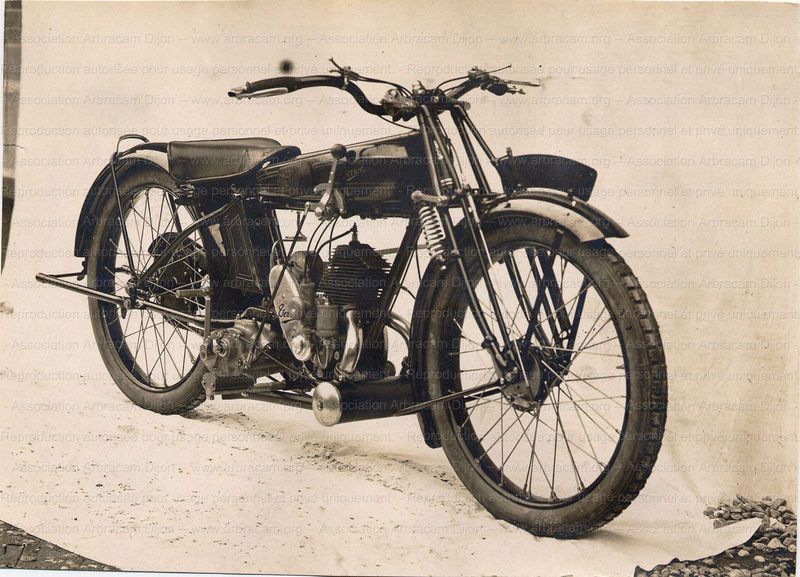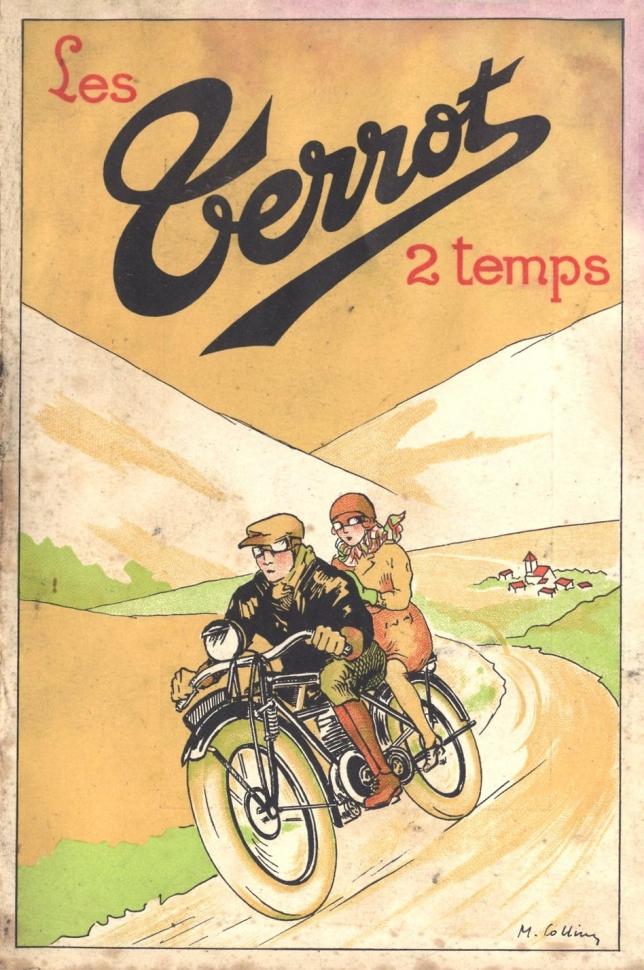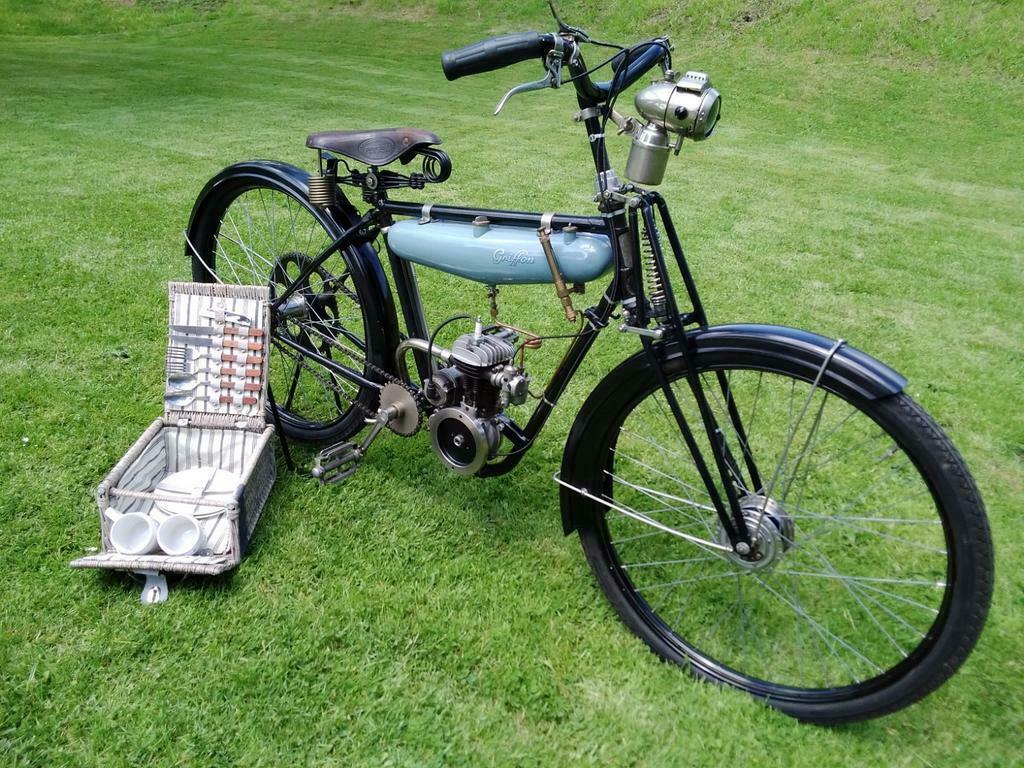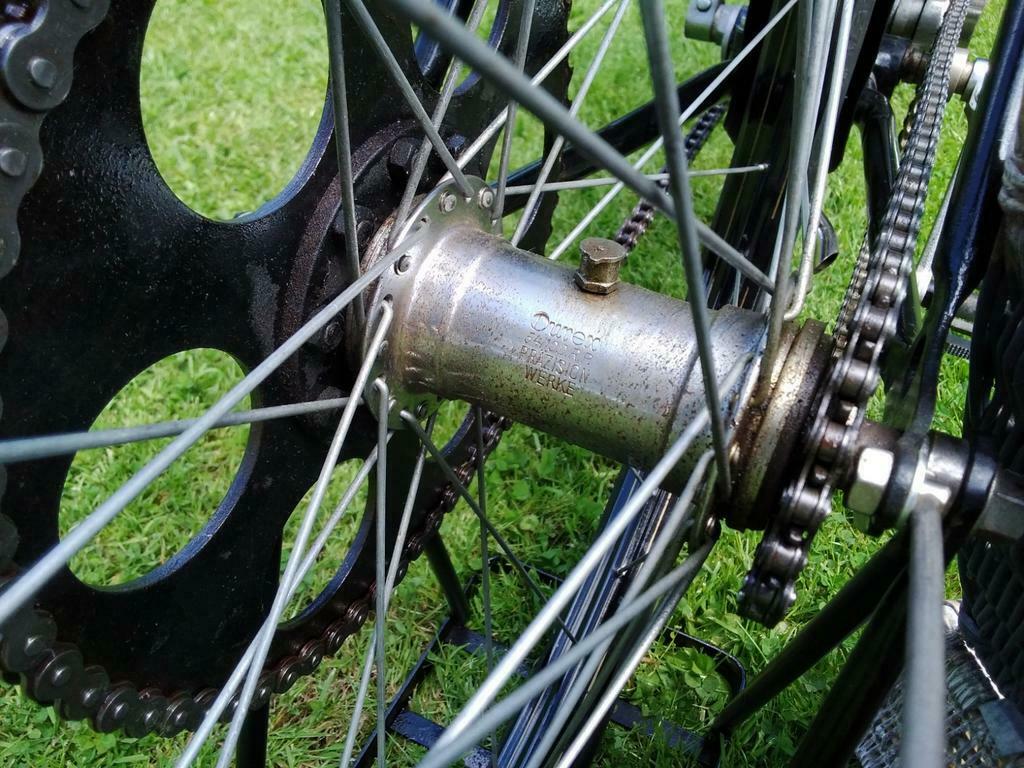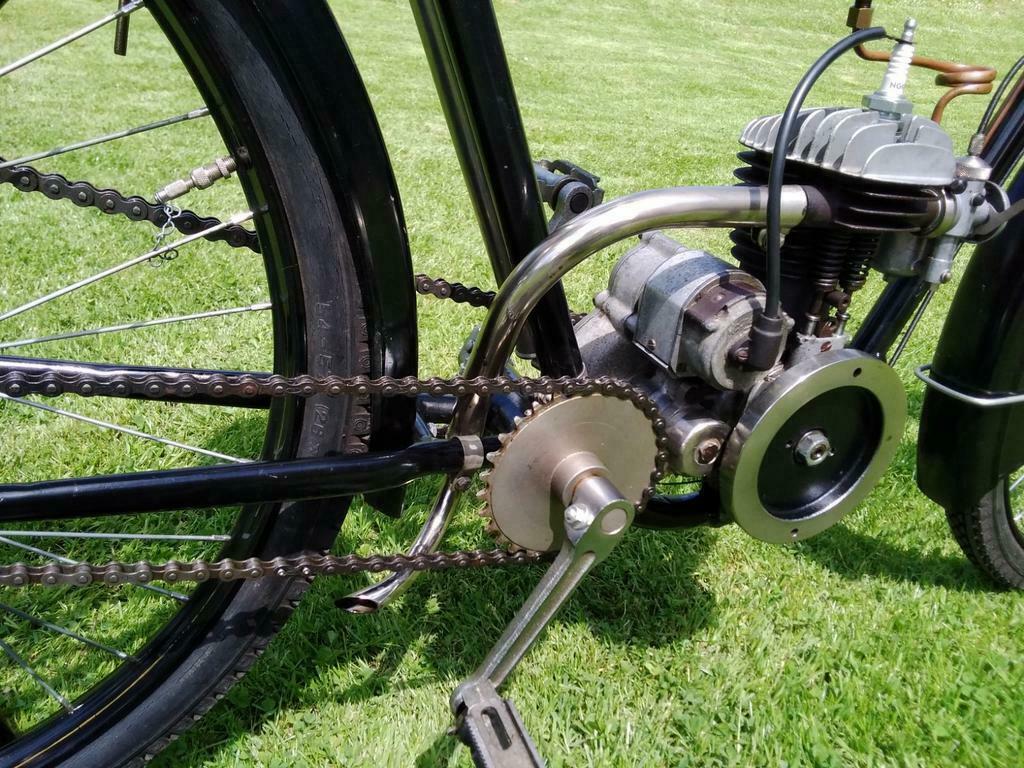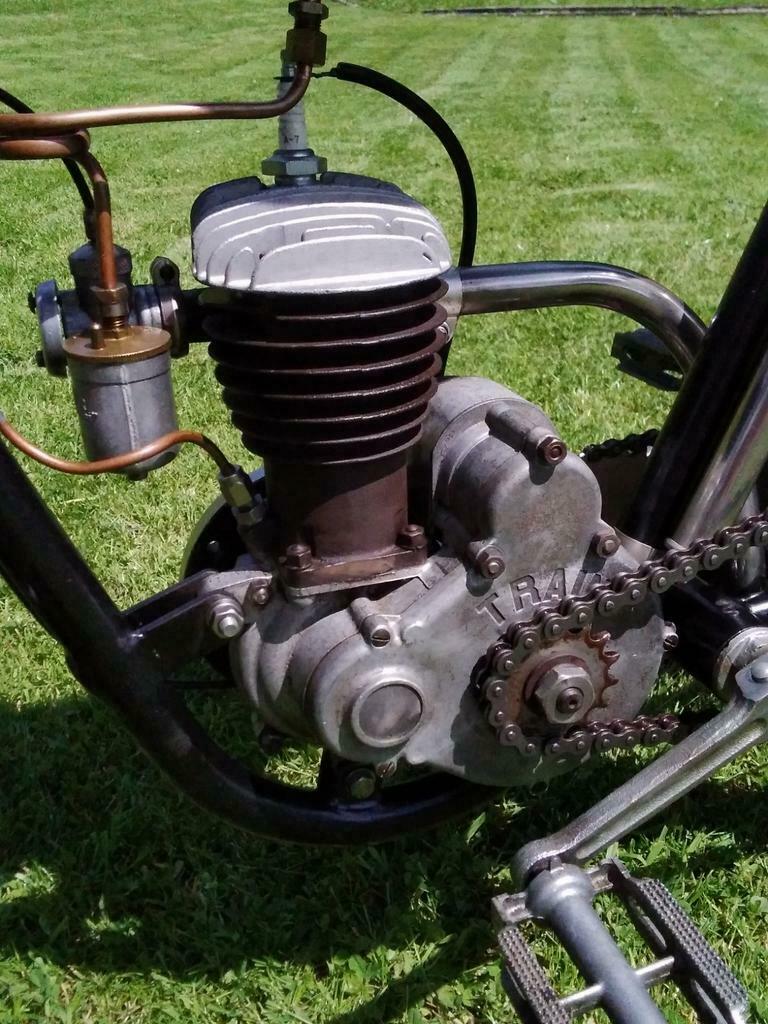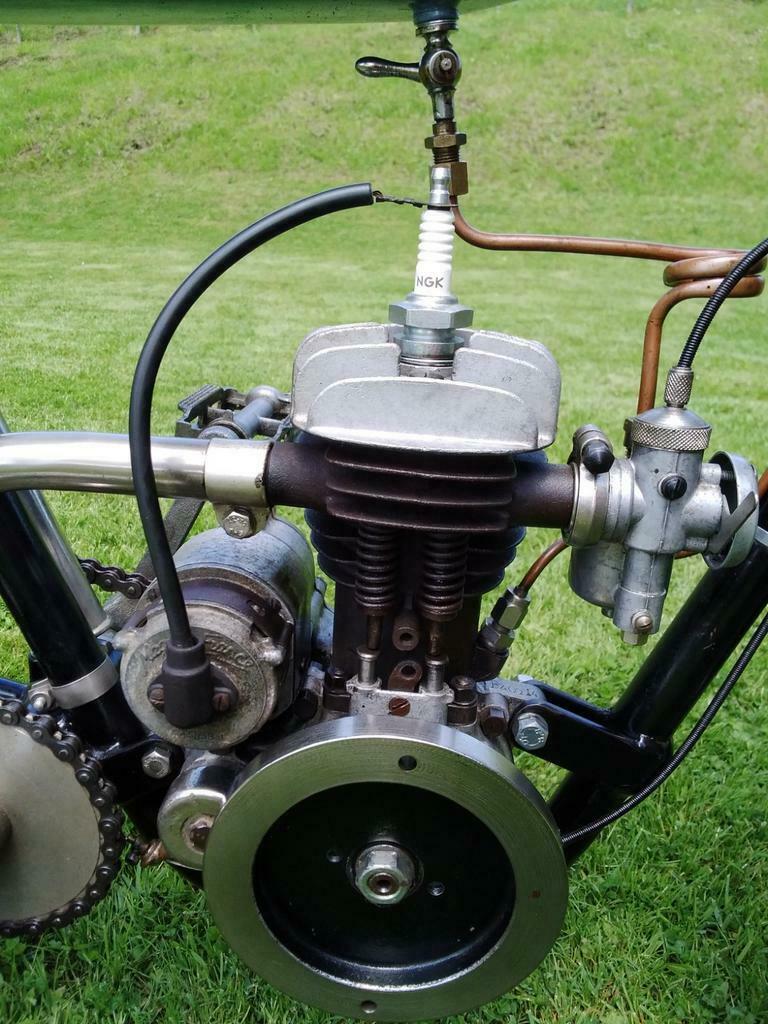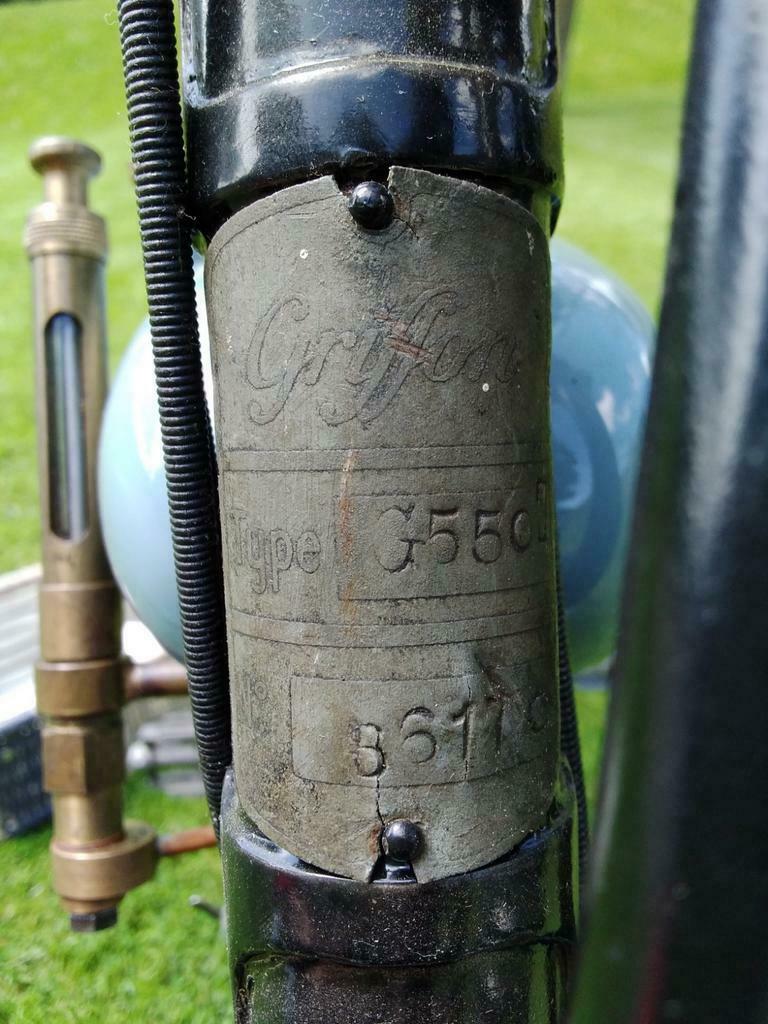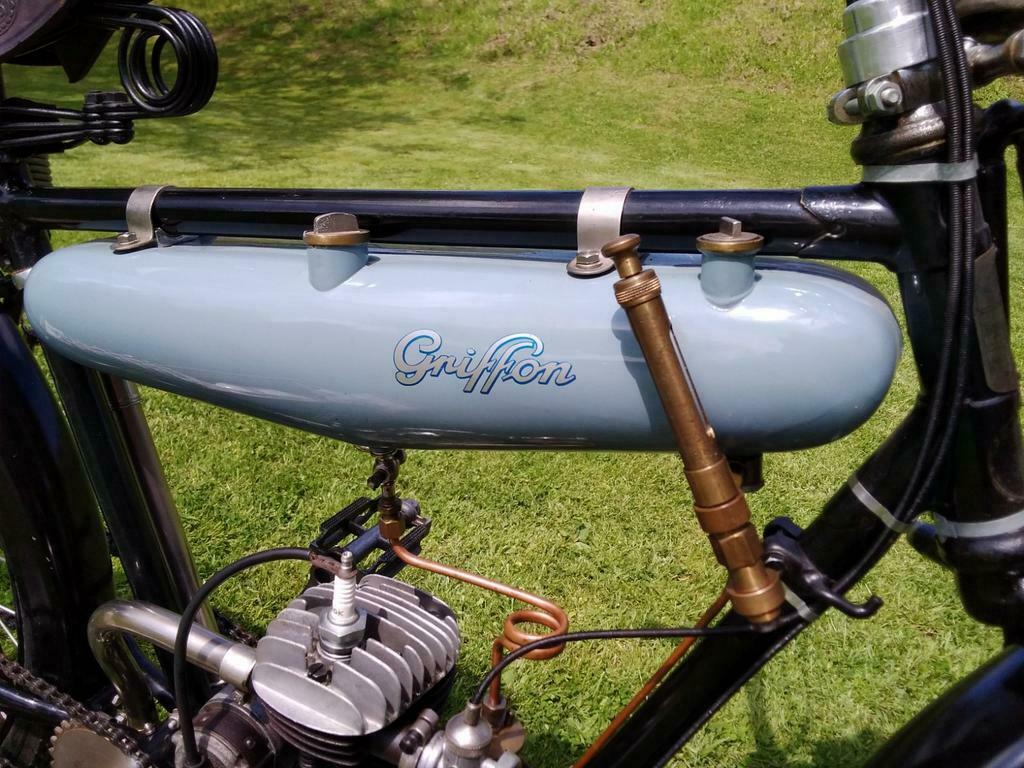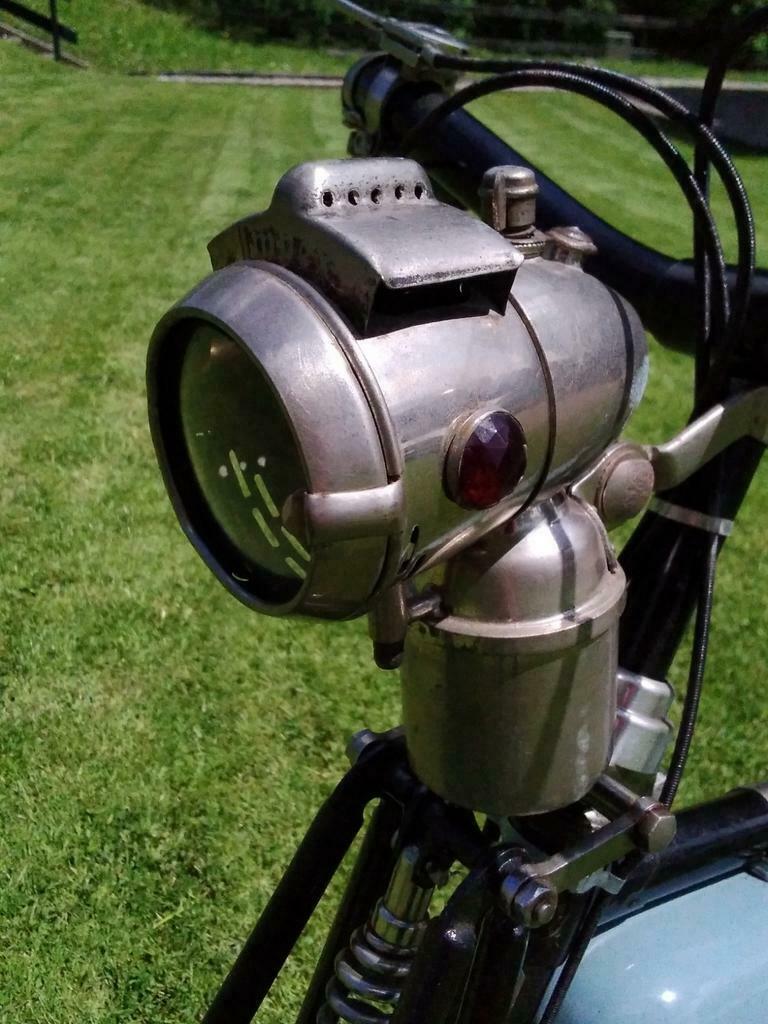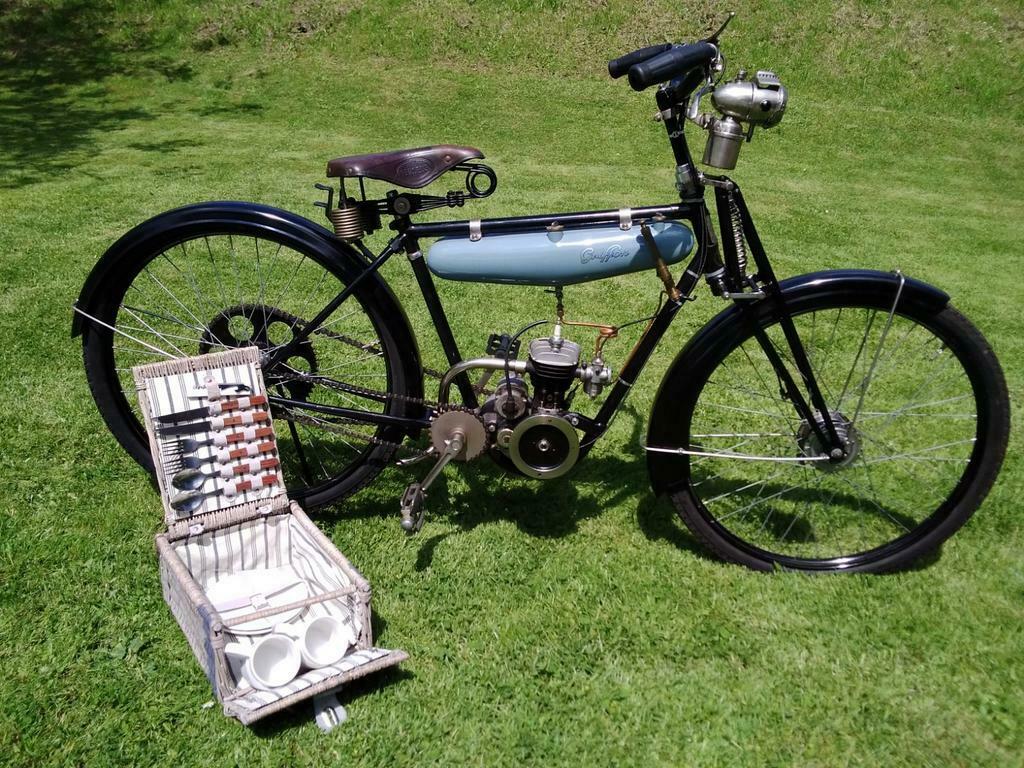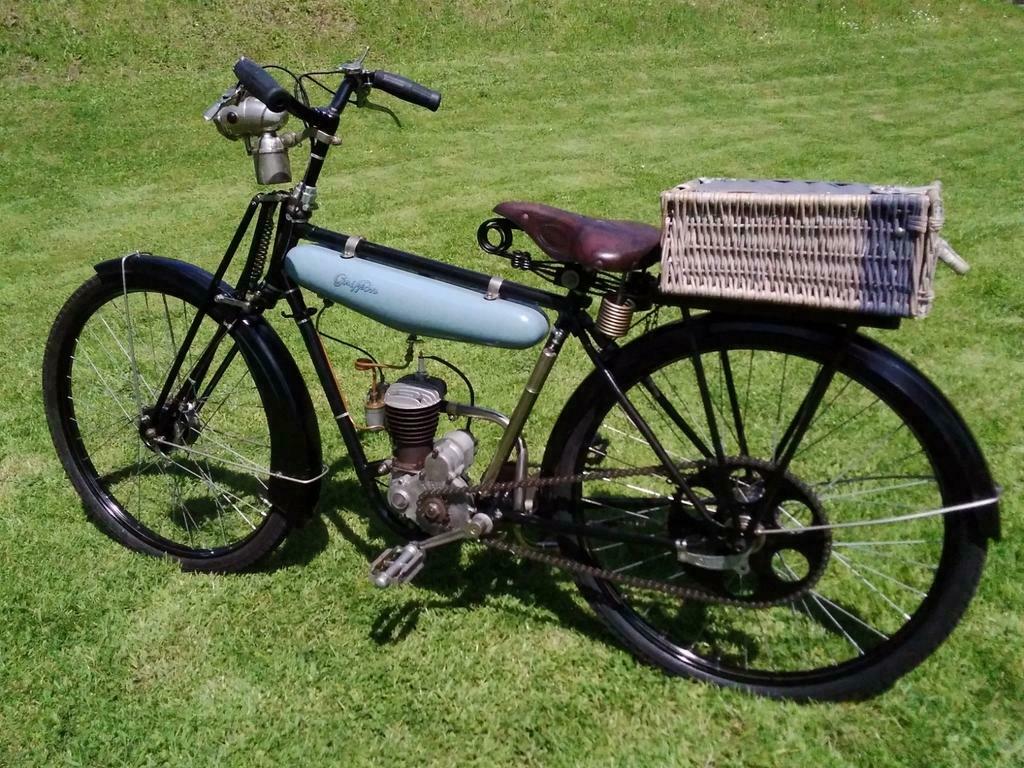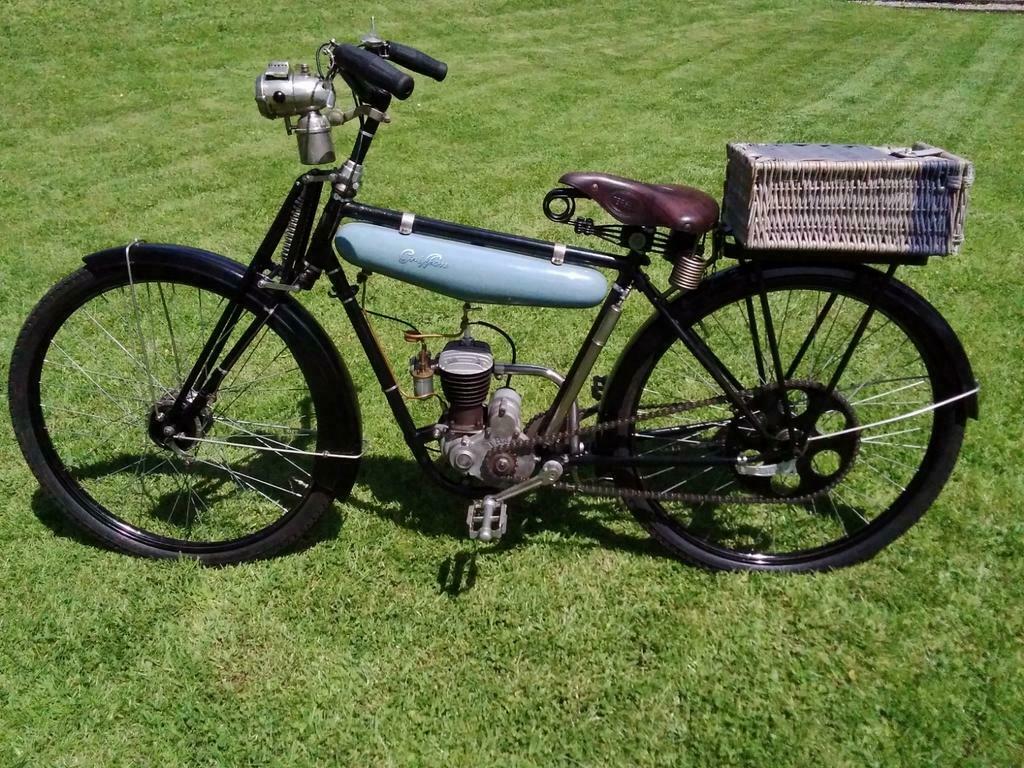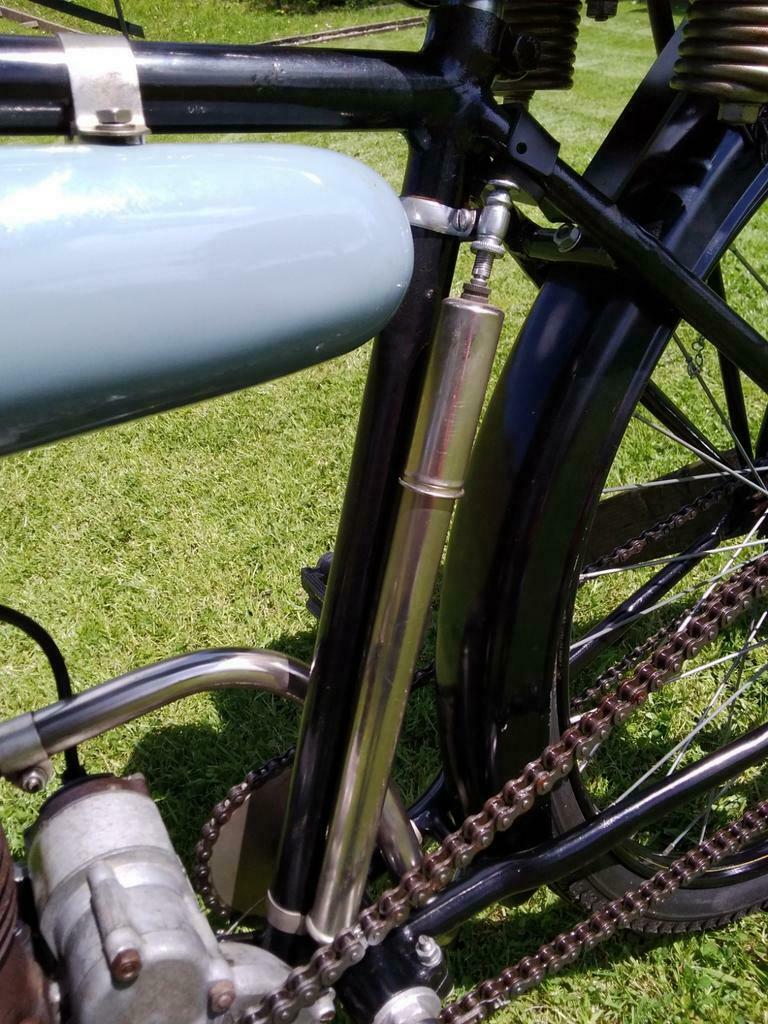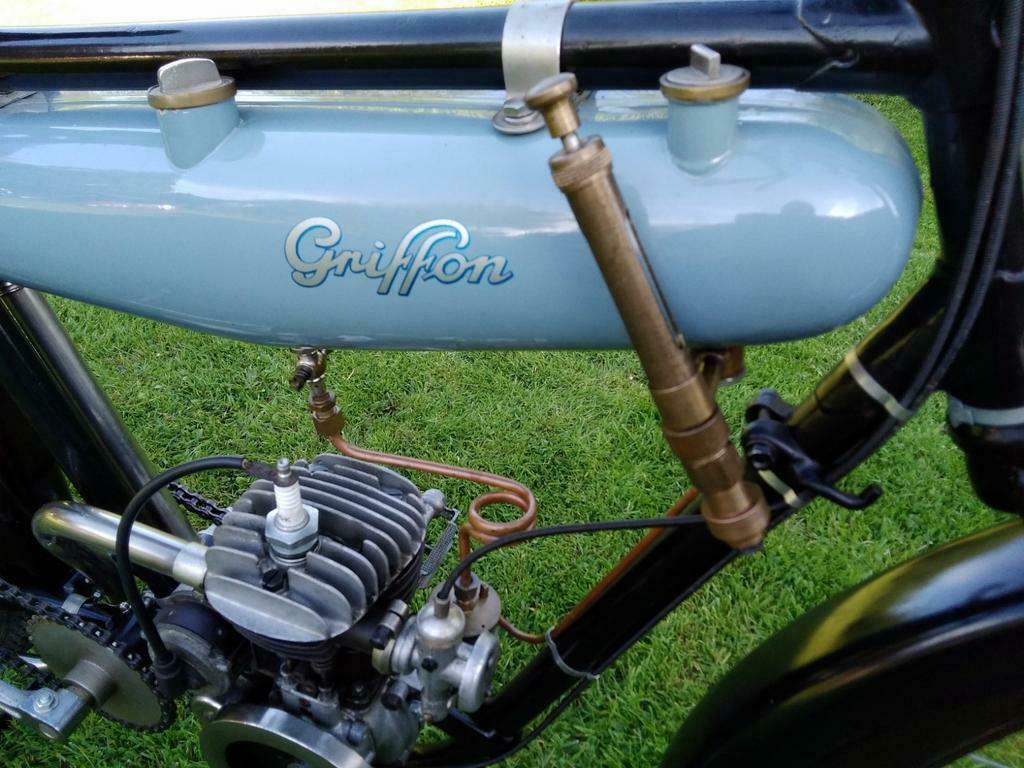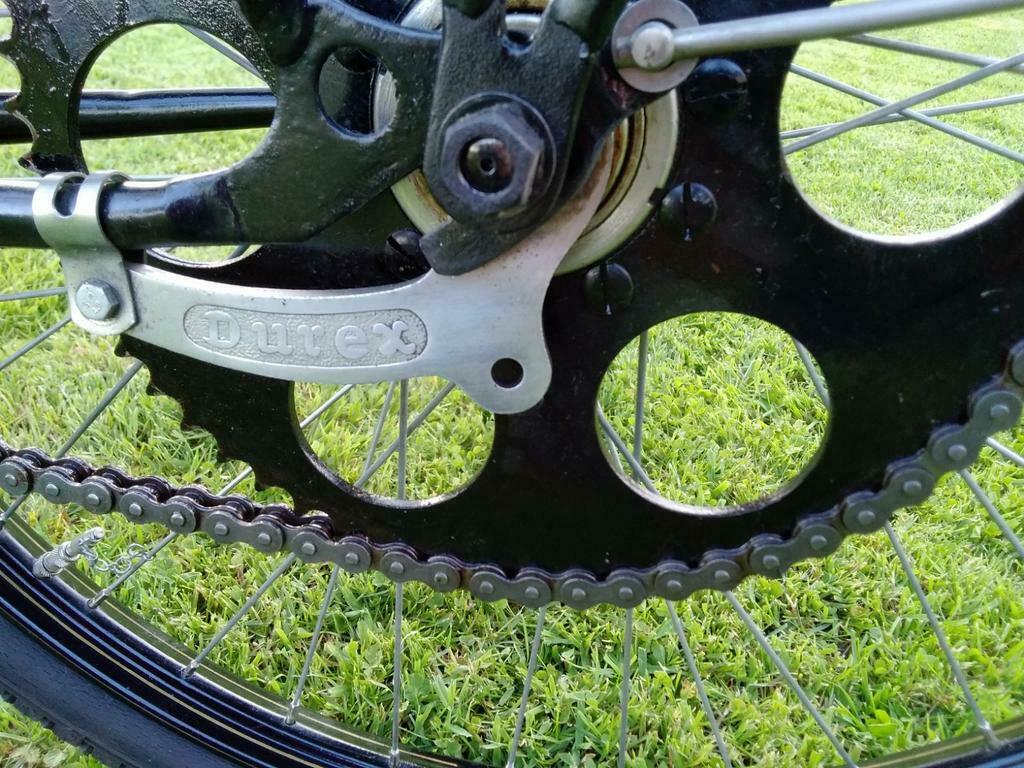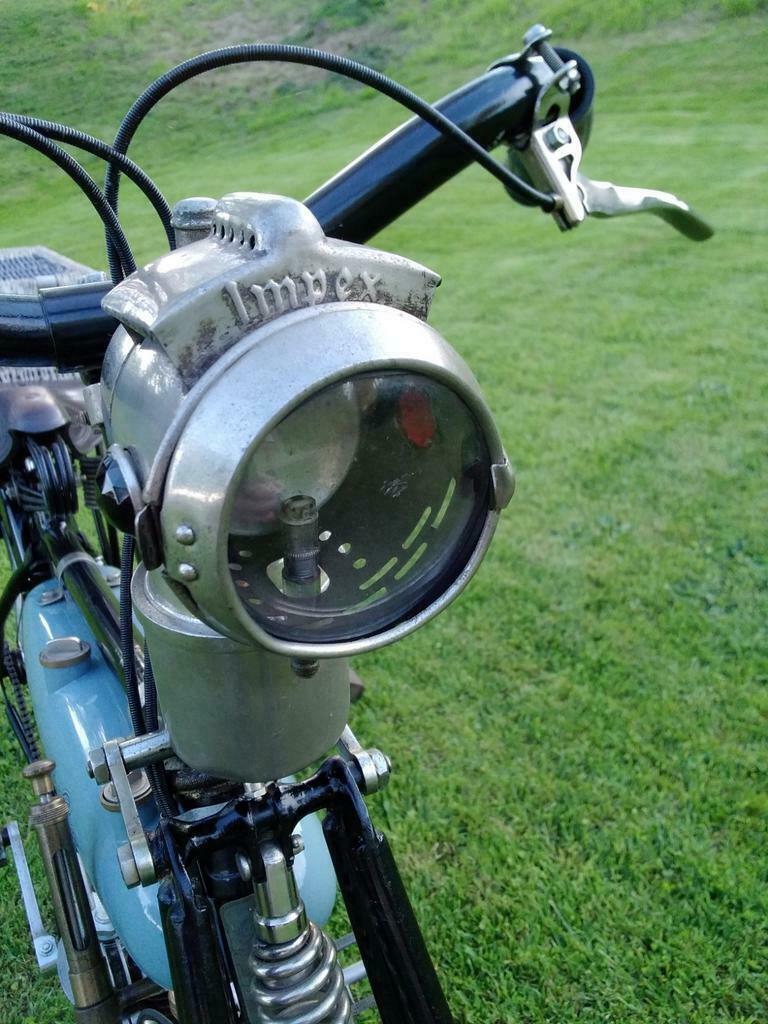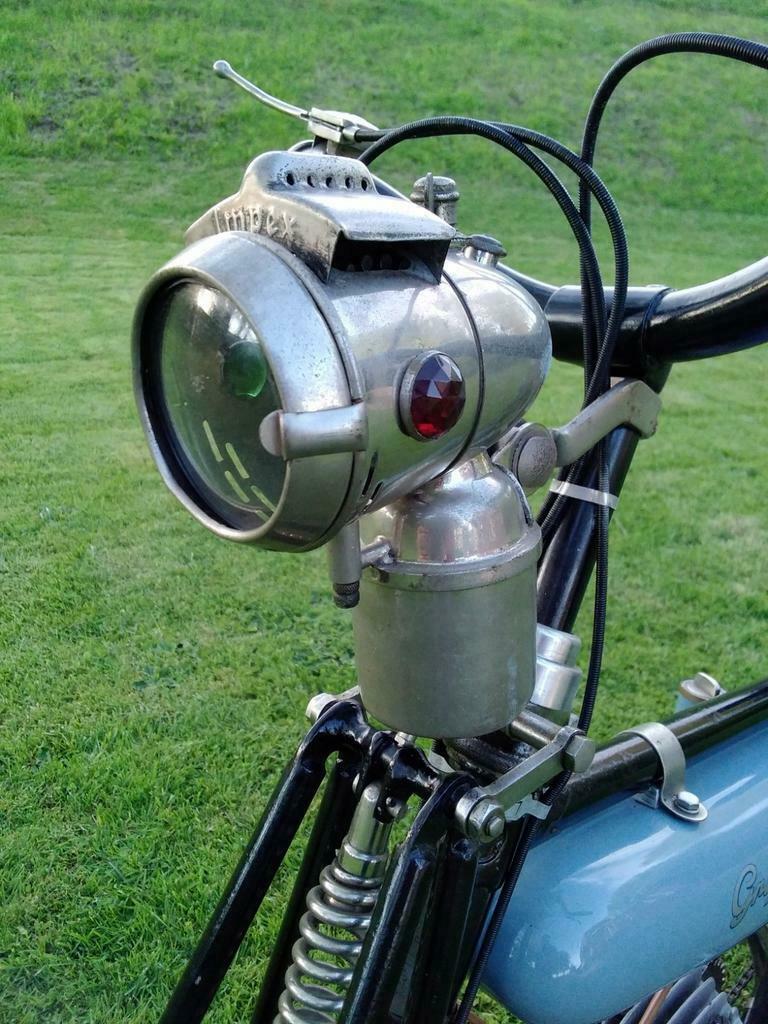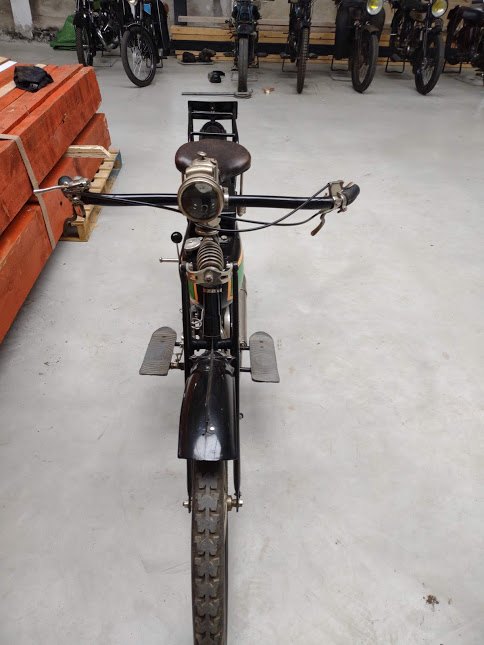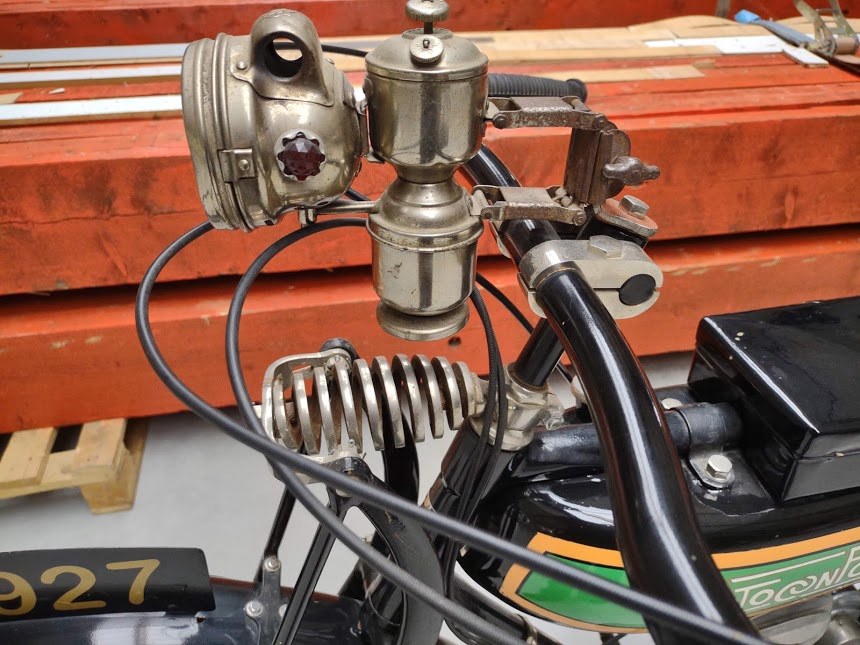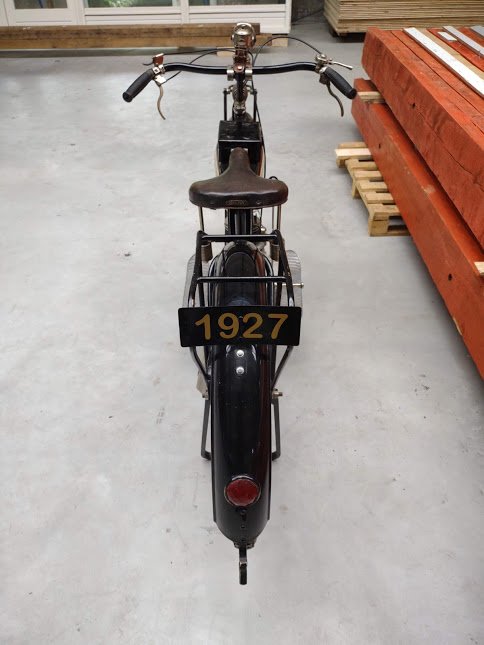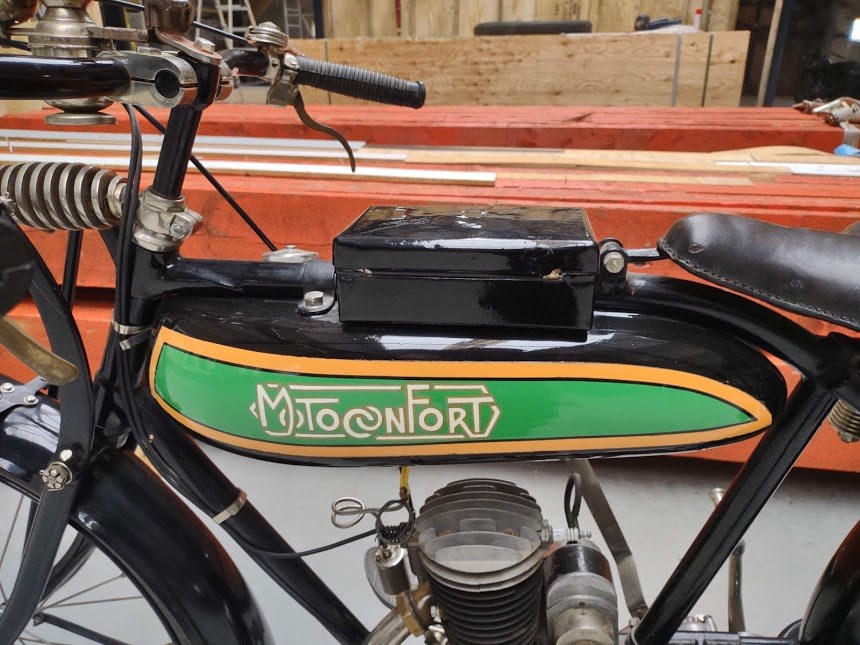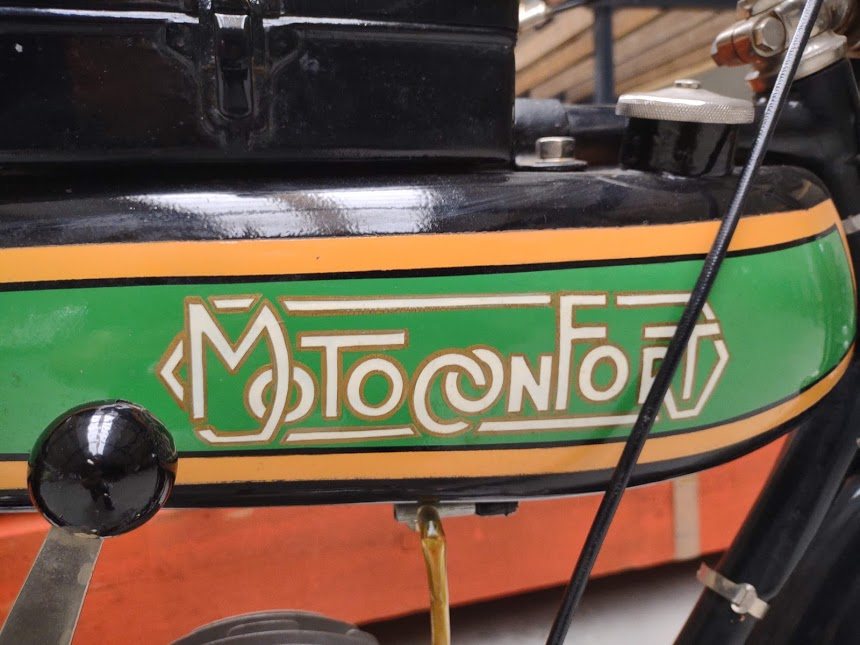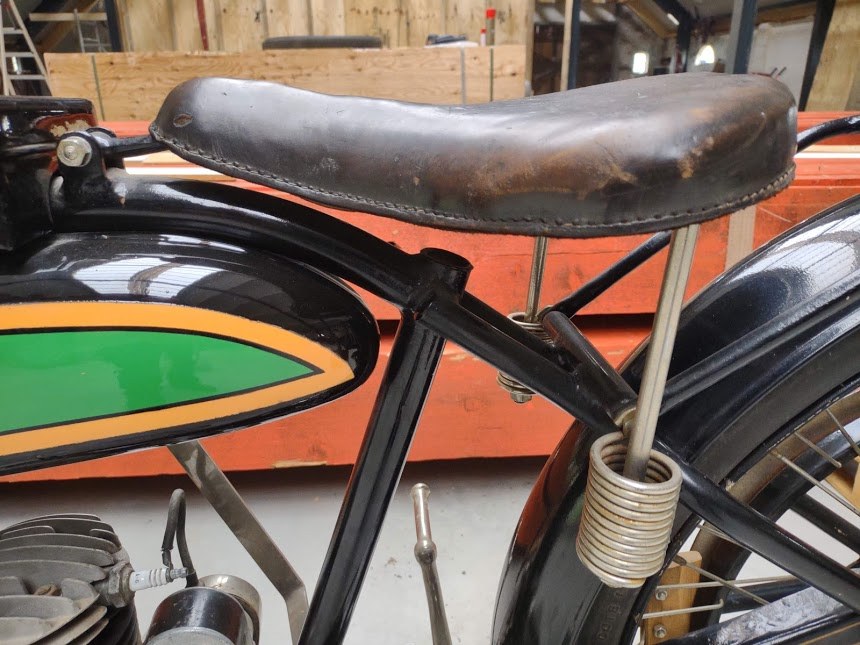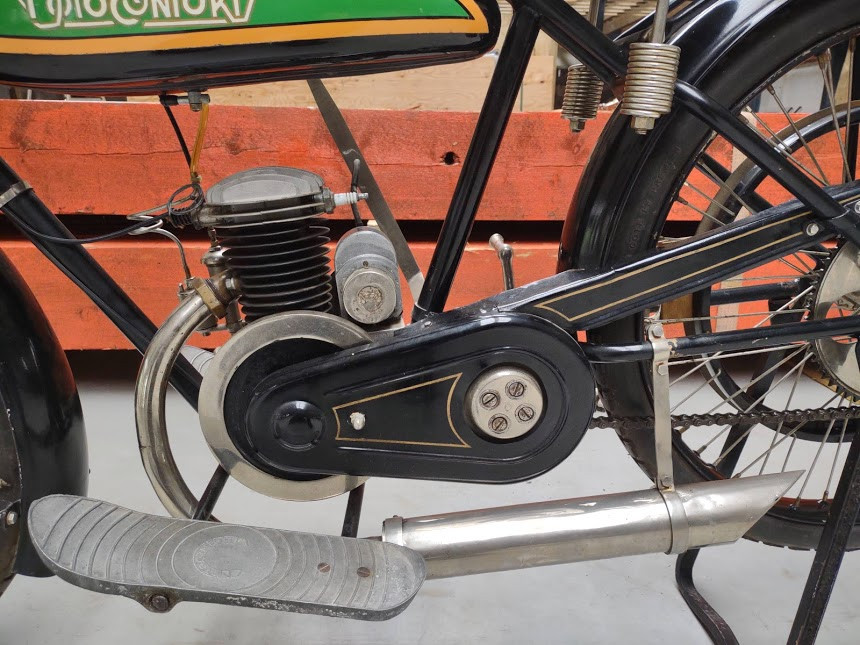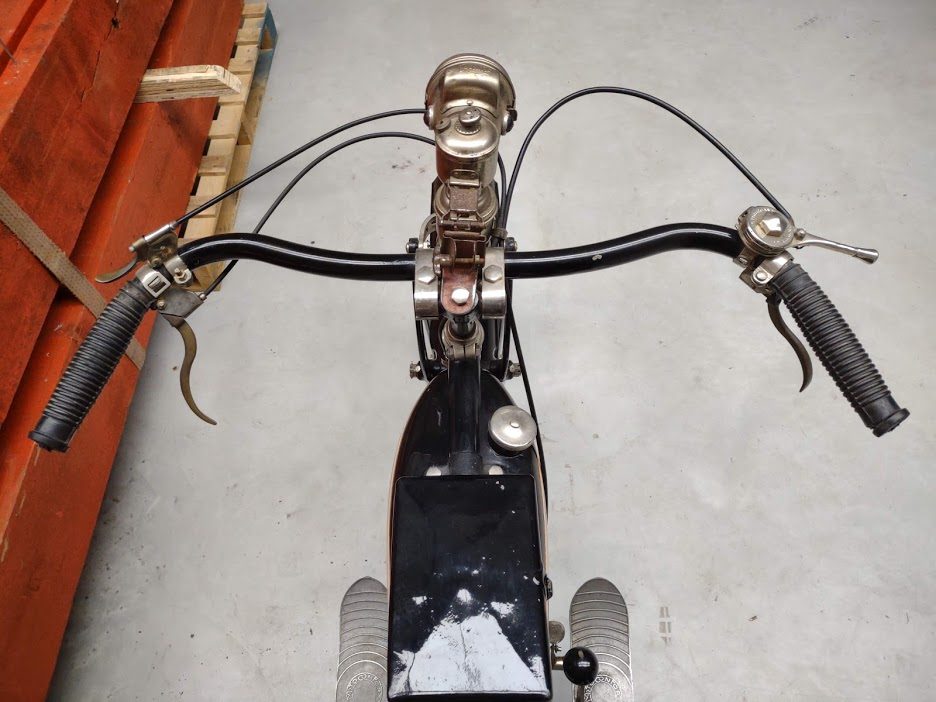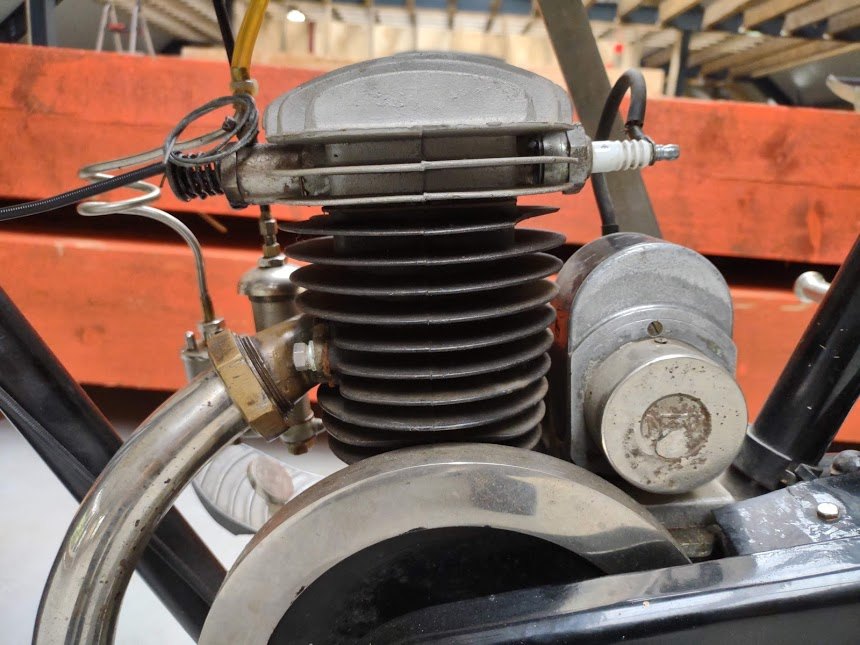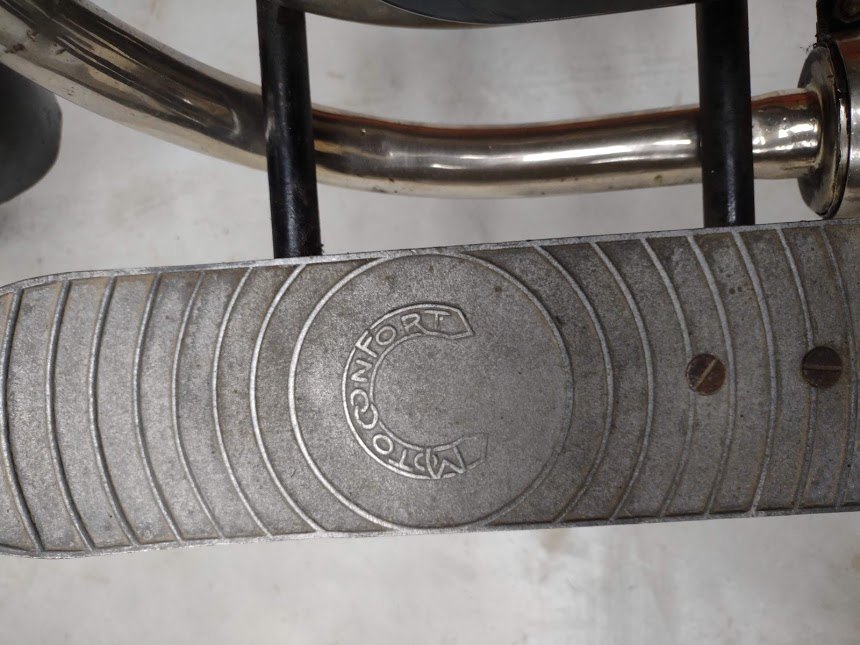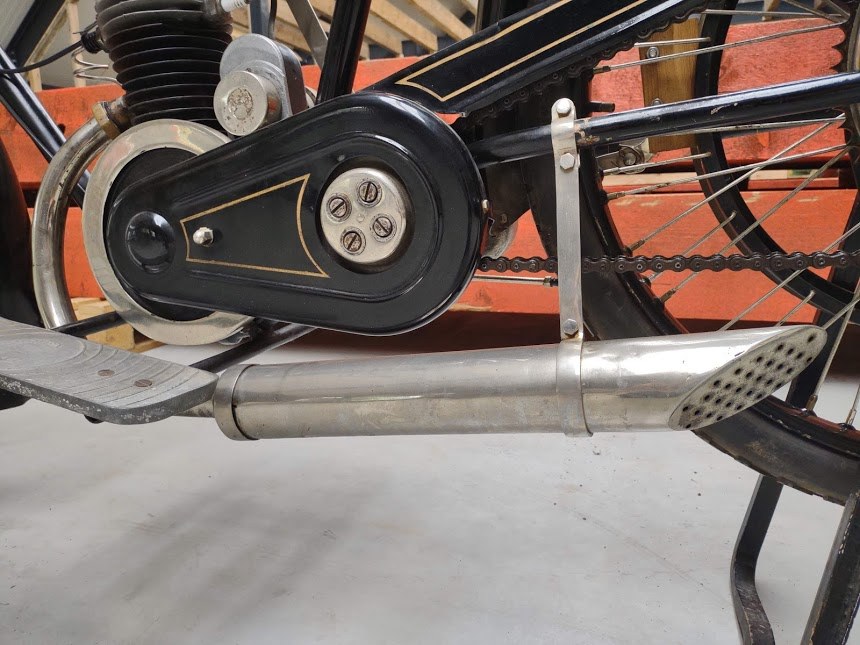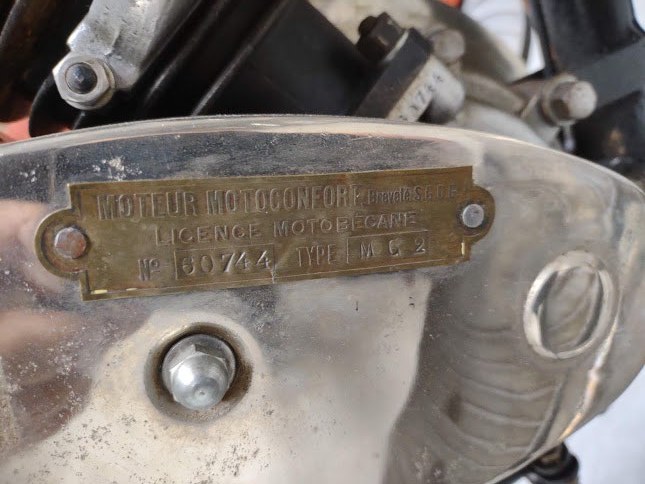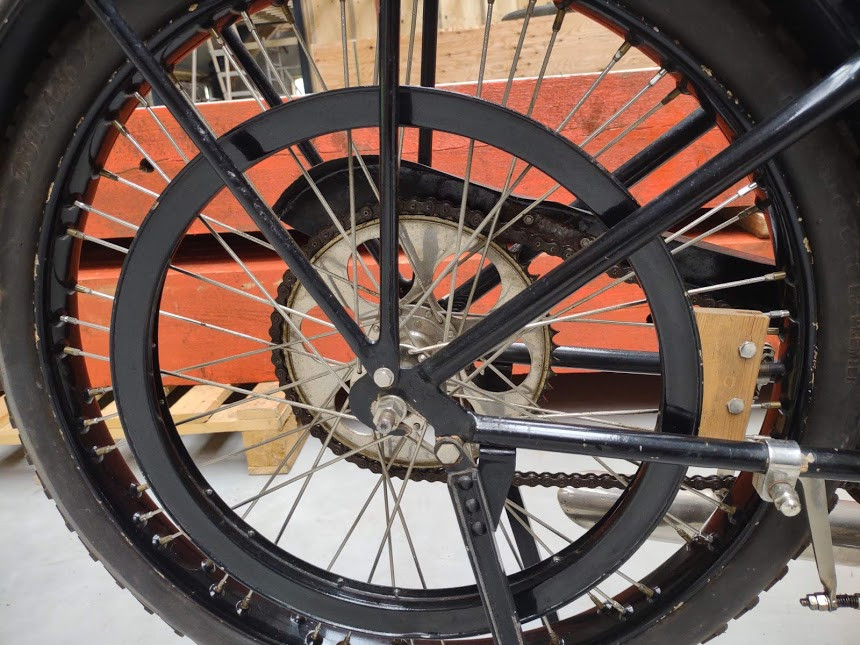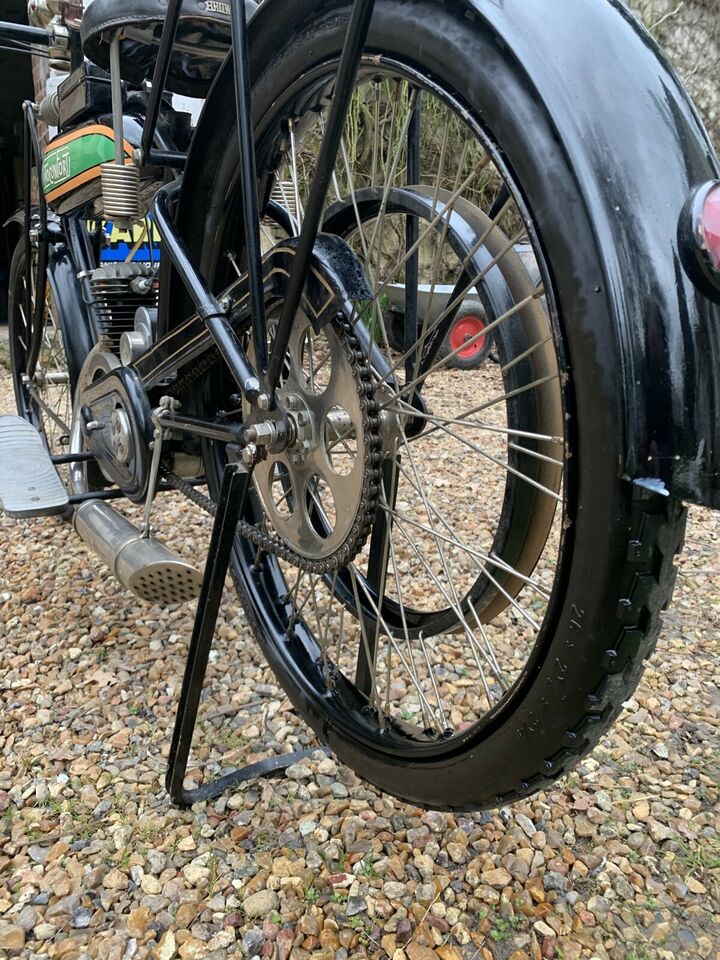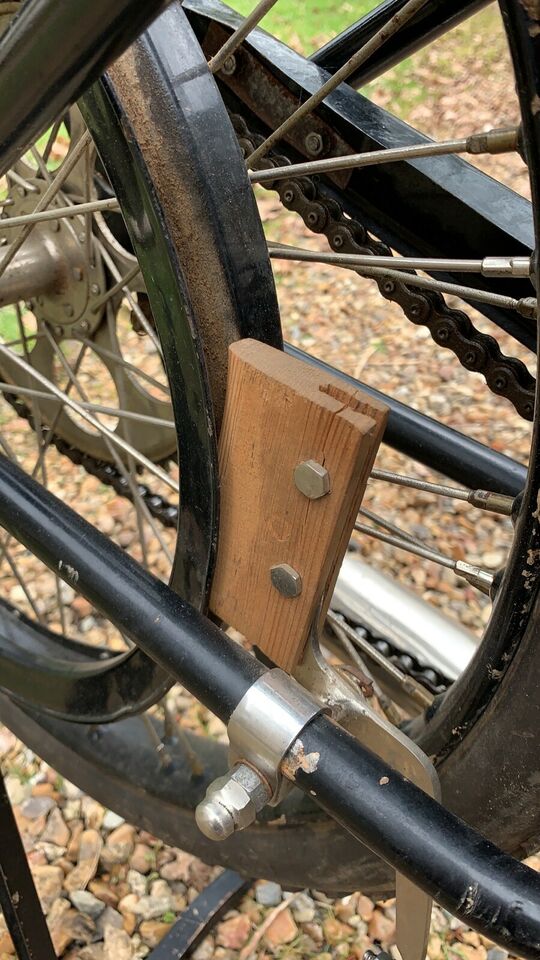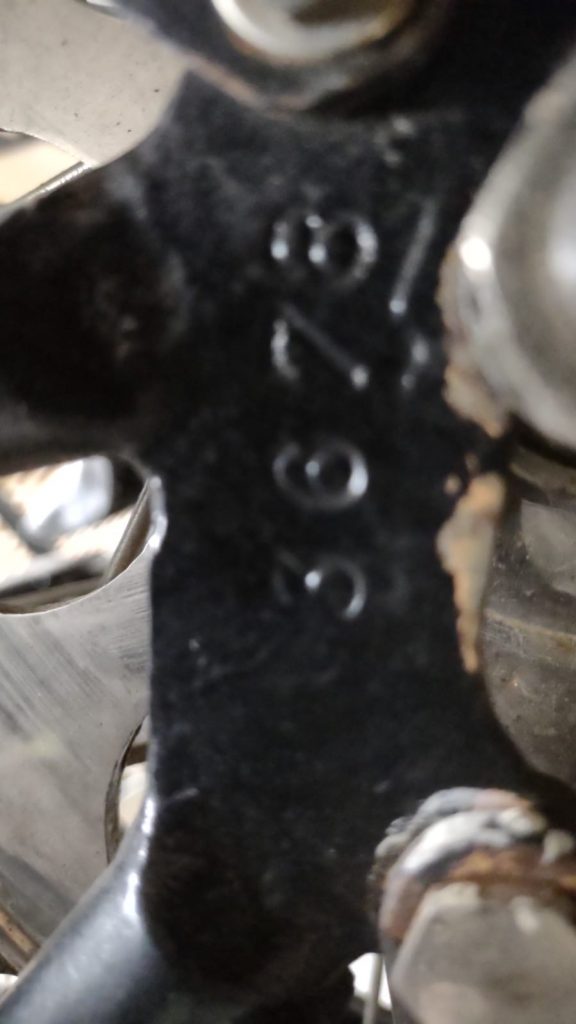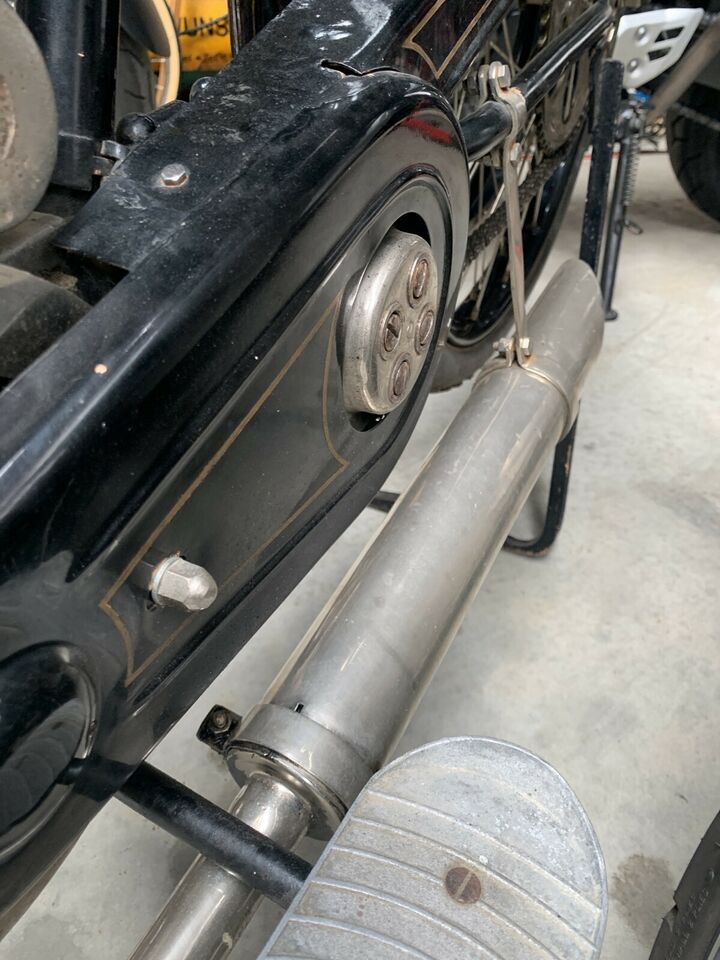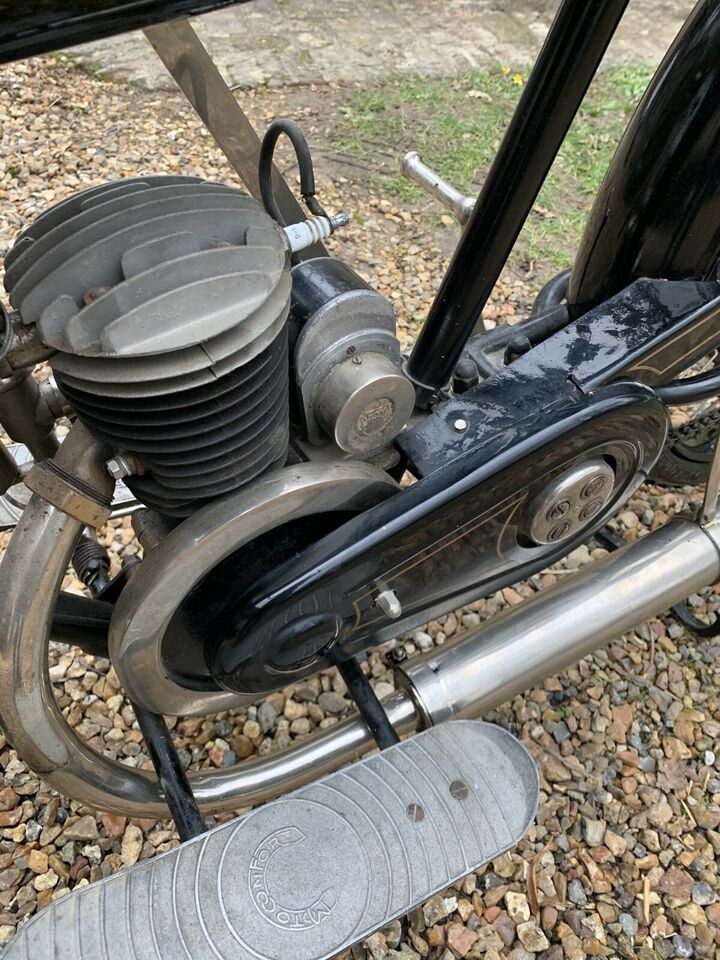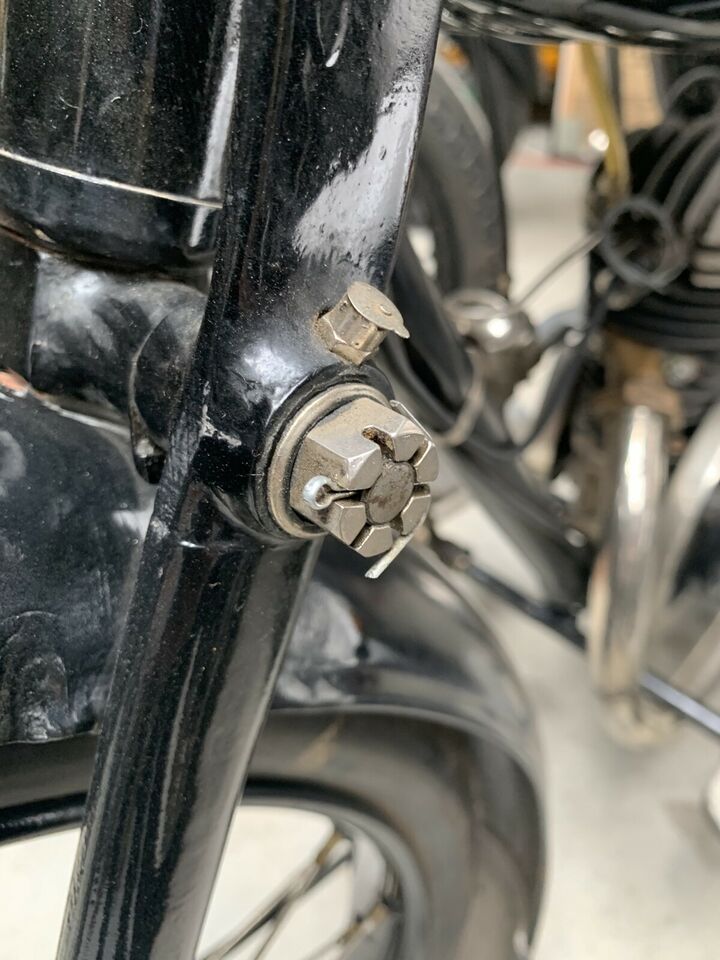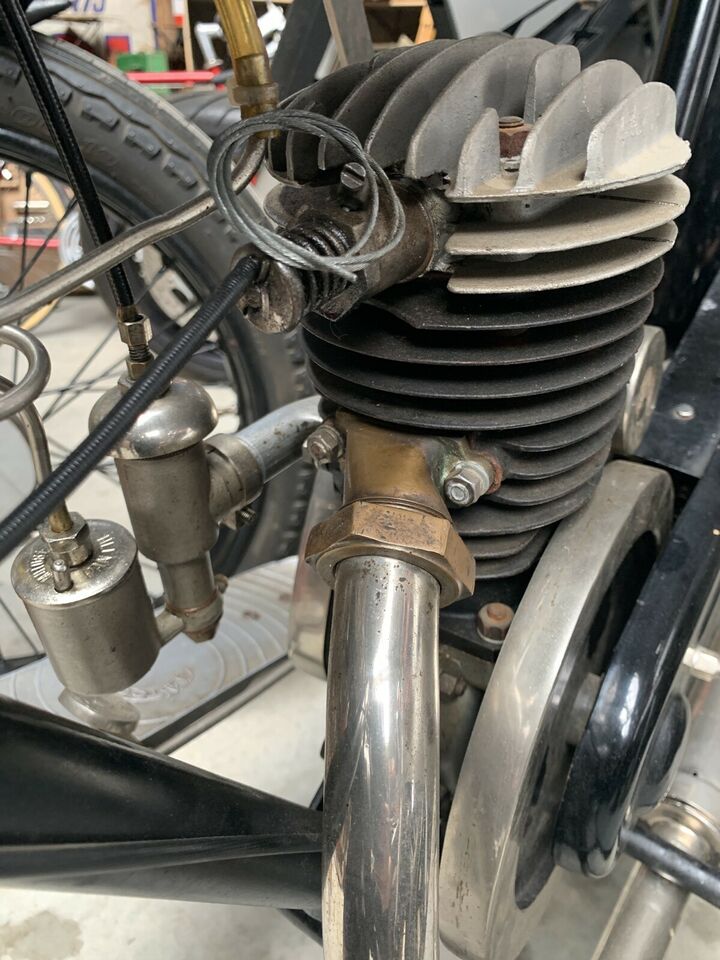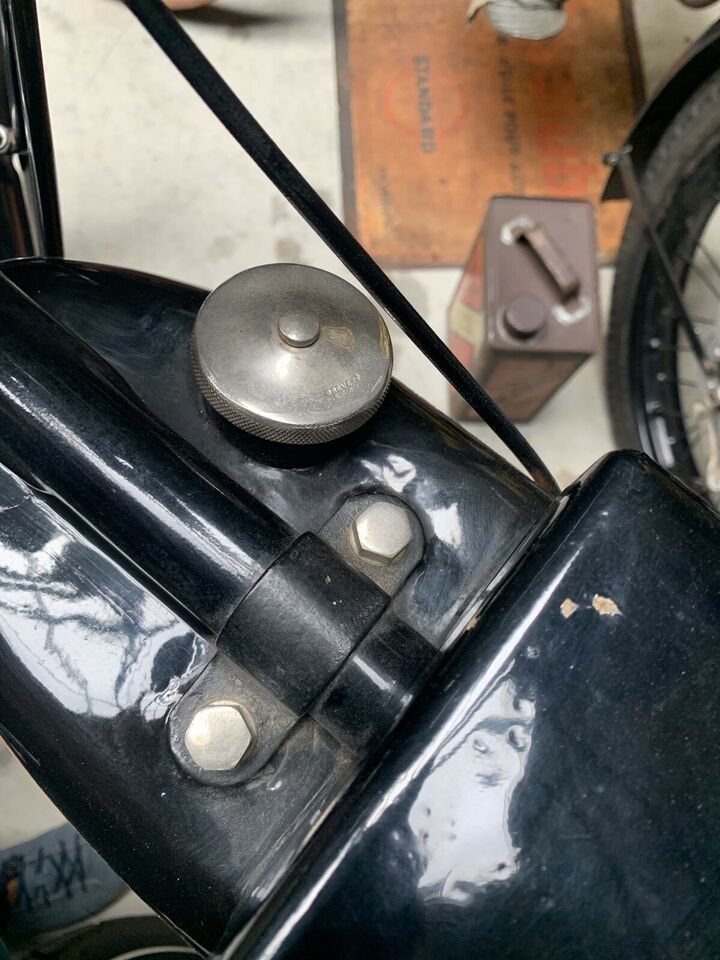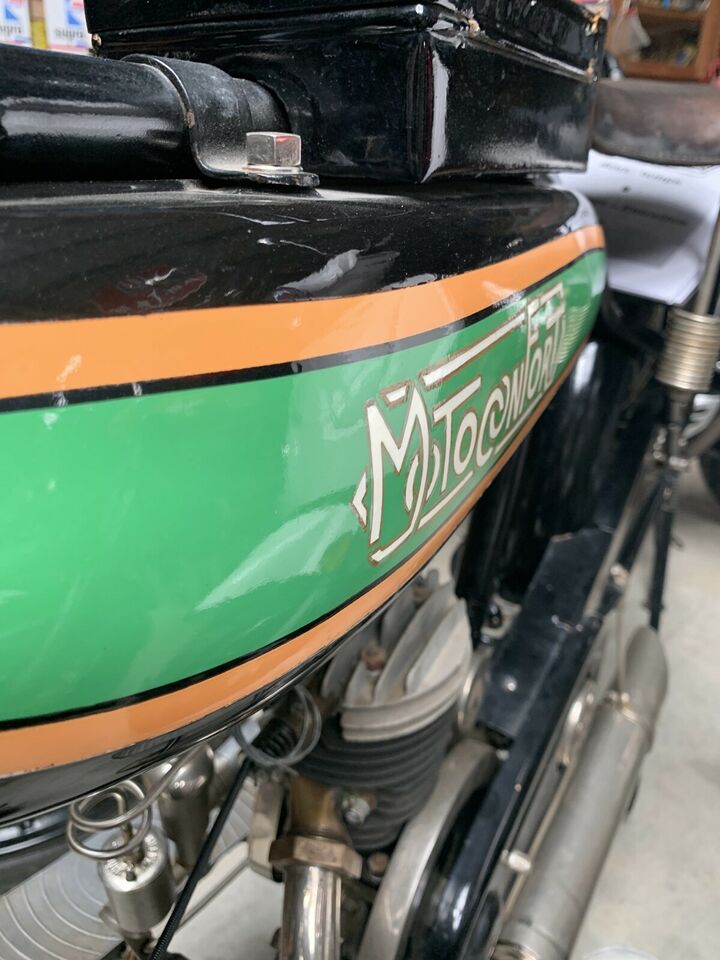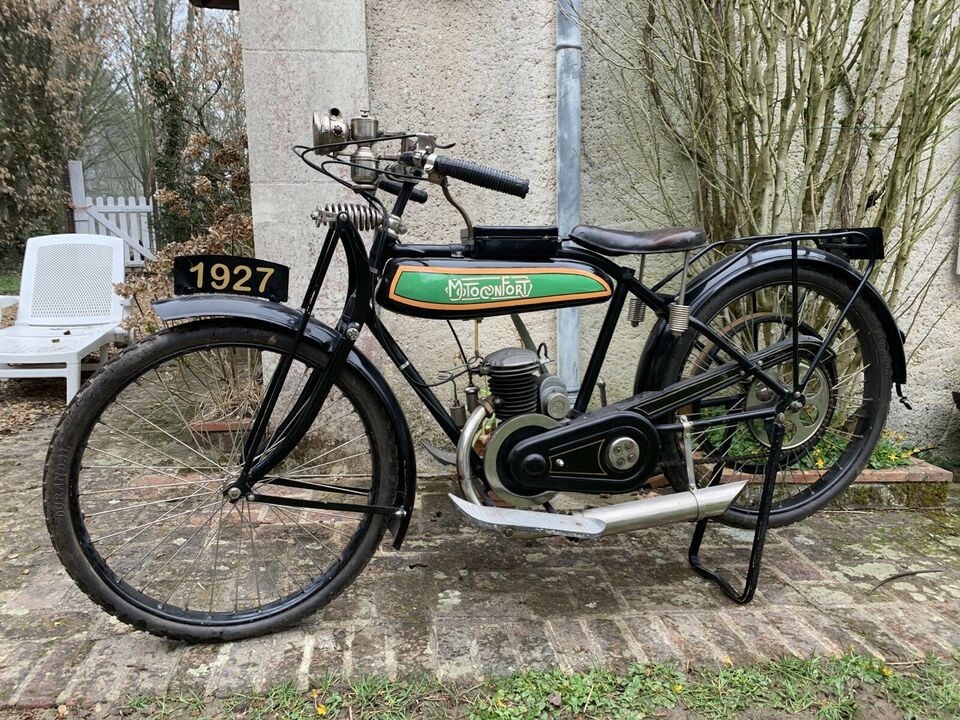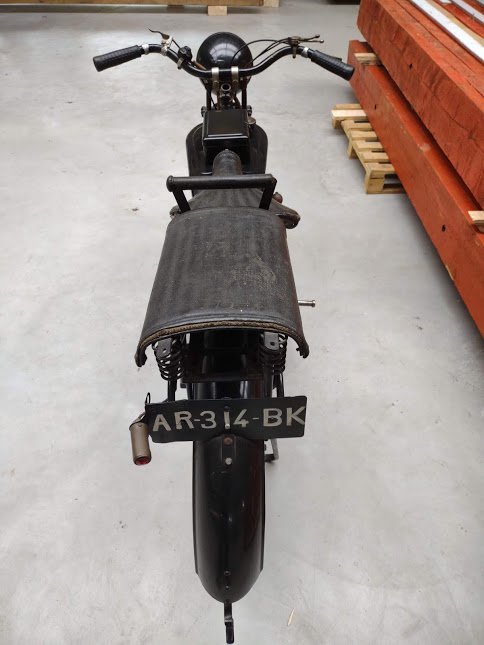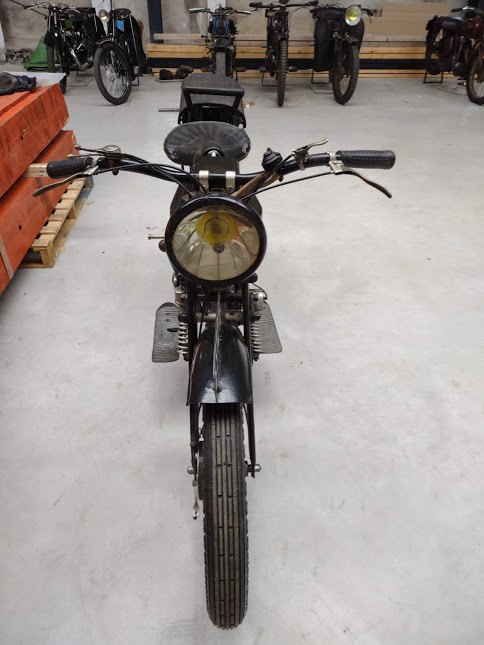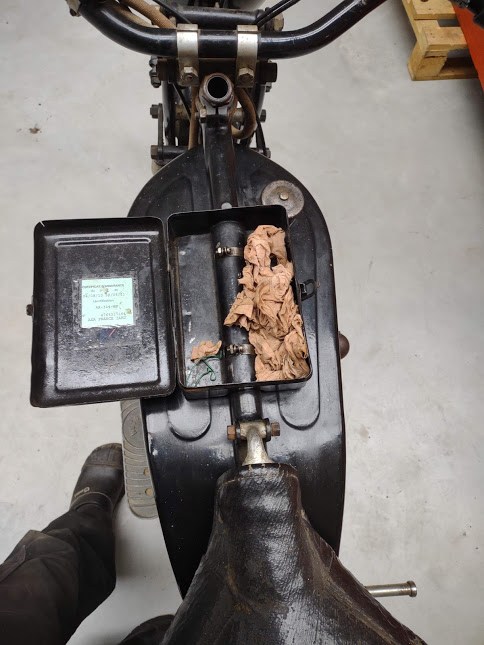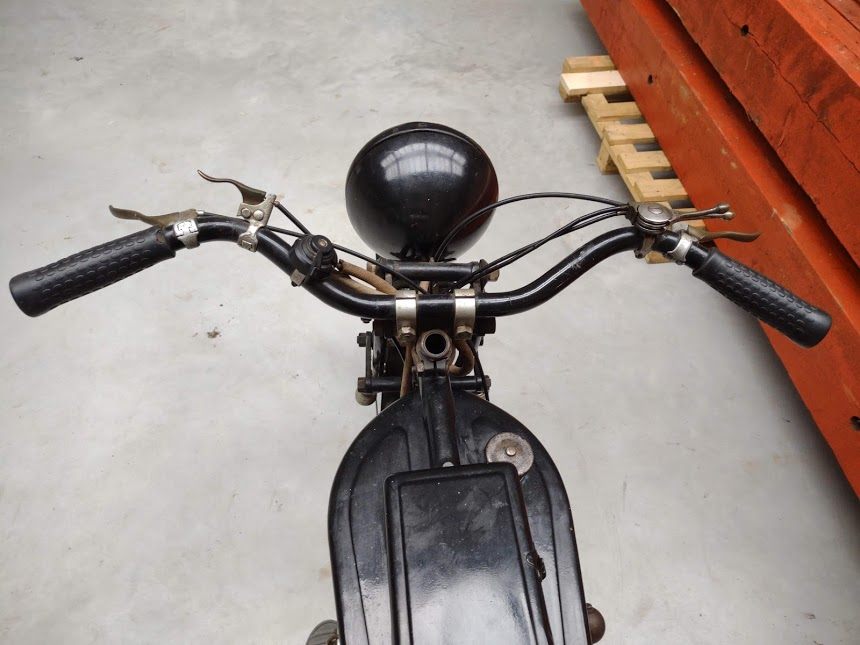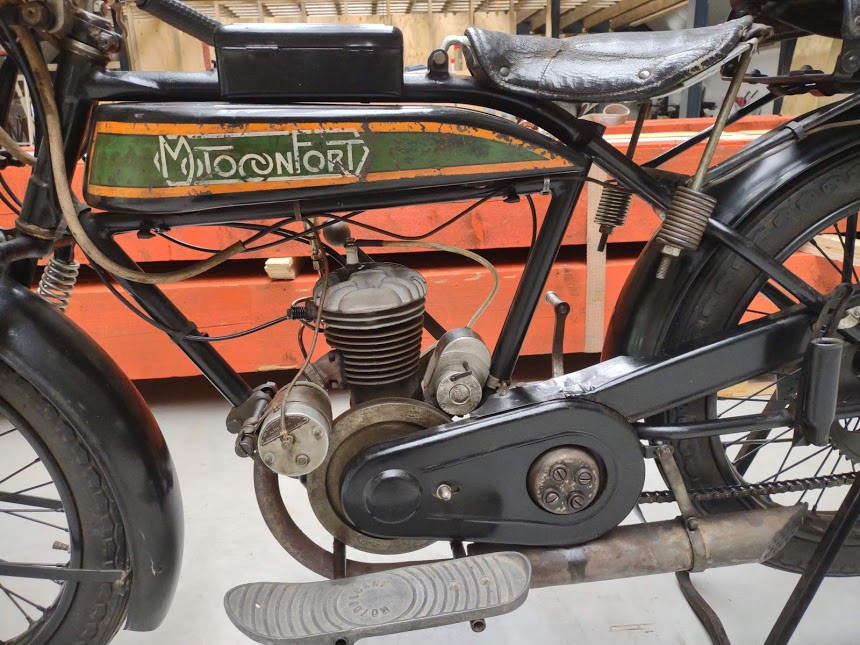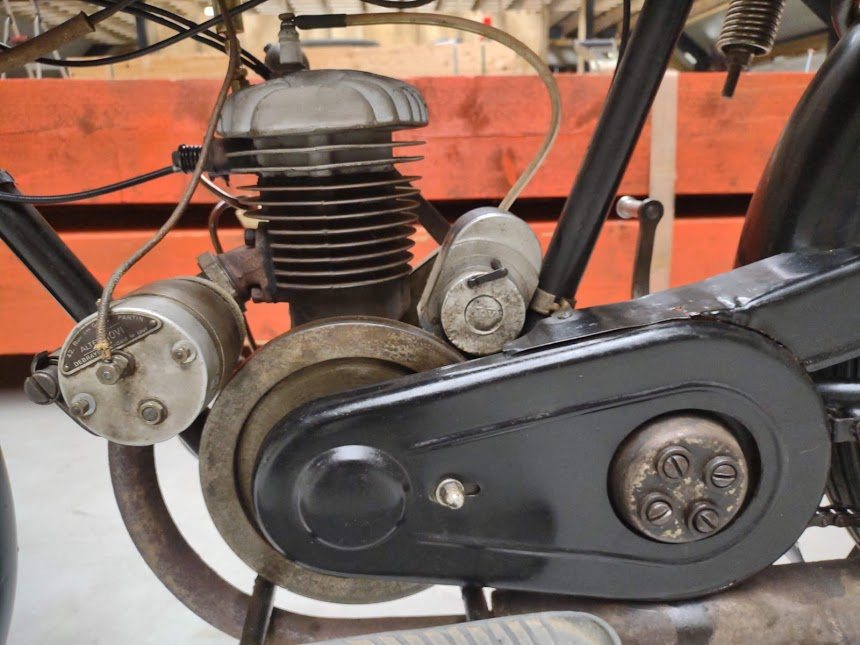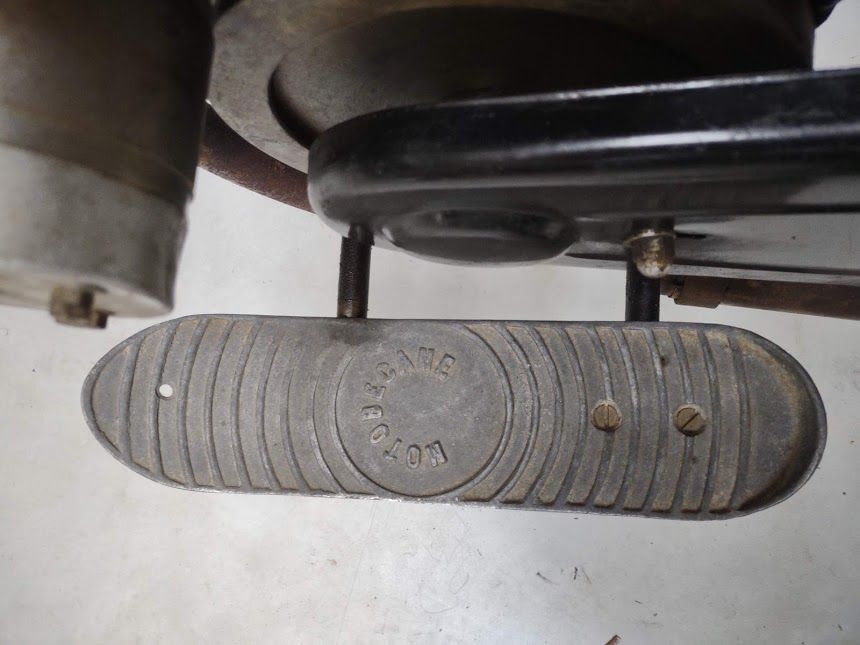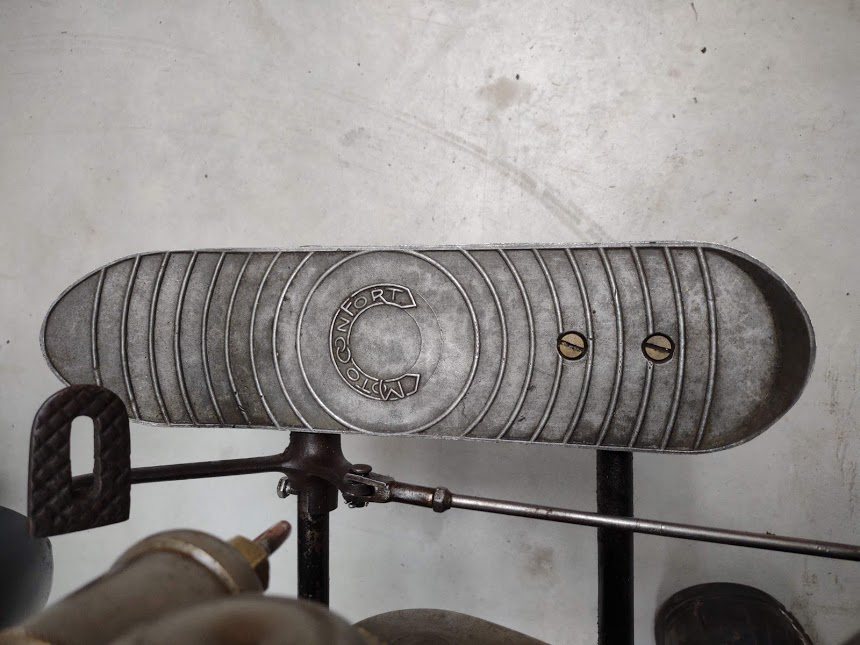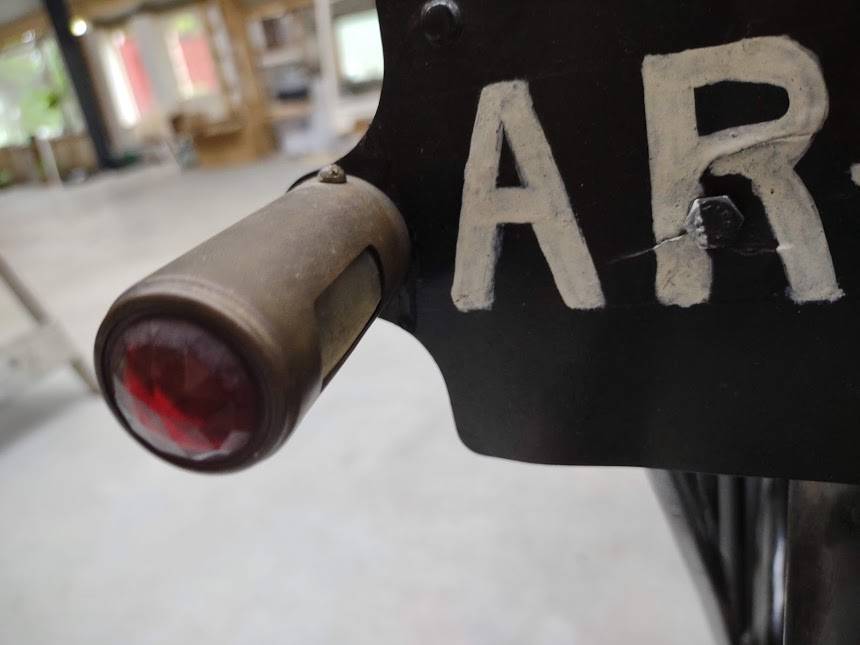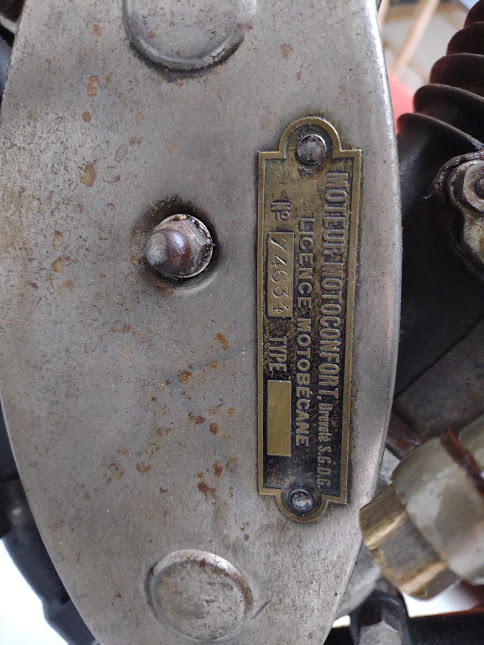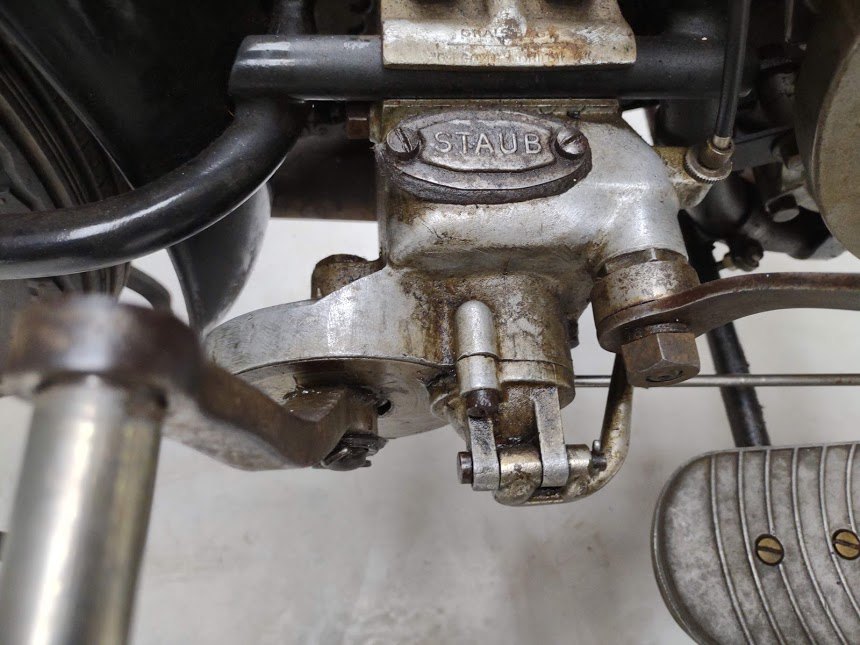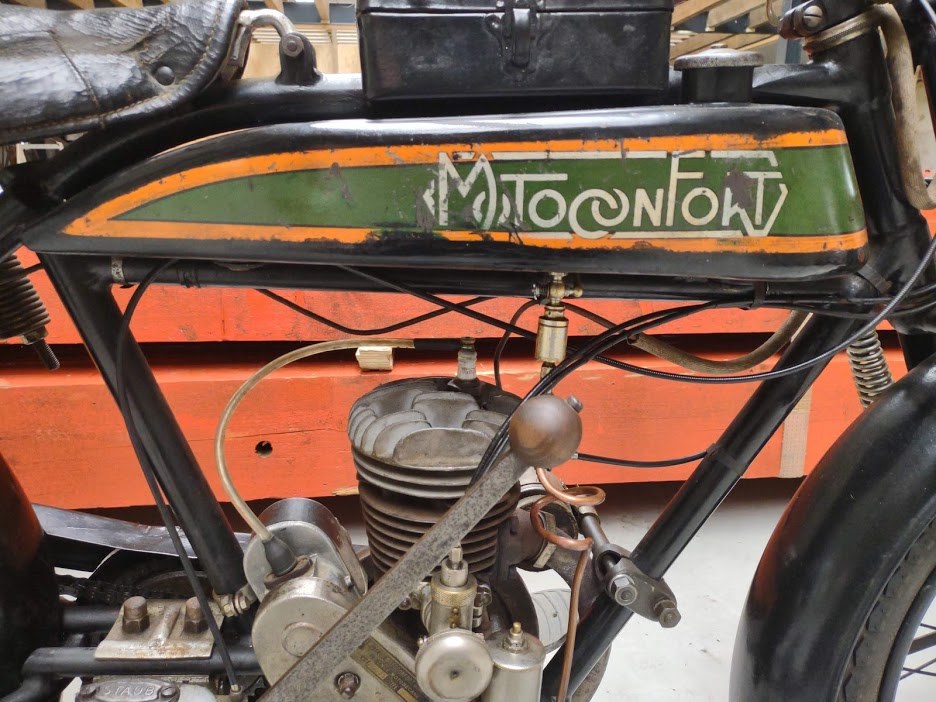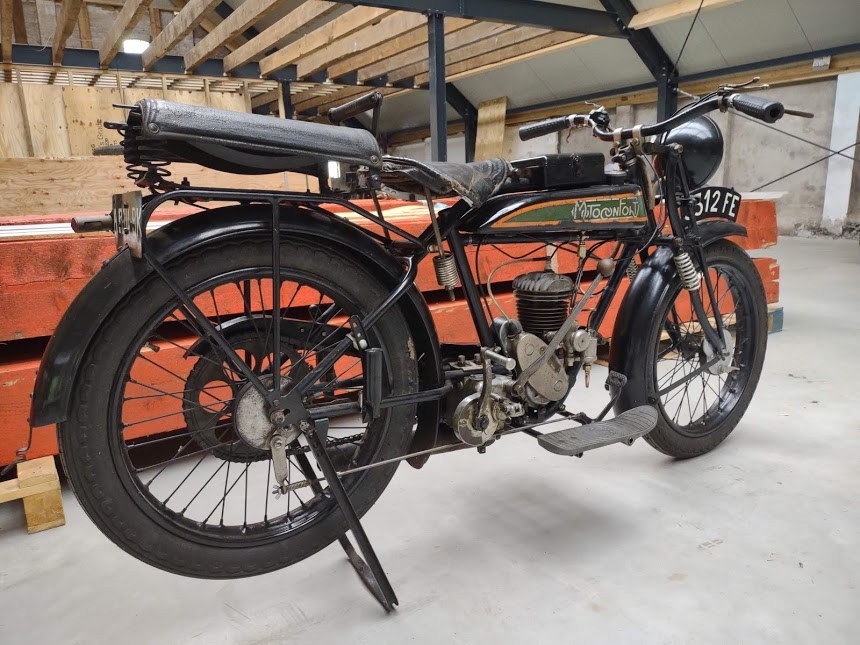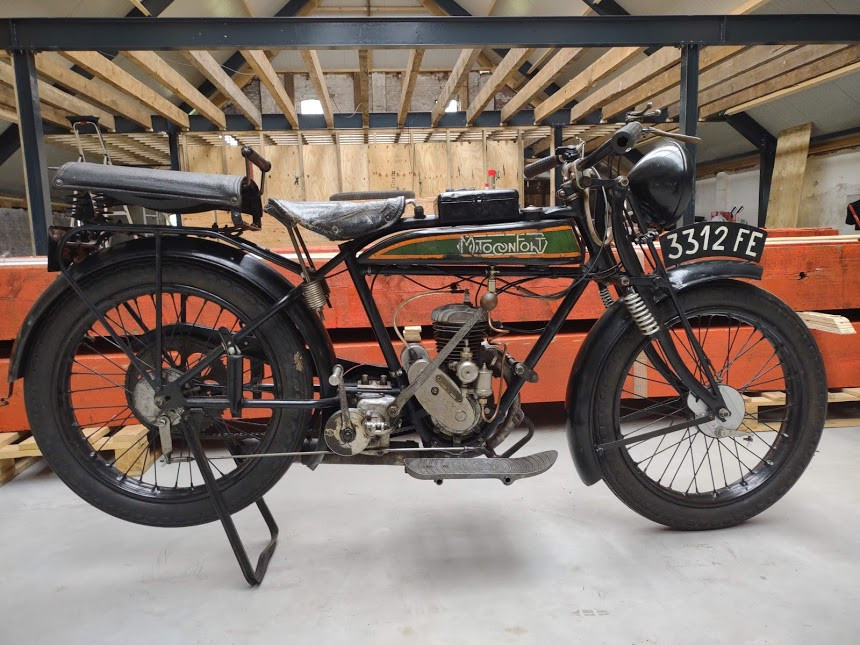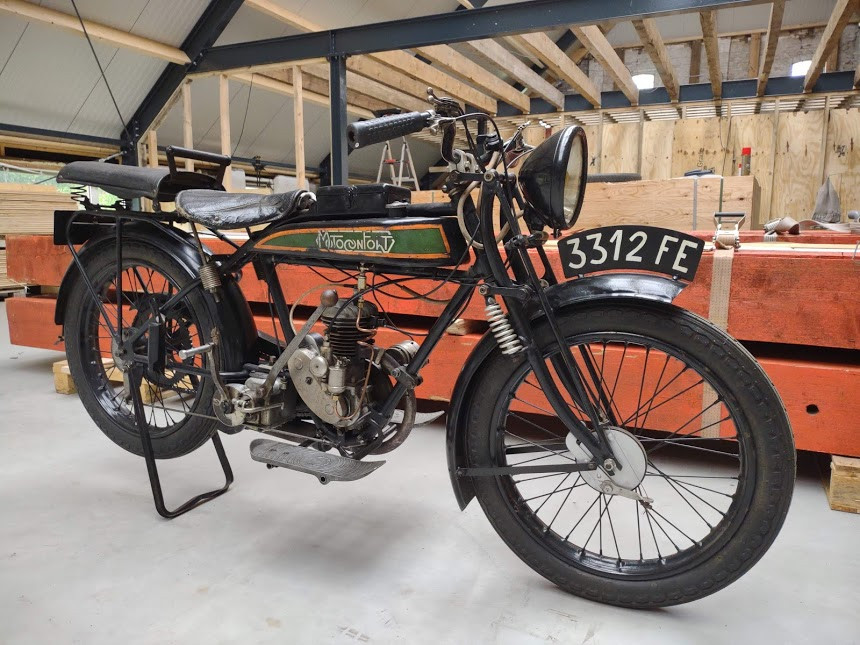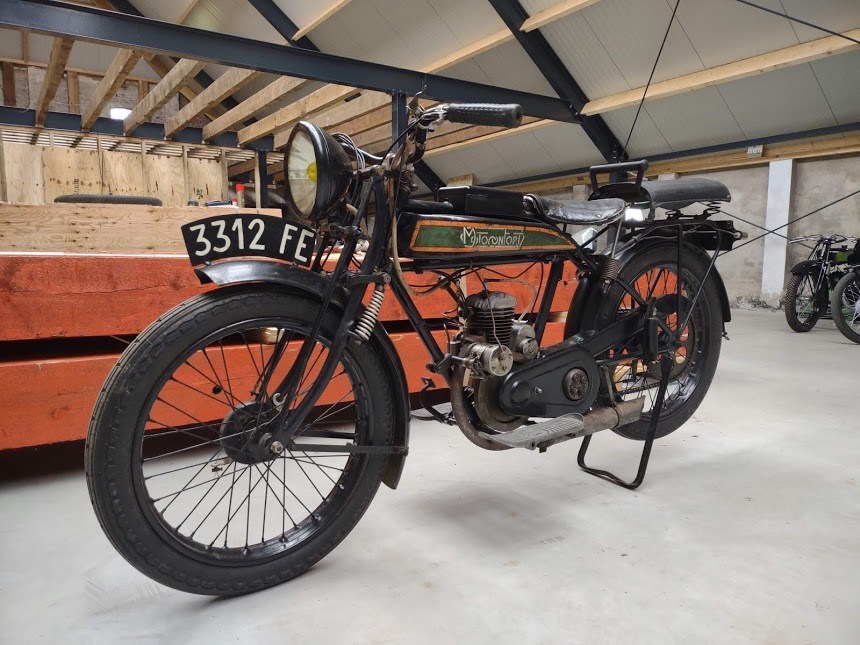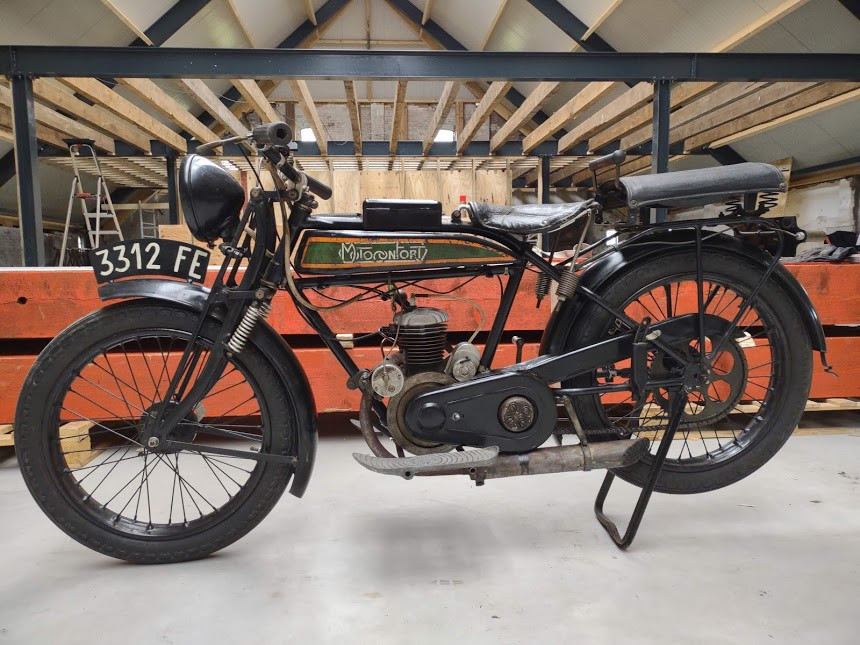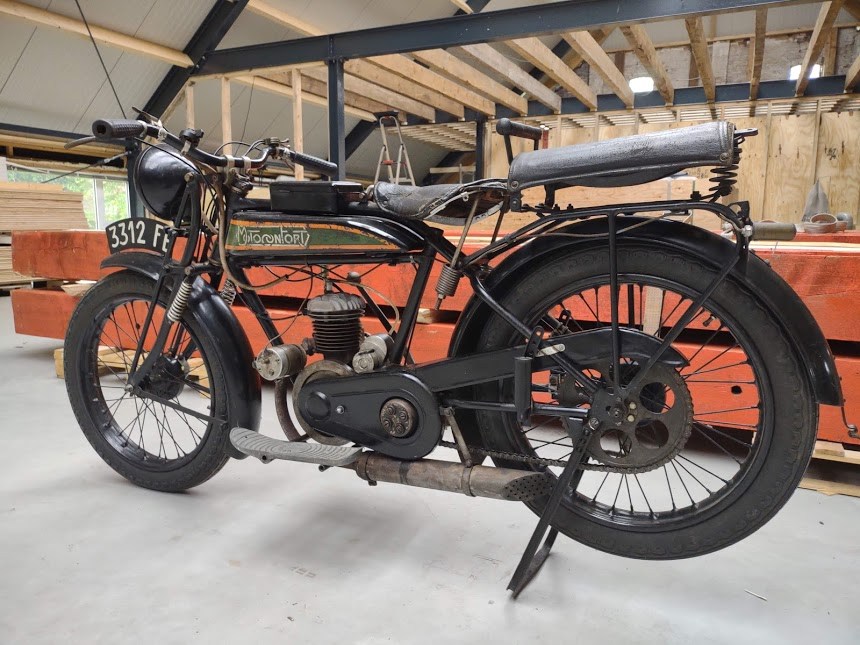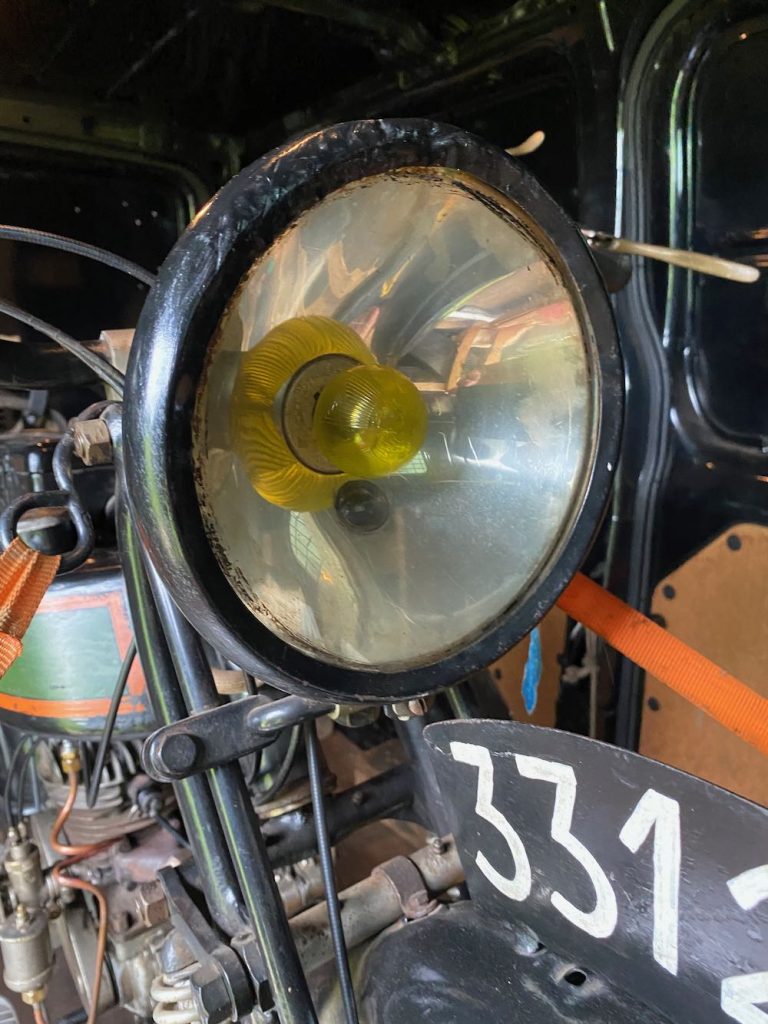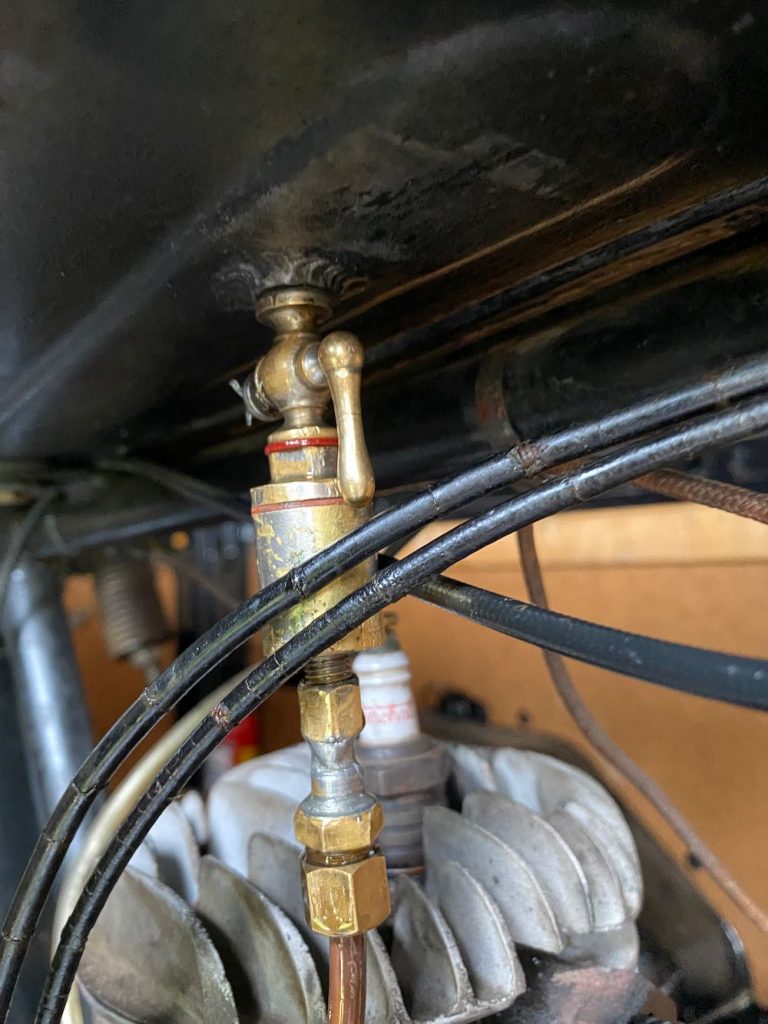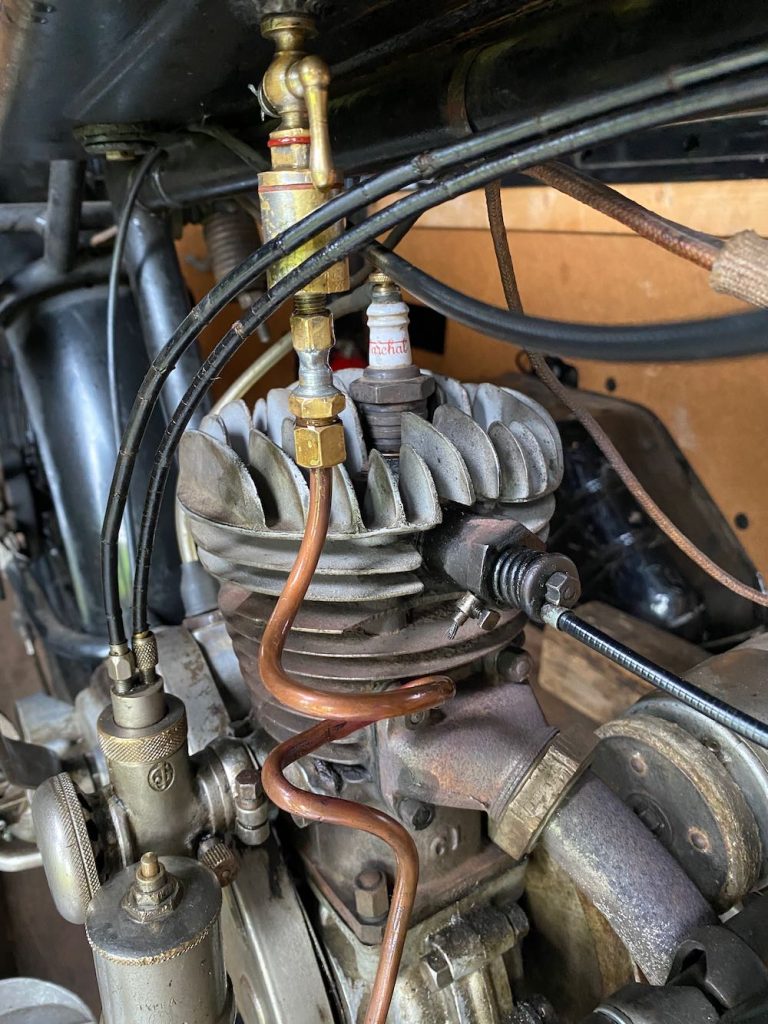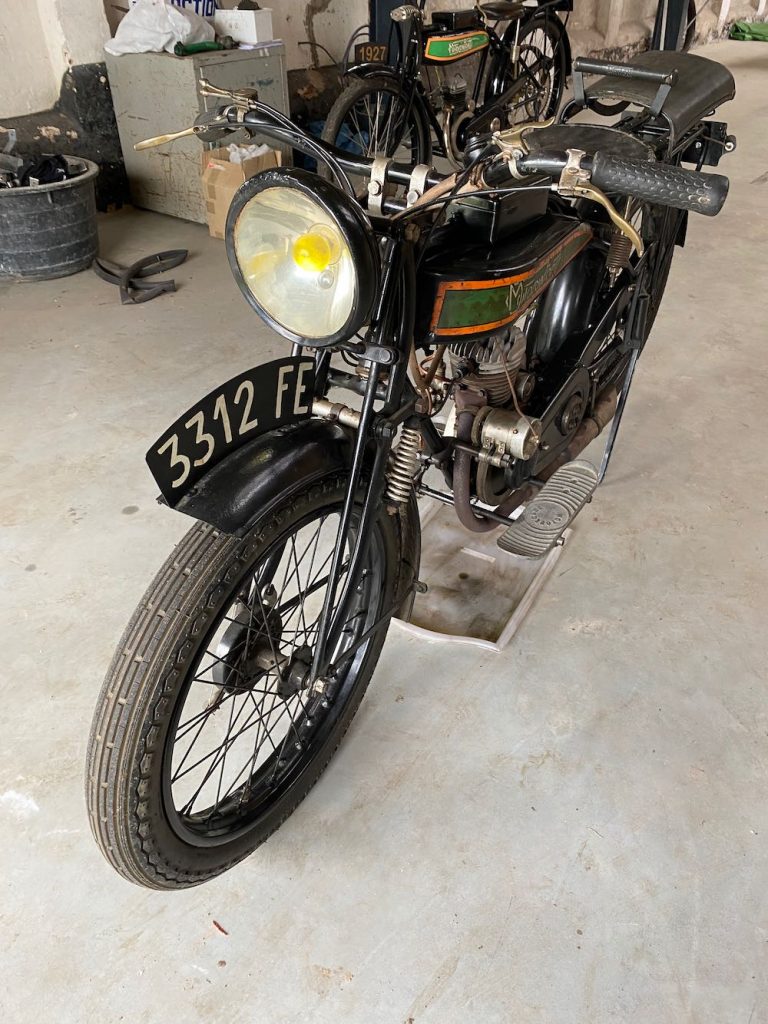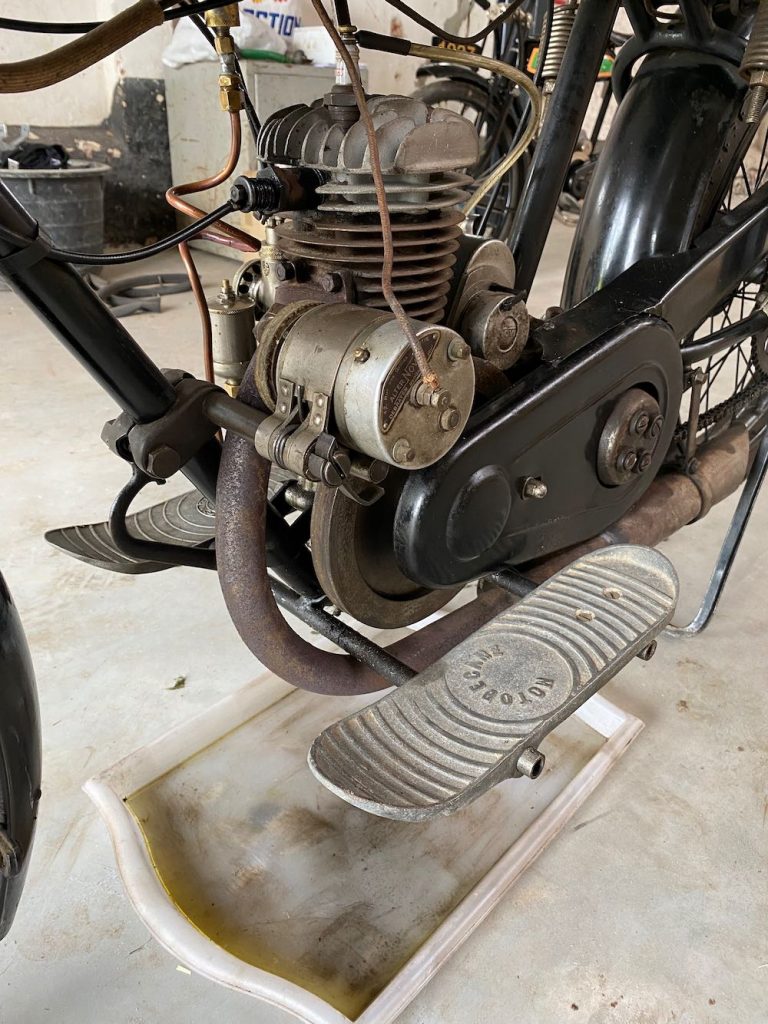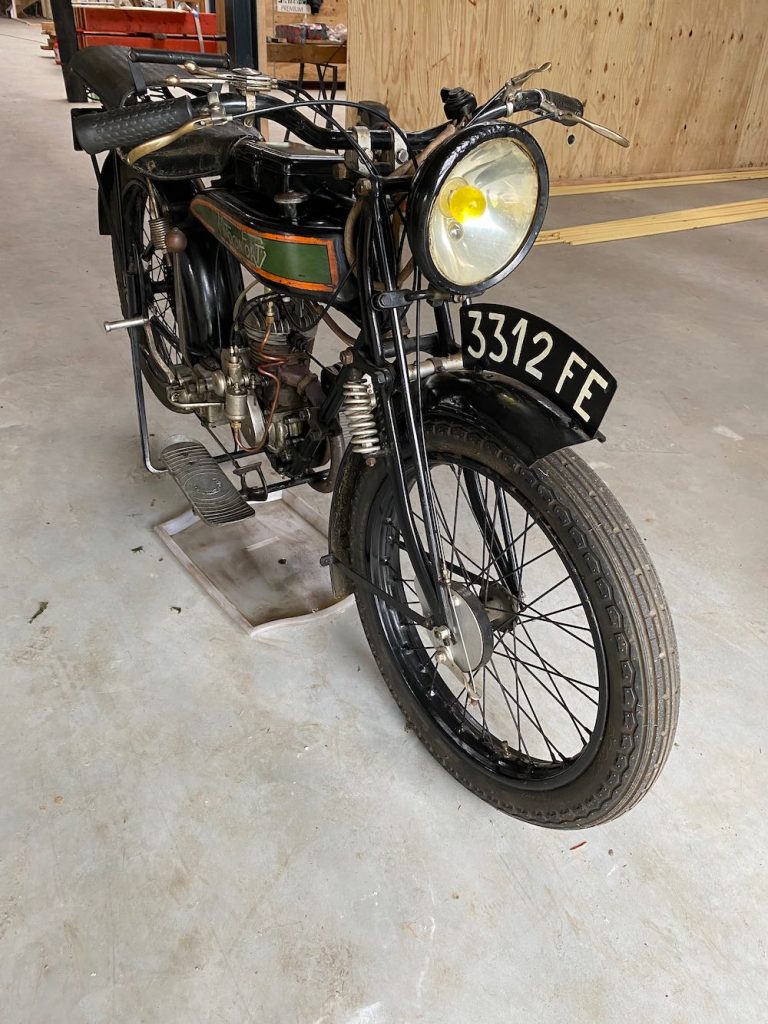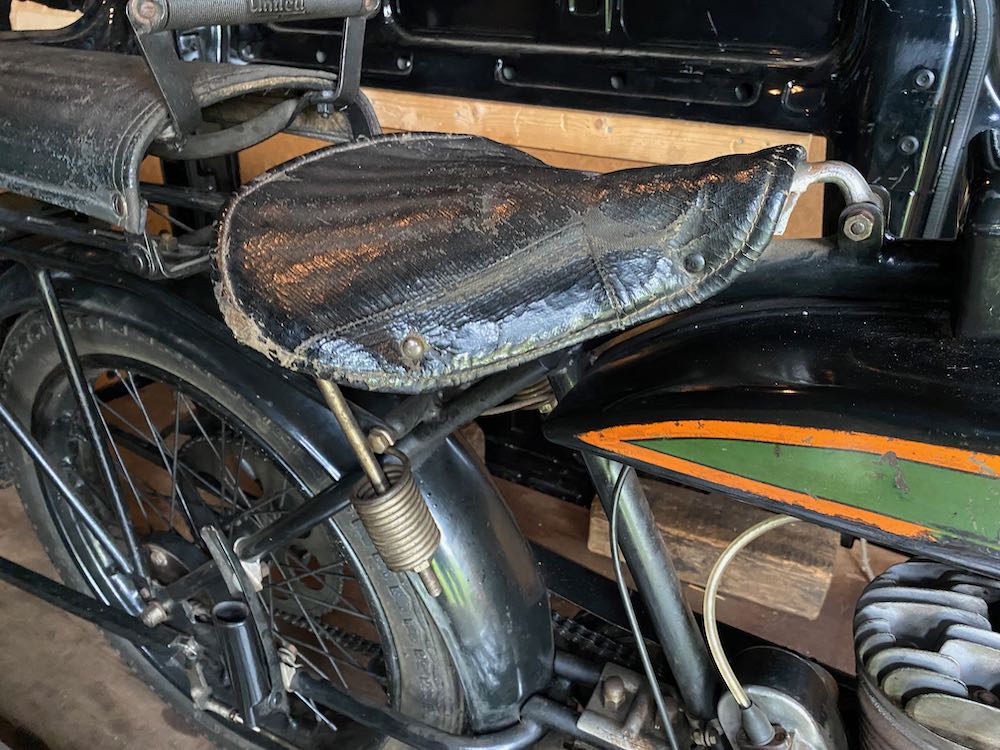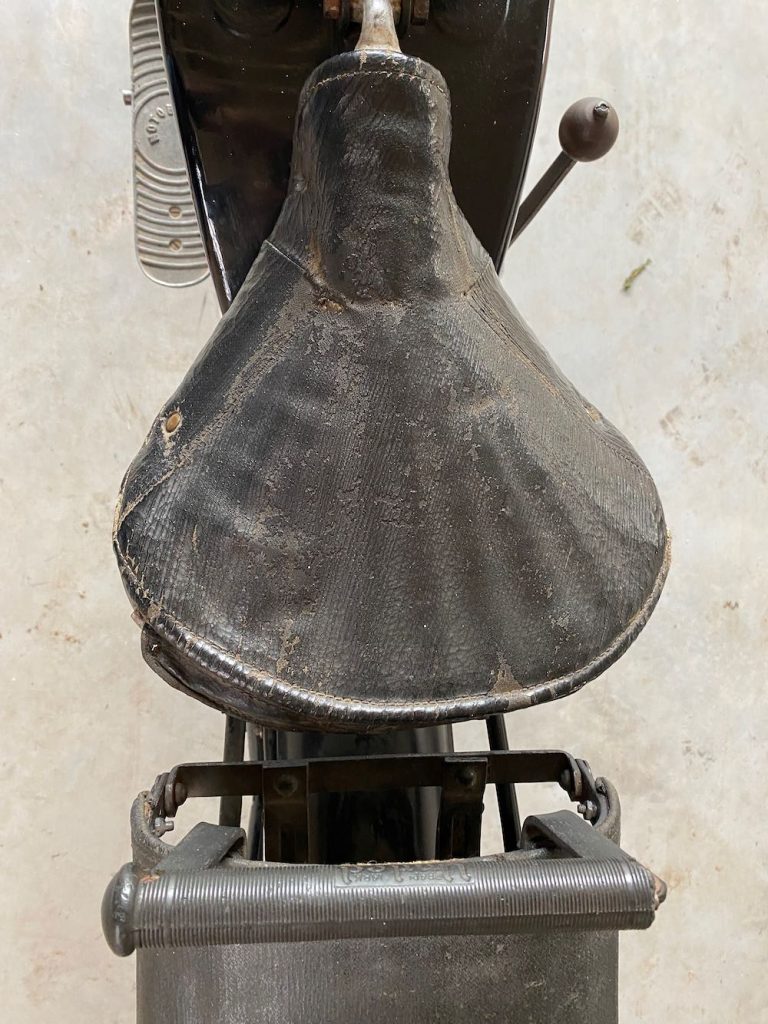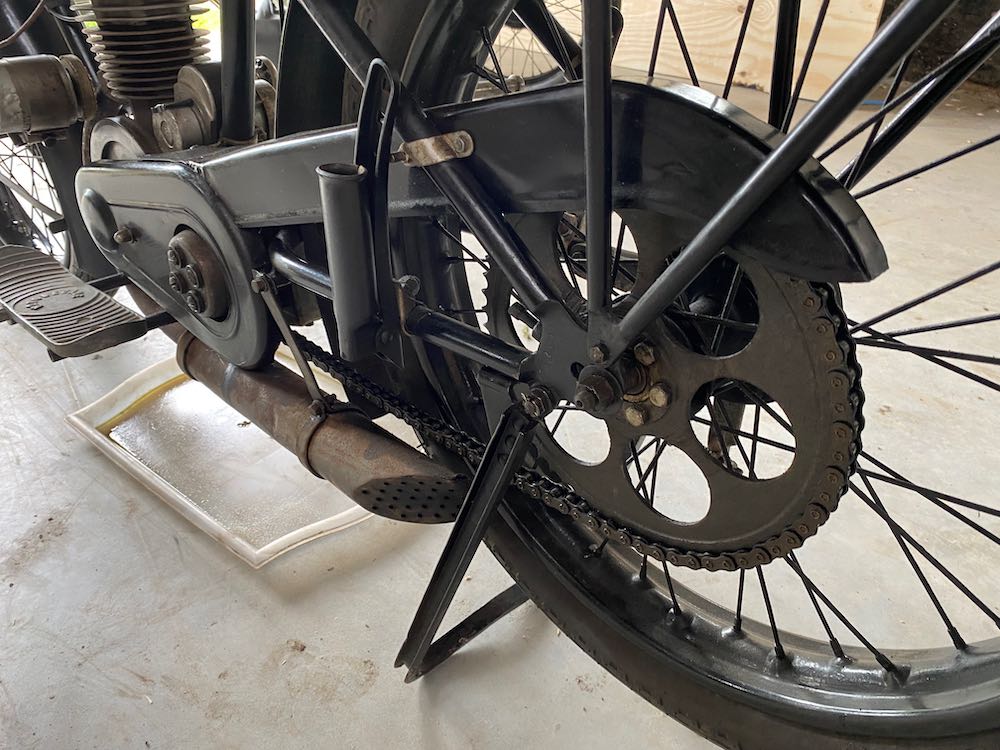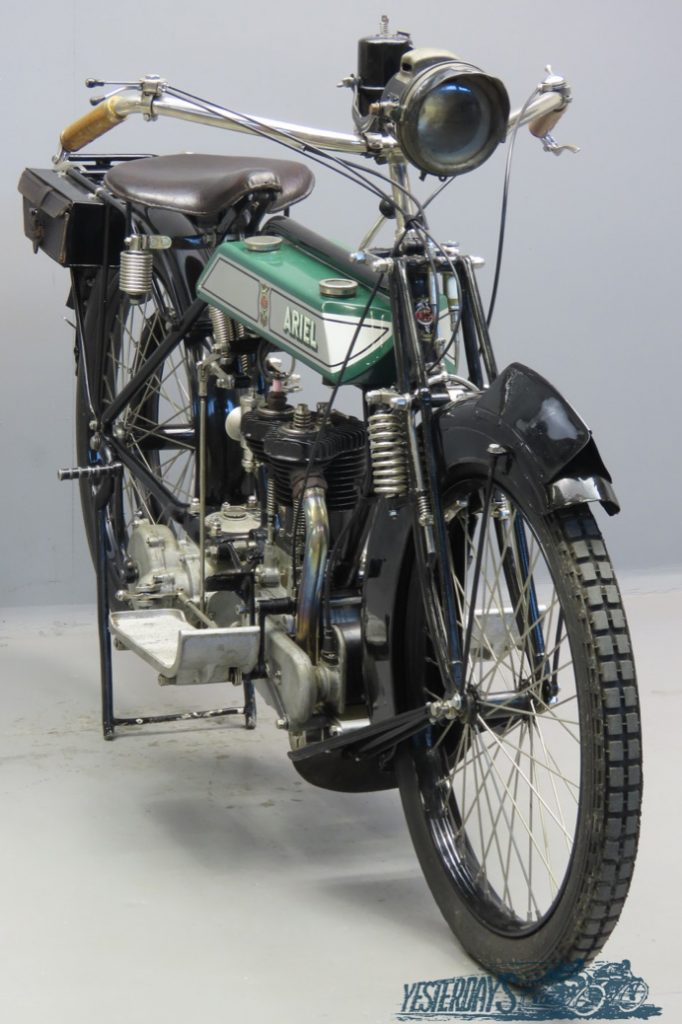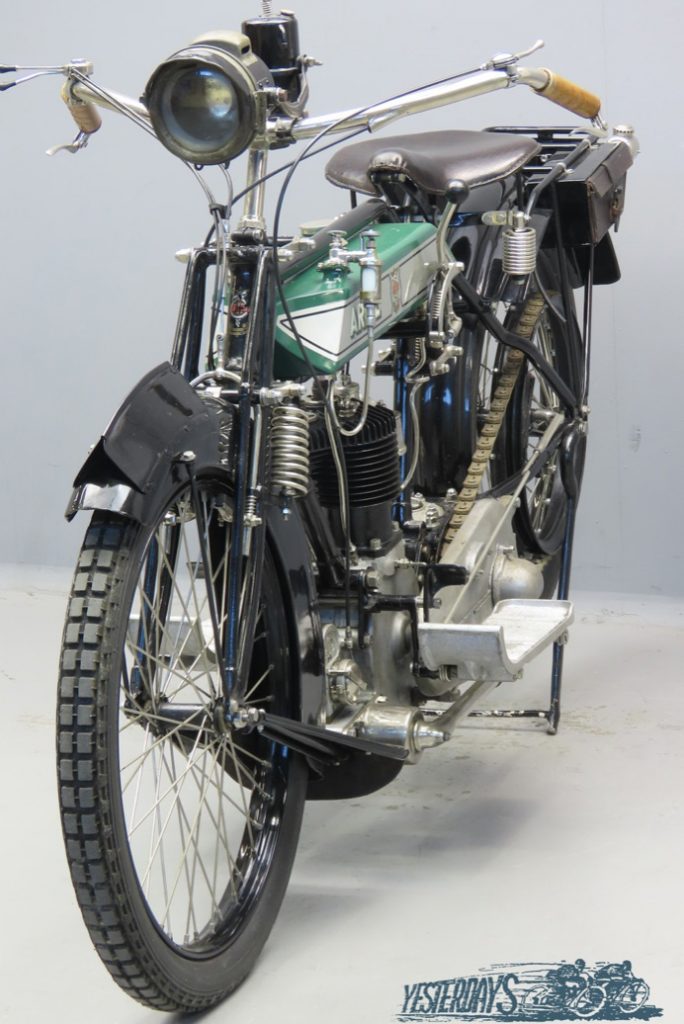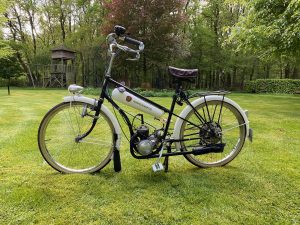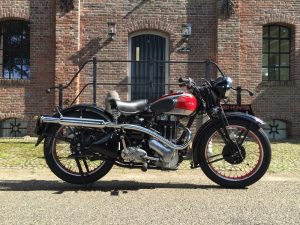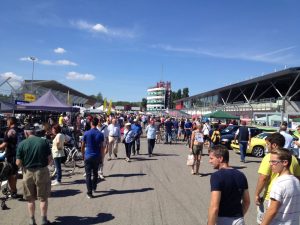UPDATE Augustus 2021: Al die Franse zijn gewoon te klein voor mij. Ik wacht liever op een Engelse. Kan even duren, dus tot die tijd een andere klassieker gekocht; wel heel iets anders, maar ook lekker rustig ploffen…
Ik heb geen spijt dat ik de Ariel Red Hunter heb weggedaan, maar ik vind het wel jammer. Ik blijf namelijk een dikke voorkeur hebben voor oldtimers, maar lekker een keer een rondje met de mannen op pad is ook leuk. En zo heb ik al vaak van motor gewisseld. Tevreden nu met de Triumph: looks van vroeger, techniek en power van nu. De oplossing is ‘gewoon’ 2 motoren, maar zo werkt het niet; daar zijn ze te duur voor.

Voordeel van een oldtimer als tweede motor is dat ie ook niet zo hard hoeft te kunnen, en dan wordt het interessant, dan mag het ook echt een oudje zijn. Liefst een flattanker voor mij. Die zijn dan ook meteen 100 jaar oud en daardoor zelden te betalen. Dit is een uitzondering, maar dan ook niet het optimale voorbeeld: Een Franse, een lichte 2-tact van 250cc. Verder wel een prima model voor mij: lang (en laag) zodat ik er op pas, geen riem aandrijving, schakelen aan de tank, dynamo, en deze is helemaal gerestaureerd, alles werkt en heeft al Nederlands kenteken, wat wil je nog meer…? De staatsloterij winnen. Voor nu blij met de vrije vrijdagmiddag besteding in Grubbenvorst; even terug naar de snoepwinkel waar ik verliefd werd op Ariel, maar waar ook prachtige Indians en vele flattankers staan.
Klaar voor beslissing
20210612: De dag na mijn verjaardag kon ik – na enkele weken wachten door drukte bij Patrick – naar het zuiden rijden voor een proefrit op de Terrot. Ik wilde hem namelijk toch graag hebben en in die geschiedenis duiken. Ik had al enkele filmpjes gekregen waarop hij wel liep, maar niet van harte. Eenmaal in Grubbenvorst en op de motor bleek deze stevig en solide en met de hendels was de motor prima te bedienen / onder controle te houden. Op het speciale testrondje liep ie in zijn een ook prima, maar in zijn tweede versnelling bleef hij steken, trok niet door, max 40 km/uur schat ik (Stomme Runkeeper app deed het weer eens niet dus kon ik de snelheid niet meten). Even later zakte de snelheid zelfs wat weg. Hmmm da’s te spannend: te heet? Basis lijkt absoluut solide, maar het is niet de bedoeling dat renfietsen je inhalen en het blijft een investering, dus te warm / kapot laten lopen is ook niet het plan. Nog even mogen bellen met Geert die de motor had nagekeken; uithoren en een nauw passende overmaatse zuiger kán het oplossen, maar dat is geen zekerheid. Wel een operatie van 500 euro als je pech hebt… Kortom, de proefrit bracht nog niet de overtuiging die ik hoopte. Ja zeggen is een stuk makkelijker dan nee. We gaan er een nachtje over slapen…
Omdat er geen benzine meer inzat, moest die eerst nog gehaald worden; dat gaf me de tijd om alle mooie details nog eens vast te leggen.
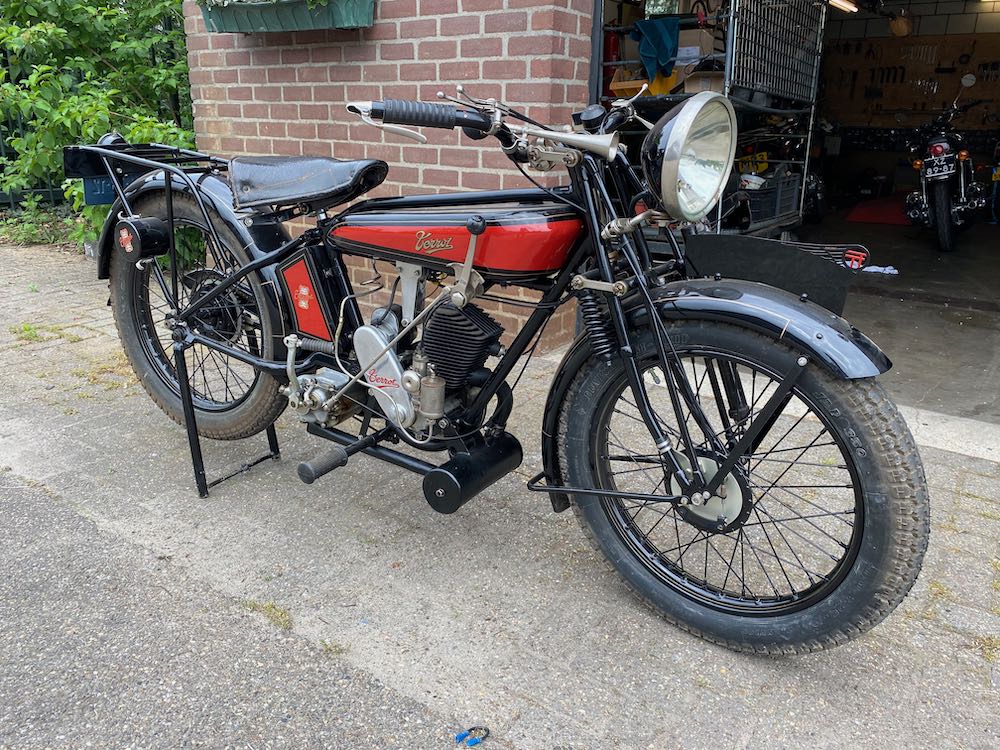
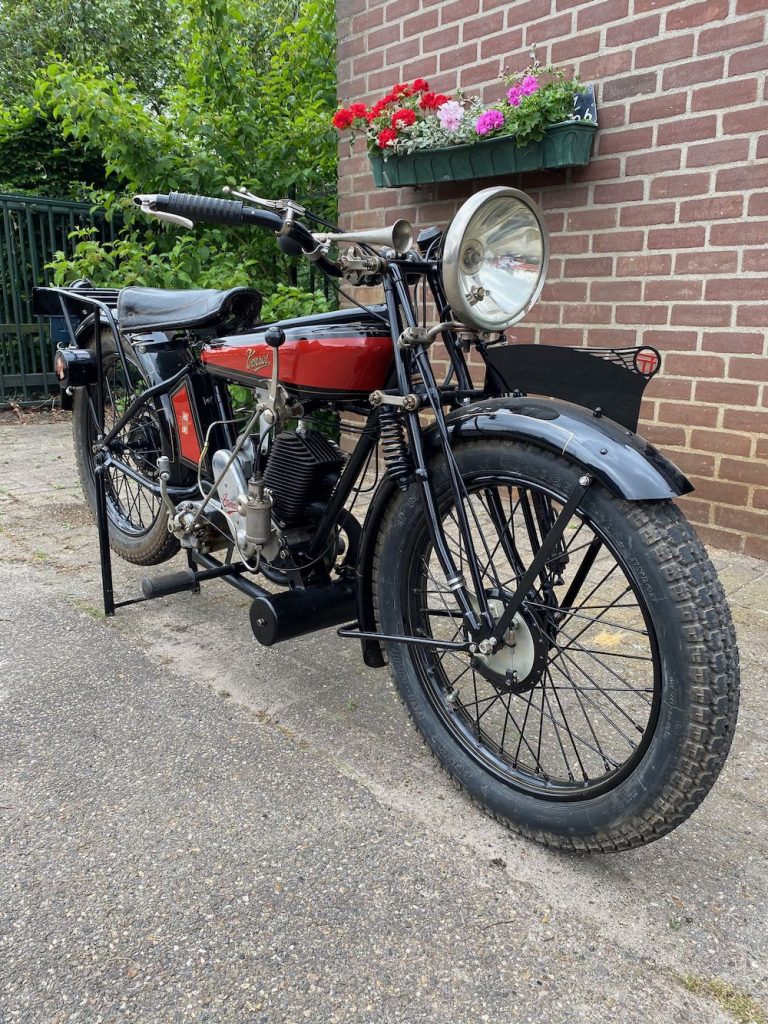
FSS: Model F, uitvoering Super Sport: 250 cc, 1 cilinder, 2 versnellingen suicide shift.
20201030: Ik hield hem al een tijdje in de gaten online, nu toch maar eens gaan kijken.Mooi groot formaat voor deze flinke jongen, netjes opgeknapt, maar niet te gelikt. Apart blok dat klein leek, maar toch robuust oogt in het echt…
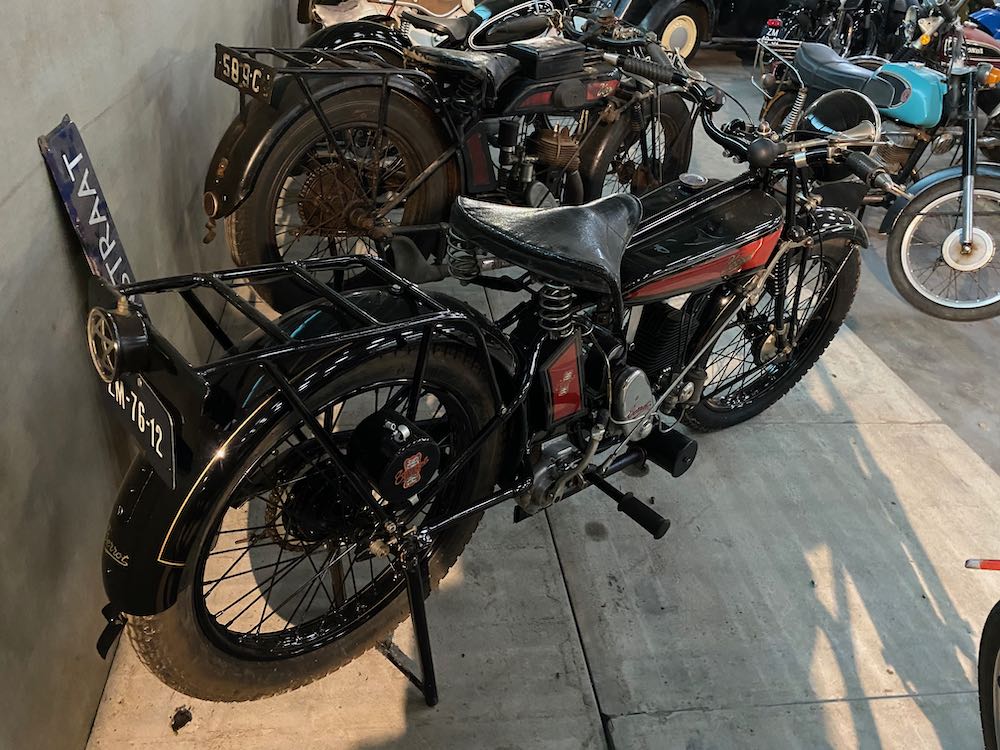
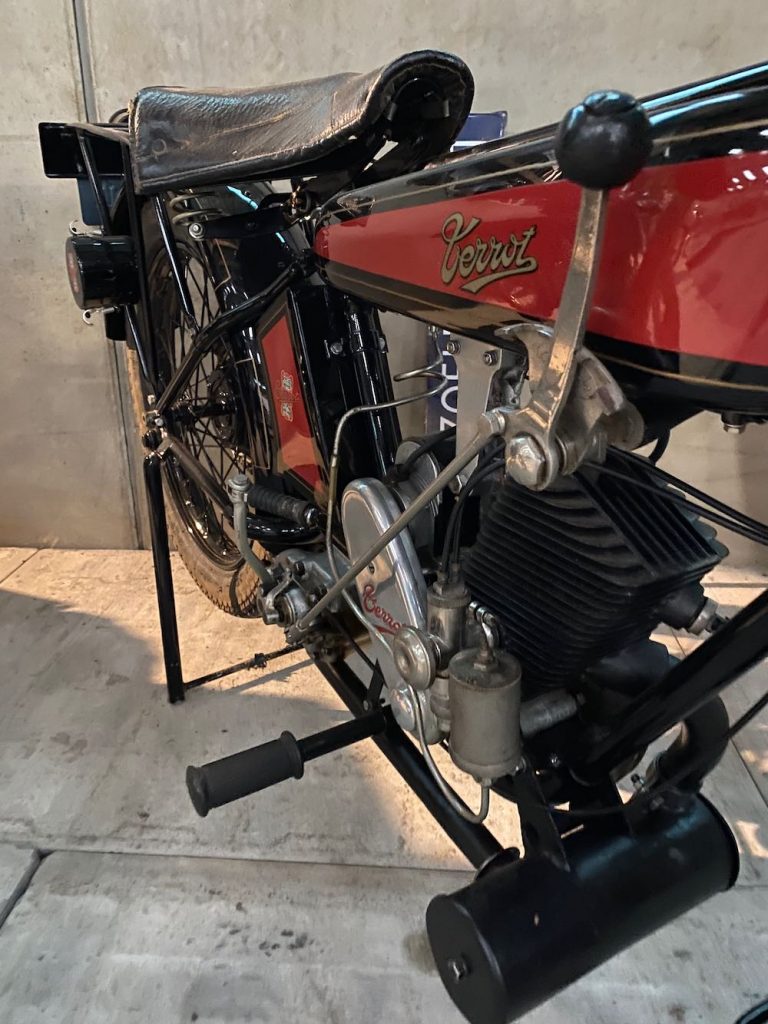
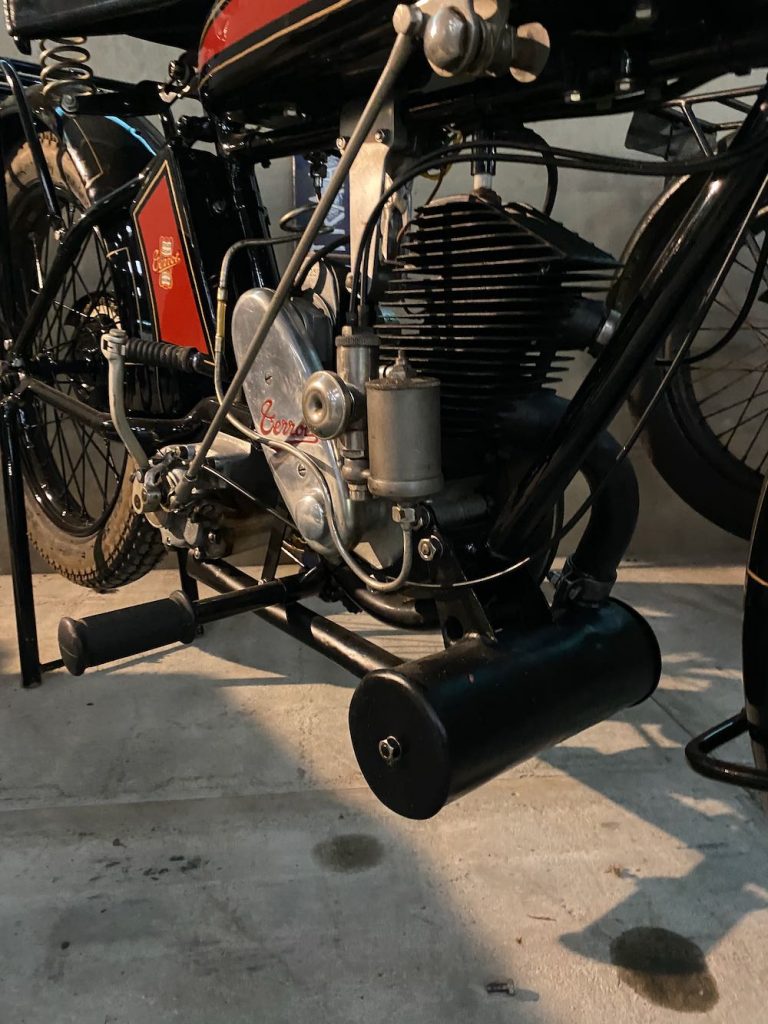
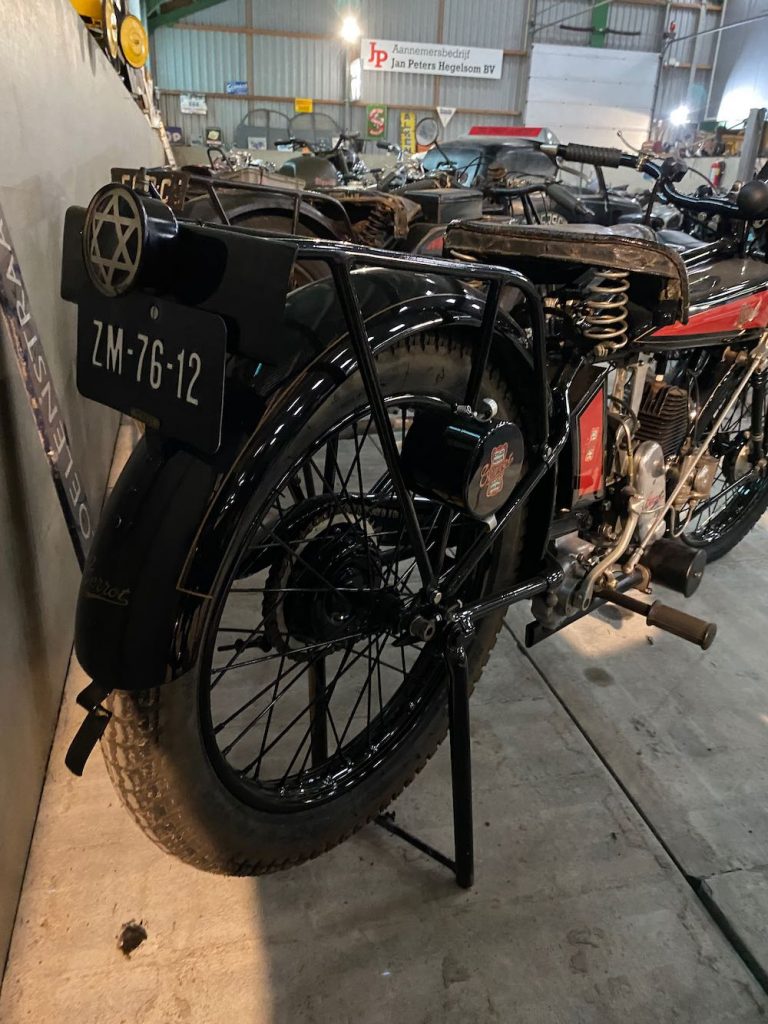
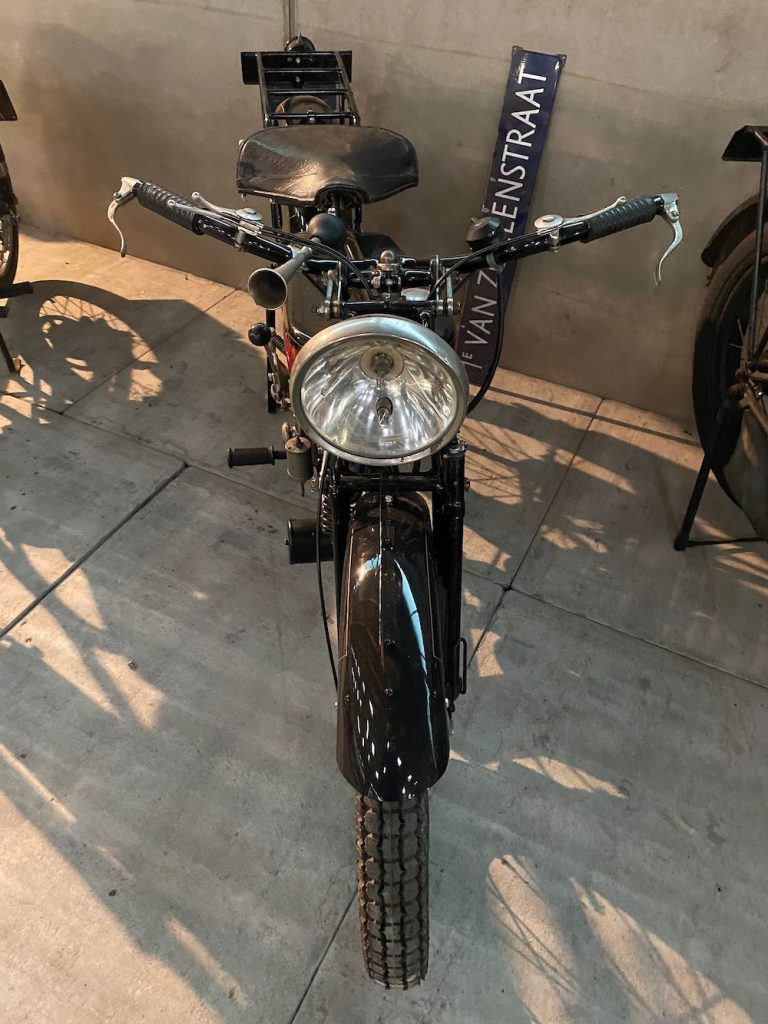
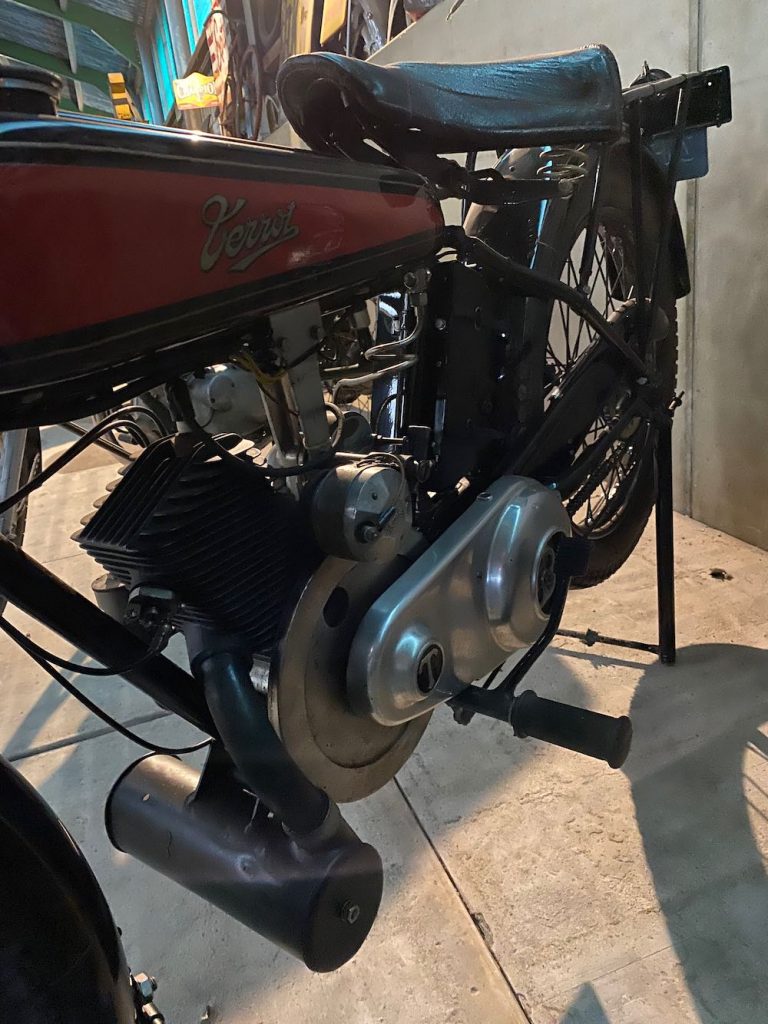
Over een gerelateerd model F
In the twenties Terrot built a line of sturdy utilitarian two stroke machines. The company recommended these machines to customers who demanded economical transport with minimum costs and maximal reliability and comfort. These machines were very popular in the old days and they are very practical for vintage club activities in our time.
The compact two stroke engine has a big outside flywheel and dimensions of 67×70 mm. Gearbox is Terrot’s own two speed device, clutch is by multiple plates and the engine power is transmitted to the rear wheel by belt. Note the interesting front suspension system with enclosed vertical spring. This nicely restored machine weighs about 80 kgs and its top speed is around 60 km/h.
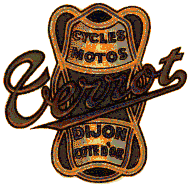
Commerciële foto’s verkoper

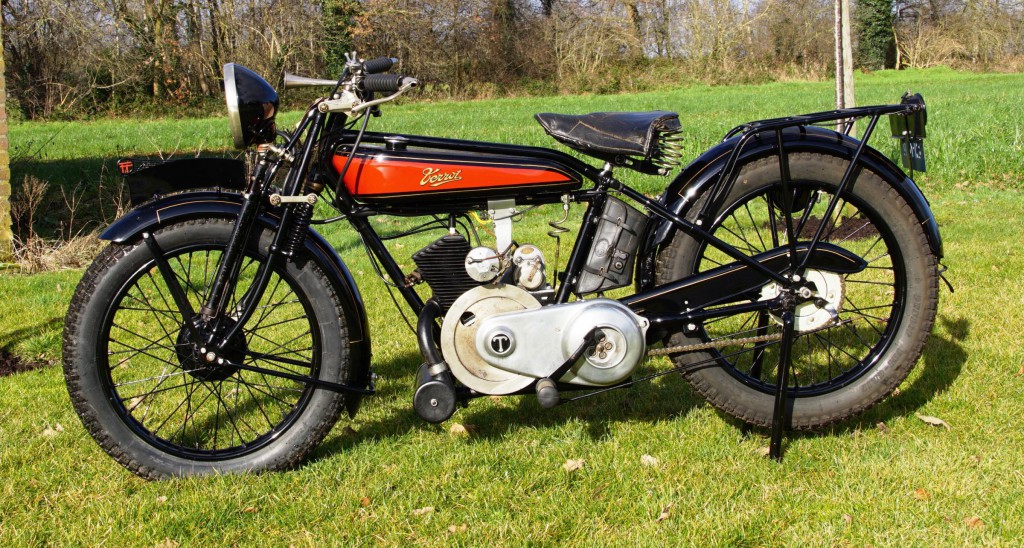

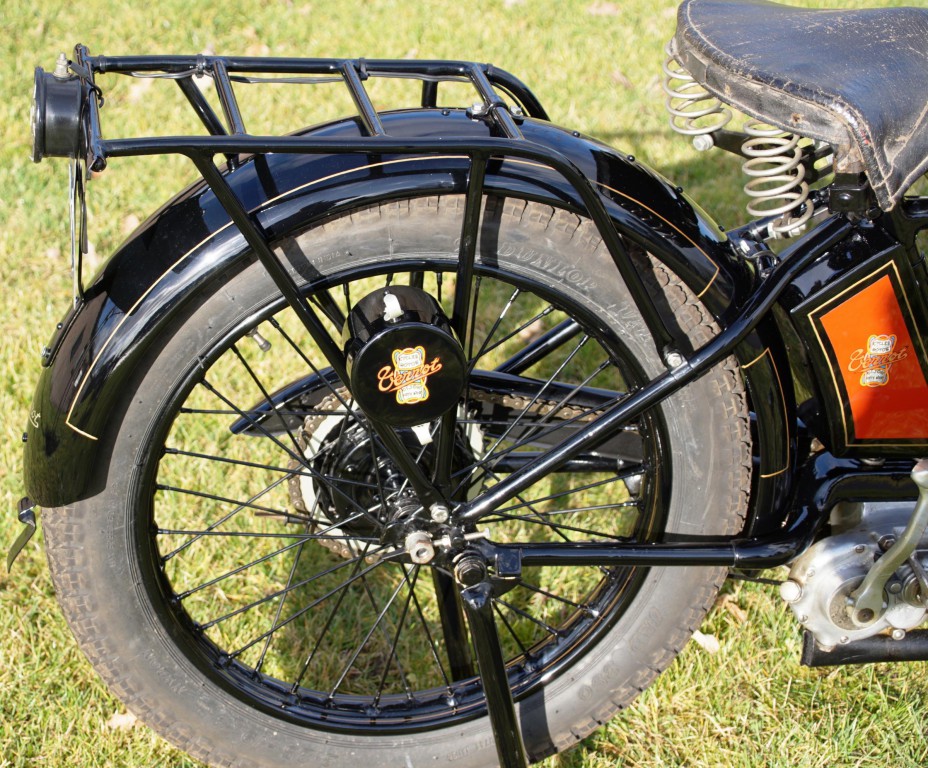
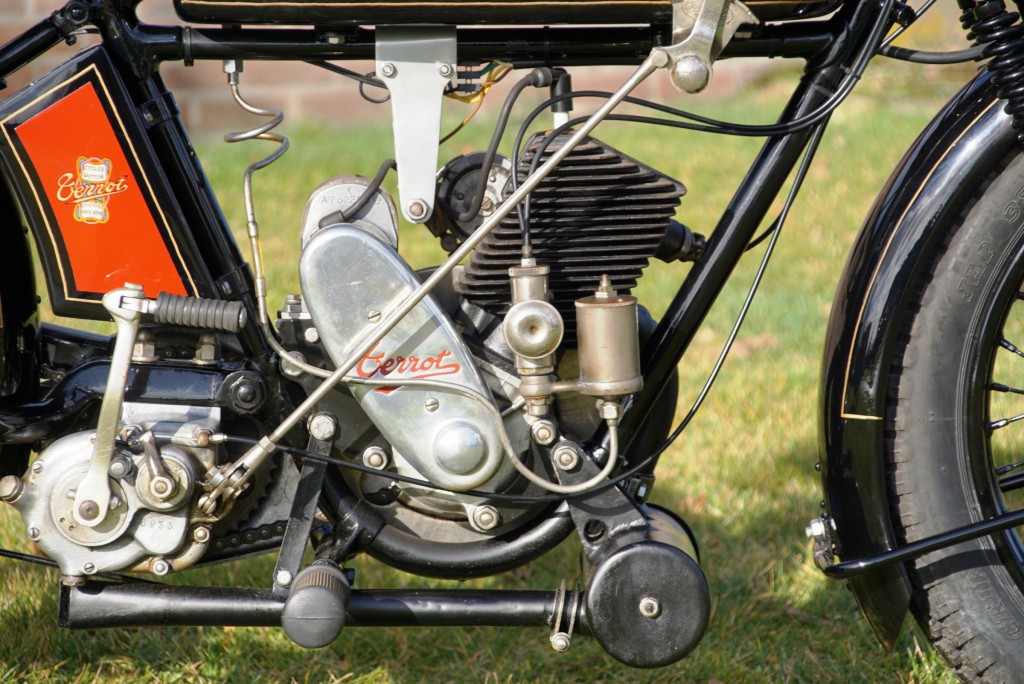
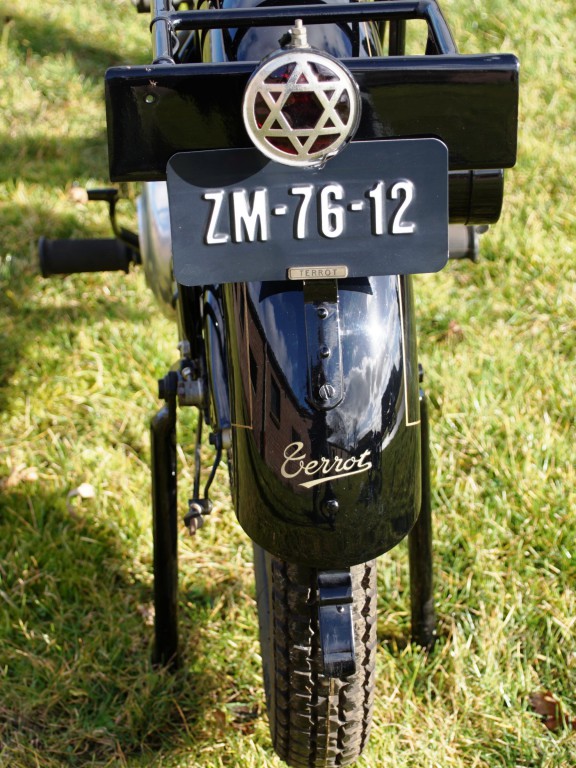

Andere FSS en inspiratie
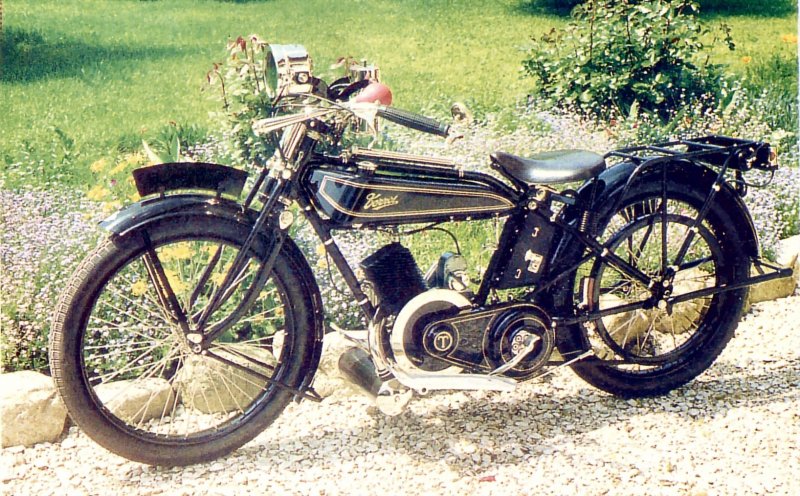
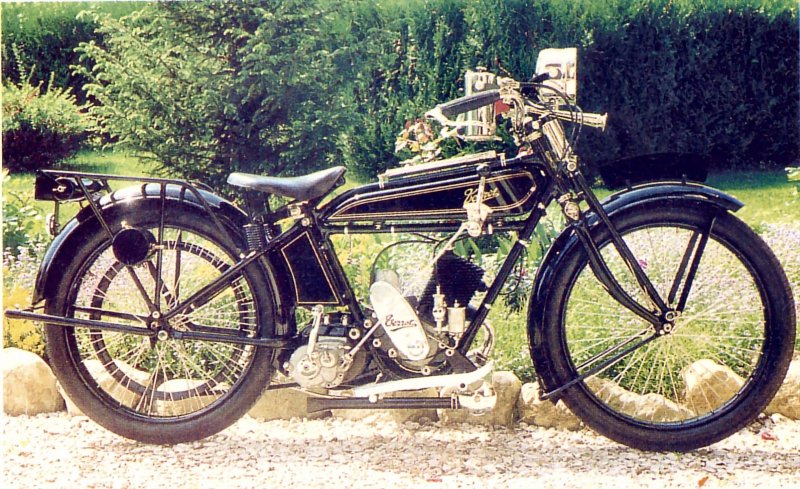
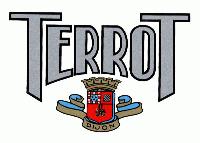
Brochure foto’s
Hieraan zie je dat deze toch best wel origineel is. Ik word verdulleme nog enthousiast, wetende dat dit een franse is, net te licht met haar 250cc en ook niet echt flexibel met slechts 2 versnellingen én het is een tweetact: allemaal niet optimaal, maar wel een fraaie flattanker op kenteken van 100 jaar oud…
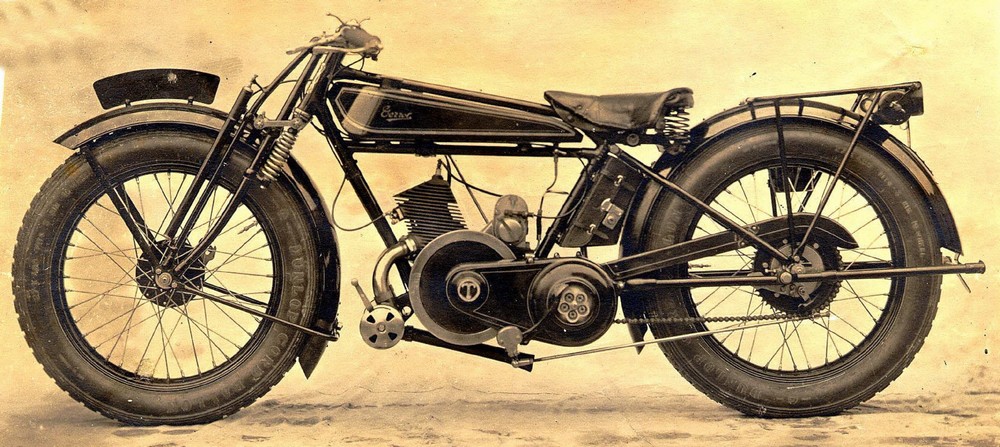
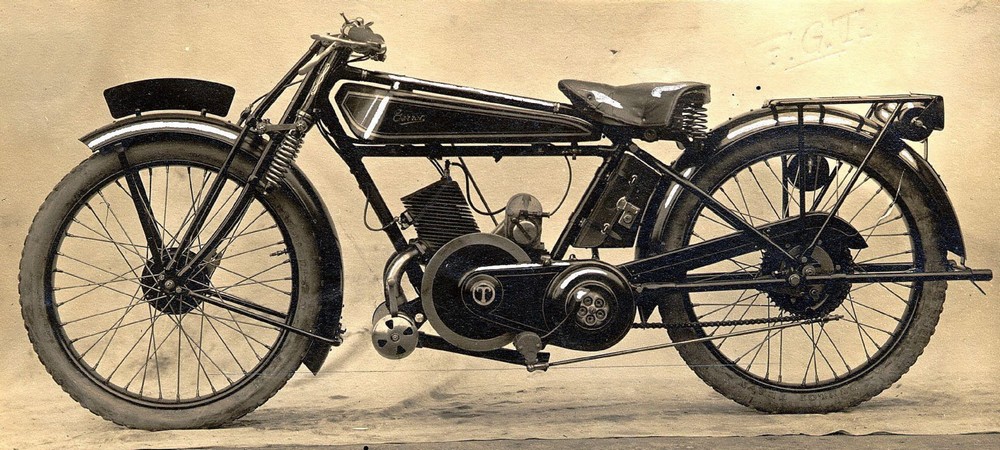
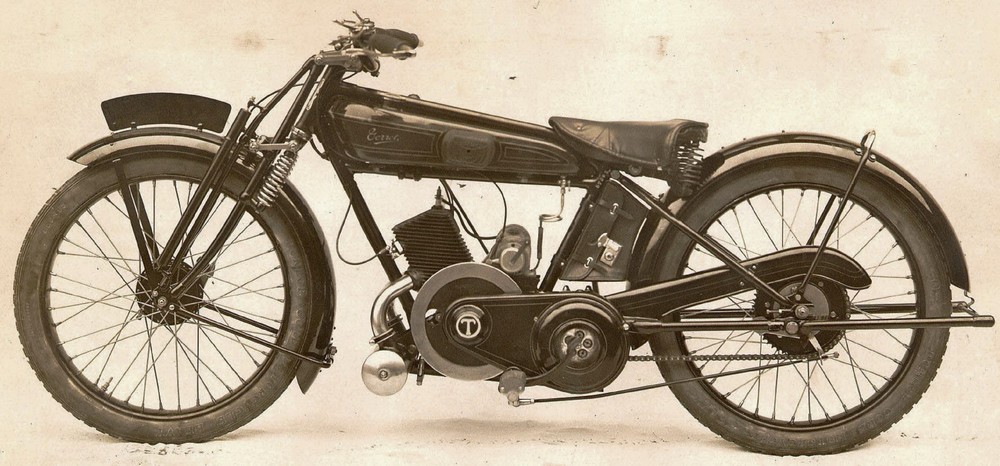
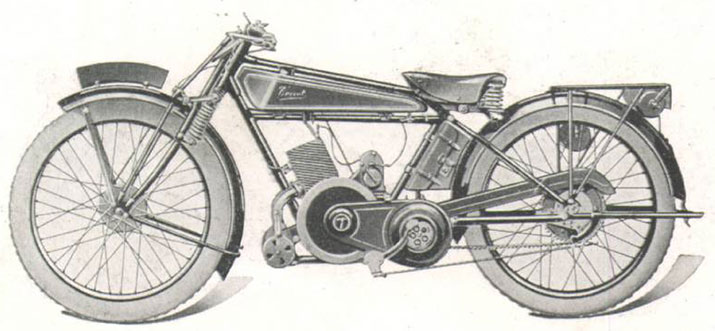
Kenmerken
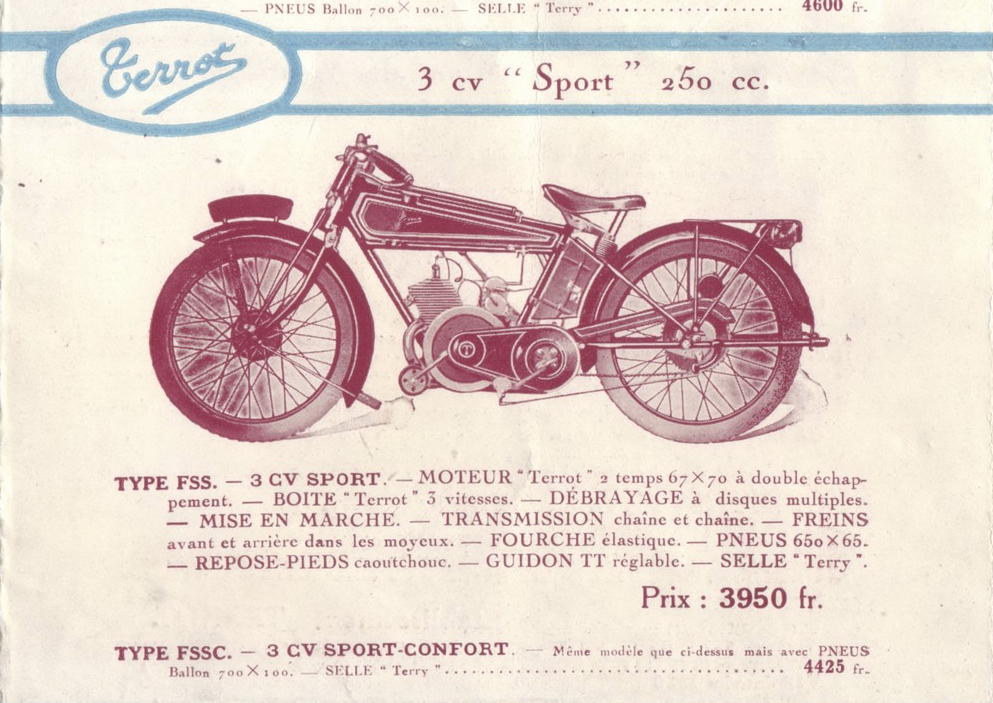
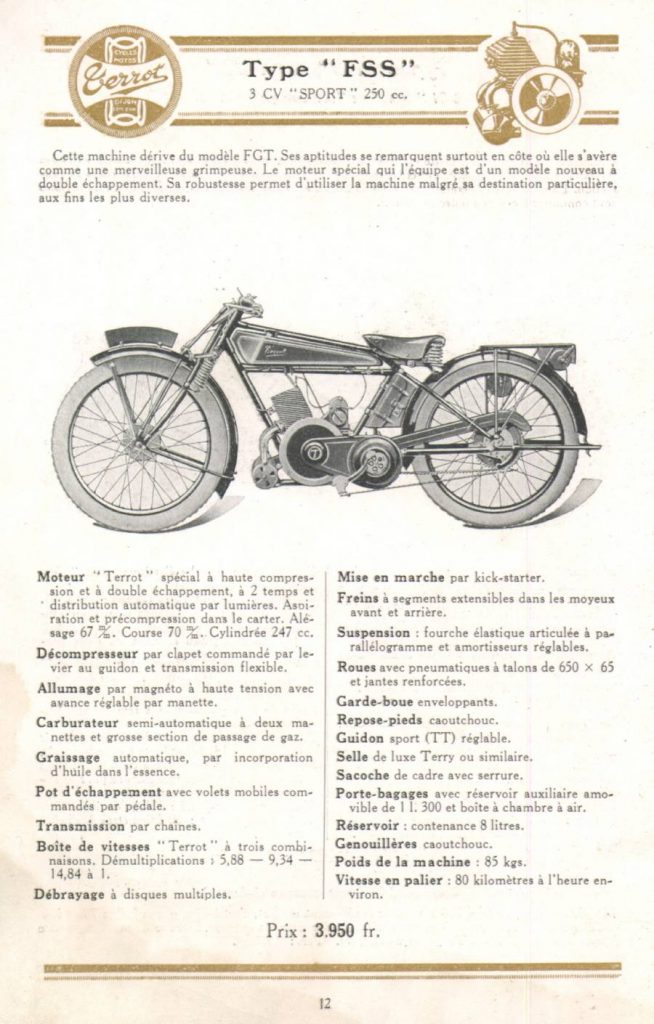
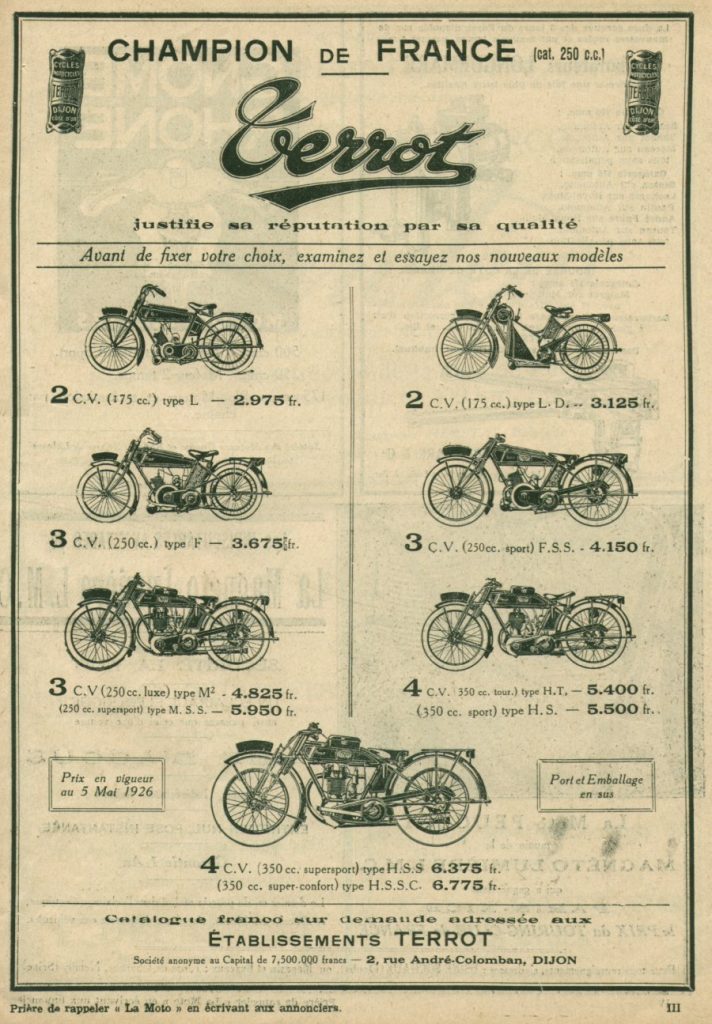
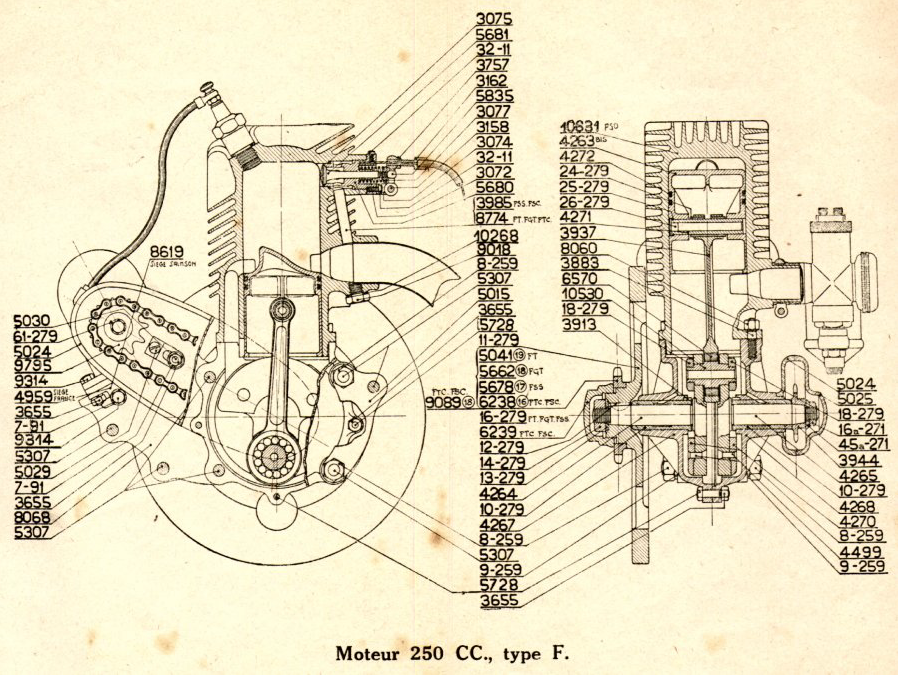
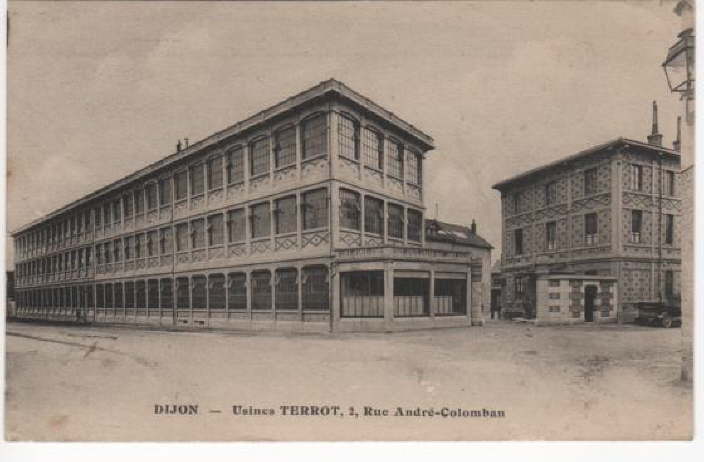
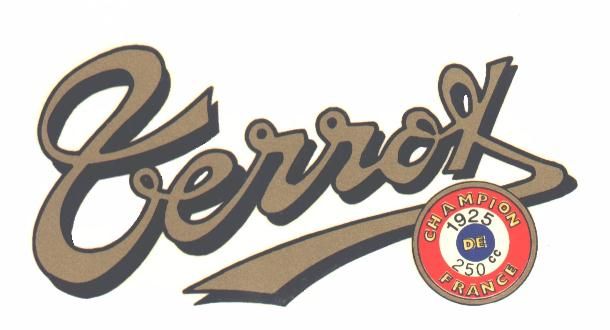
Links
- Flattankers te koop
- Dutch Lion Motorbikes
- Franse Terrot club
- Terrot Club Pireneën met veel documenten
- Heel veel moois bij de Veteranen Motor Club
- Duitse Terrot Club
Over de geschiedenis van de flat tanker
To begin at (or near) the beginning… it all started a little over 120 years ago…
The Dark Ages (or the Veteran era)
Motorcycling as we know it today began at the very tail end of the 1890s, evolving from the almost universal starting-point of strapping a new-fangled petrol engine to a safety bicycle. (… And what’s not to like about that when all’s said and done? Um… global warming perhaps… but they didn’t know about that then, so let’s move quickly on…)
The evolution of the species rapidly took off with a wide array of ideas about how best to make it all work… many of them completely barking mad. Inevitably over the next decade and a half natural selection ensured that some sort of common point was reached, heading towards an optimisation of sorts of this simple objective. What we tend to overlook today is that although we remember the petrol engine was in its infancy, the bicycle itself had only reached the universal pattern of the ‘safety bicycle’ with two wheels of the same size, a diamond frame, a seat close (enough) to the ground and geared drive sometime just before the end of the 1870s, and only became a common sight during the following decade, the near-universal pattern that is still in use today. A fortuitous sequence of events – if the petrol engine had reached a point where it could be fitted to a bicycle prior to the 1880s then the ensuing carnage of motorised ‘ordinaries’ (penny farthings) would have probably wiped out a generation of petrol-headed pioneers before the motor cycle could emerge kicking and screaming (and banging and thumping) into the 20th Century… (Although the irony of that statement isn’t lost on me, standing as we do today on the teetering edge of the precipice that is climate change… more thoughts about that to follow…)
By 1911 there was a real point of debate about whether the motorcycle had reached the epitome of its design. Serious questions were asked by those who saw motorcycling as a young man’s sport about whether variable speed gearing and a clutch had any place on a motorcycle (despite the fact that cars had clearly had both from the very start) and if not, then perhaps the pinnacle of design had already been achieved. If nothing else, busy town and city riding on a bike that would stall when stationary and could only be re-started with a push (if you were lucky) or by putting it on the rear stand and pedalling like the clappers must surely have caused even the most ardent supporters of the old-world view to question their logic. Then again, nobody’s ever implied that motorcyclists were any more sane than the rest of the population in the course of history. Stories abound of how to negotiate a busy tee-junction at the top of a steep hill, or generally how not to.
In any case, the matter had already been settled by the time the First World War began. At that point LPA (light pedal assistance) was a thing of the past meaning that seat heights had come down, and if any lingering doubts remained, the reality of war service meant that practical developments would continue to arrive in short order.
1915 (the coming of the Vintage era and the emergence of the Flat-Tanker)
By 1915 a pattern for motorcycle design for the next decade had emerged. With hindsight this became the demarcation line for the veteran era to pass into the vintage, defined by the release of the Triumph Model H, the Trusty Triumph of the Western Front. This particular model still continued with a belt final drive but within a short space of time the move to chain and the steady coalessence around something like 21” wheels ensured that by the start of the 1920s the universal pattern of the flat-tanker had arrived.
The 1920s and the Flat-Tanker
In design and evolutionary terms, the flat-tanker represents a point of singularity. Prior to that, a diverse range of solutions existed side by side and without the benefit of hindsight it was clearly difficult for the protagonists of the day to see which would prevail, or even whether they were ultimately heading for a single place.
The term ‘flat-tanker’ simply derives from the frame/fuel tank arrangement with the top frame tube taken high and above the tank, leaving the fuel tank as something akin to a biscuit tin sitting between the two remnant cross bars of the heavy-duty bicycles that were inevitably first pressed into motorcycling service. This in turn is a throwback to the high-saddle motorcycle arrangements up to the early nineteen-tens when the need for ‘light pedal assistance’ (when often as not, the use of the word ‘light’ in this context was somewhat misleading) meant a high bicycle-type seat was an important feature. You wouldn’t expect to get up a steep hill or indeed at one time to win the TT without it! Larger size steel-framed touring bicycles still persist with the double tube arrangement to this day, as does the classic butcher’s bike. A few notable manufacturers side-stepped the flat-tank solution and never conformed to the norm but the vast majority found themselves ploughing the same furrough throughout the decade until they broke free again from around 1928. By then only a handful of marques still persisted with the flat-tank leaving them at severe risk of being left behind and having to move on as urgently as possible. Ironically, but logically, it is these marques today which we see as representing the pinnacle of the flat-tanker, Norton, AJS and Sunbeam among them.
In reality though, the term Flat-Tanker is a catch-all that defines a deeper uniformity of engineering and design architecture that went far beyond the fuel tank and frame. With very few exceptions, the Flat-Tanker of the 1920s also conformed to all or most of the following:
** A ‘two-and-a-half dimensional’ design, arranged along the bike centreline
** Diamond frame
** Girder Forks
** Rigid rear end
** 21” wheels (or similar)
** ‘In-line’ engine arranged along the centreline of the bike, either single cylinder, v-twin, horizontal twin or, very rarely, an in-line four
** Total-loss engine oiling
** 3-speed gearbox with hand change
** Chain primary and final drive
** (upto around 1926 when wired-bead tyres came in) A front brake designed to prevent stripping the tyre off the rim under braking rather than for retarding forward motion
Engineering design and the architecture of motorcycles began to diversify again from around 1930 and motorcycles became increasingly 3-dimensional in their frames and engine layouts. Once the link to the humble bicycle was finally broken, an open-season started for a splintering-off of a myriad solutions, all representing step-changes in the performance of the individual parts and ultimately the motorcycle as a whole. (The arms-race between engine performance and chassis performance*, with chassis very much subservient to the needs of the engine had already set the tone for the first 20 years of the motorcycle and then continued largely in the same way until the 1990s – and arguably beyond – but that’s another story.)
To add to the diversification, all this was rapidly overlayed at the same time by the inevitable specialisation of motorcycles for different purposes.
From that single seed-point comes all that followed… sportsbikes, roadsters, nakeds and super-nakeds, tourers, sports-tourers, adventure bikes, dirt bikes, cruisers, cafe-racers, bobbers, choppers, scramblers and trackers, motards and super-motos, all manner of competition bikes from road-racers to flat-trackers, to motocrossers and trials. Right the way through to the evolutions of today, the brat-bikes and the retros and – most exciting of all in the last 100 years – the soon-to-be earth-moving (and Earth-saving) shift to electric motorcycles. Most exciting of all since what’s going to happen in the next few years will be the most intense and rapid re-definition of motorcycling since that point, over 90 years ago, when the Flat-Tank era ended and the ground beneath our wheels made a seismic shift. A shift that left the Flat-Tanker forever preserved in that long-ago and far-away place, in “the lovely sunlit gone-for-ever Land which lies beyond Time’s ridge” (in the words of Roy K Battson in The Land Beyond The Ridge, 1973, the finest book on motorcycling ever written, bar none.)
A personal view (…as if what’s written above isn’t!)
One major point for me about the flat-tanker is that it represents the final point at which form truly followed function, in the same way that a Fordson tractor or a clipped-wing Spitfire is a thing of true beauty, because, and specifically because, a ‘stylist’, in that deplorable term we’ve had imposed on us from the car industry, never went near it. Once a saddle tank becomes part of a brand’s design identity then by definition someone has to ‘style’ it (that word again…) Brough Superior and Coventry Eagle (by way of McEvoy) had been there first but largely took the same direction as each other and then by the start of the thirties (and the end of the Vintage Era) the form of the fuel tank became a signature for each manufacturer, followed very quickly by a large number of the components that made up the rest of the bike. By the mid-thirties Edward Turner and Jack Wickes were showing everyone how it should be done, and moving Triumph into a near-unique position in the history of the British manufacturers as a result.
(Given my job, the above statement might come as a surprise but as a motorcycle engineer and designer I have spent my career balancing the various constraints and attributes that make a new model a success and ‘styling’ is clearly but one of those elements, albeit for the last few decades of an importance that is almost impossible to overstate.)
The new (old) rock and roll
So with that off my chest, “what’s all this got to do with rock and roll?” I imagine I hear you ask… Well now, I’m glad that you did.
In my very simplified world-view, the Flat-Tanker is a bit like rock and roll… actually a lot like rock and roll. Popular culture and deeply rooted heritage came together with rock and roll to a point of singularity and then, in far less than a decade, exploded again into what became the post-rock and roll era. Everything that came after was touched by it and the echoes of it run through what we have today despite the massive fragmentation into different genres and identities that reach way beyond music. This would be a great modern-day illustration of what the Flat-Tanker means in the evolution of motorcycling if only rock and roll wasn’t itself nearly 70 years old!! Oh well, the World moves on…
My only-slightly more ancient parallel is the 40 years of the Danelaw in the England of the 9th Century. That’s going back a bit I grant you, but the frontier established by Alfred the Great and Guthrum the Viking at that time ultimately lasted for no longer than the Berlin wall but in that time set the path for the changes that led to the evolution of the modern English language… but then there’s 1066 and all that, and the rest of the last millenium, so maybe this isn’t really helping…
www.chris-hennegan-art.co.uk
Andere Flattankers bij Dutch Lion Motorbikes
Patrick heeft vanalles moois staan en op het moment kijk ik dan vooral naar de onbetaalbare flattankers… Yummy, yummy…
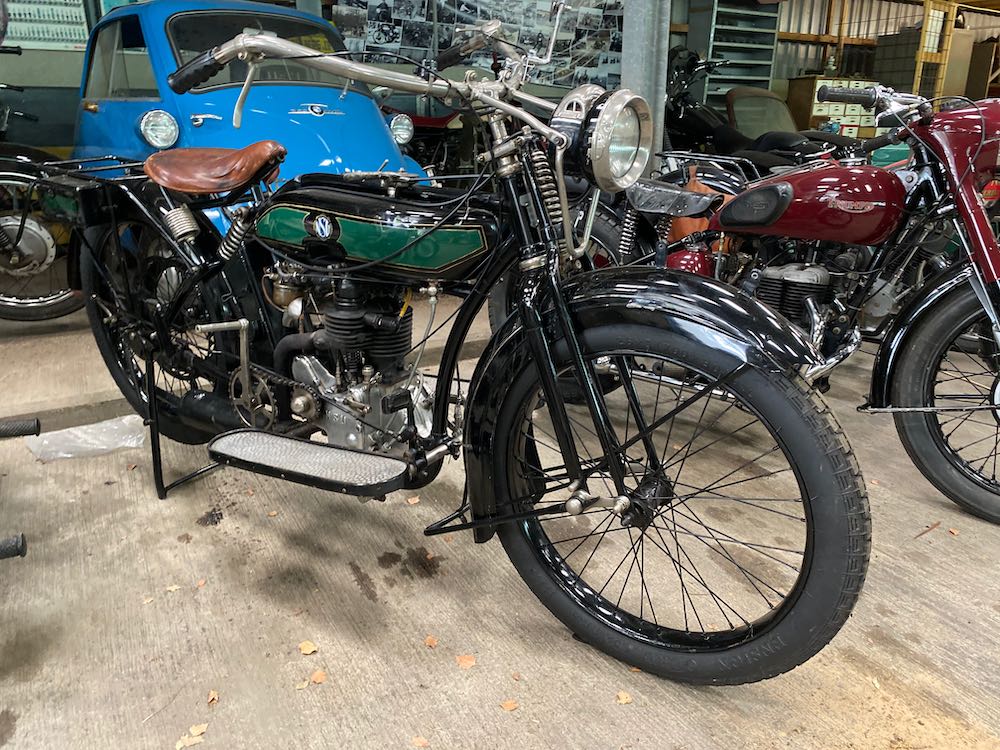
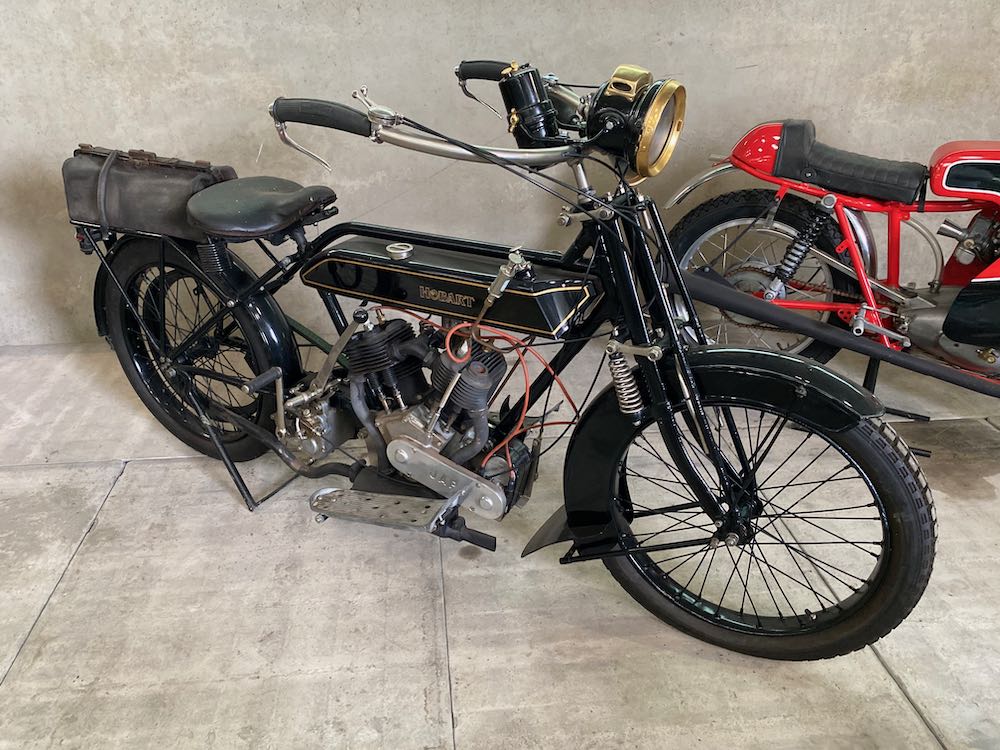
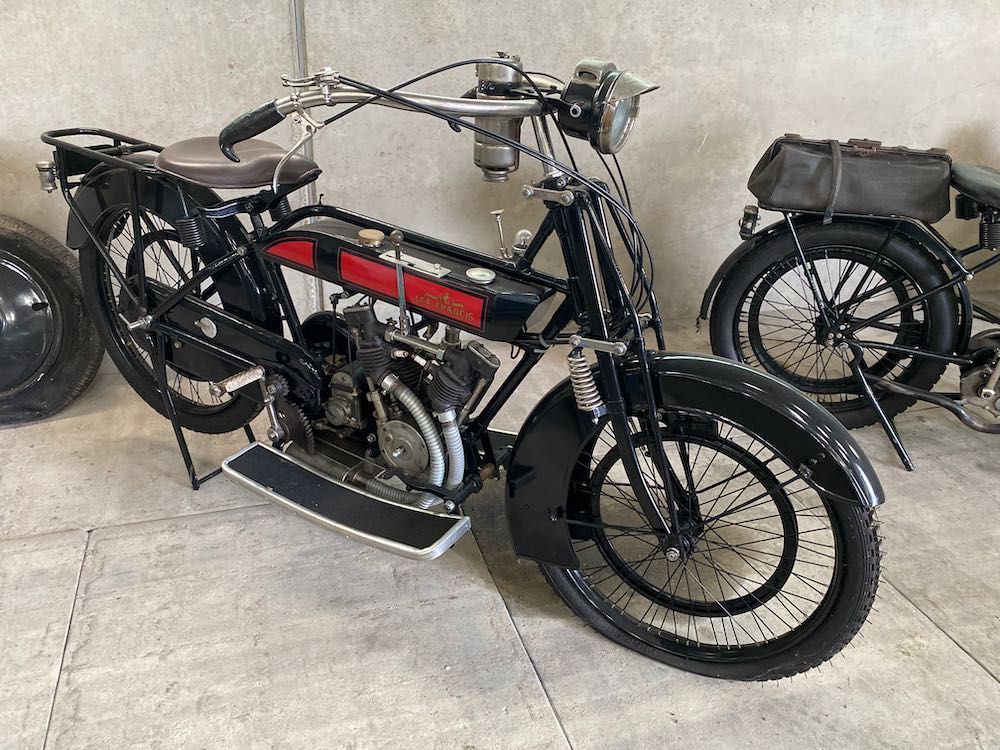
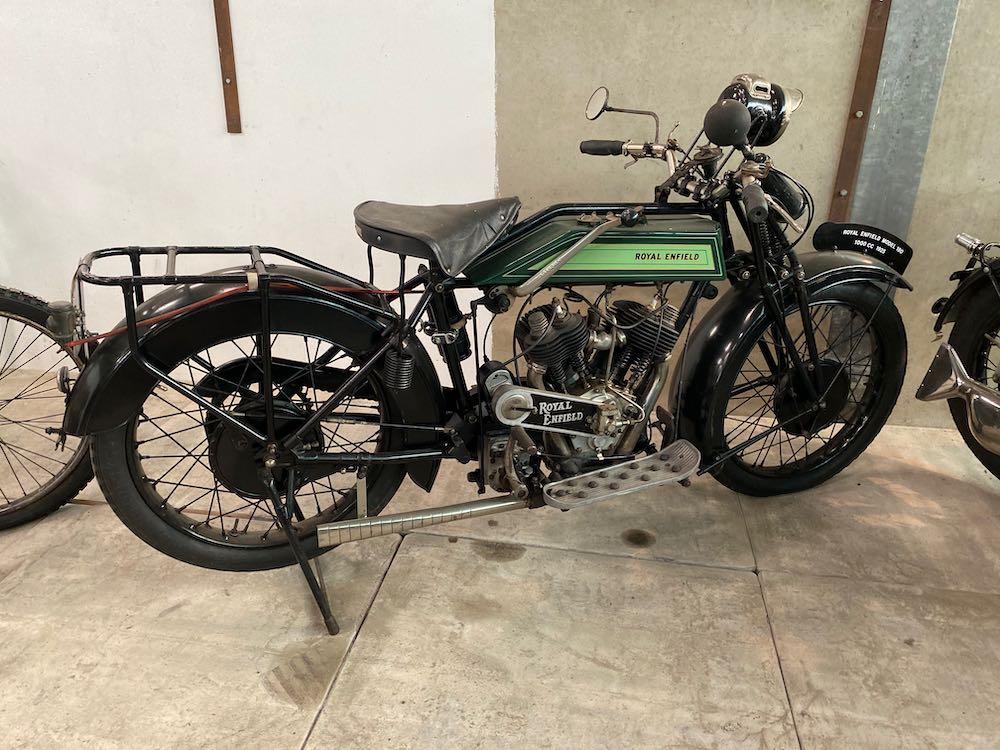
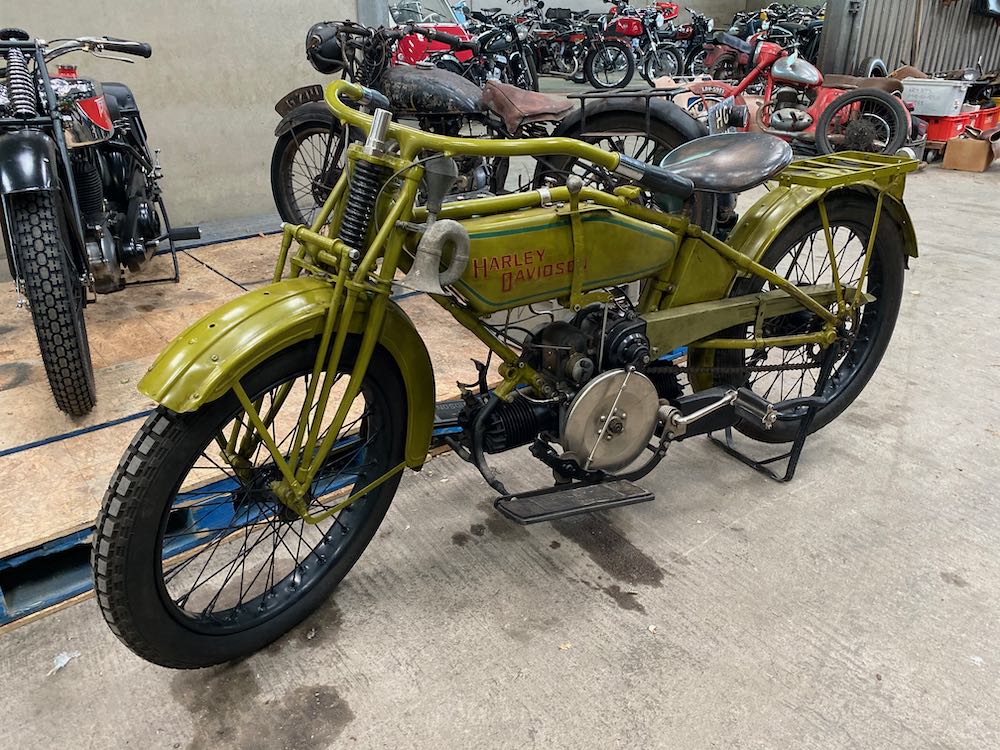
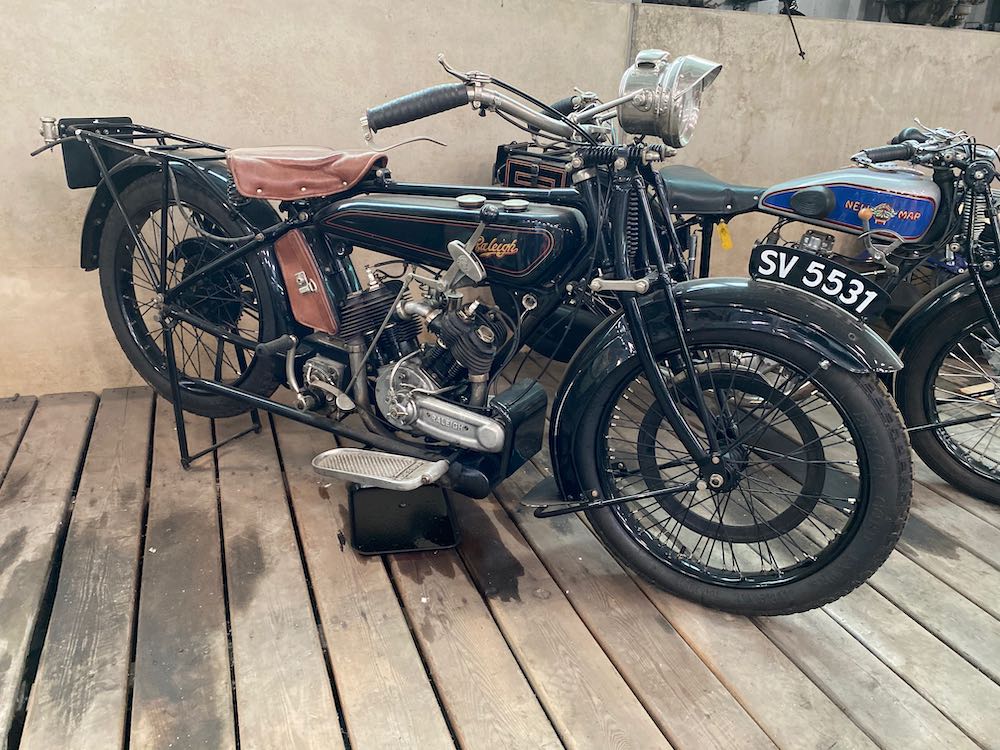
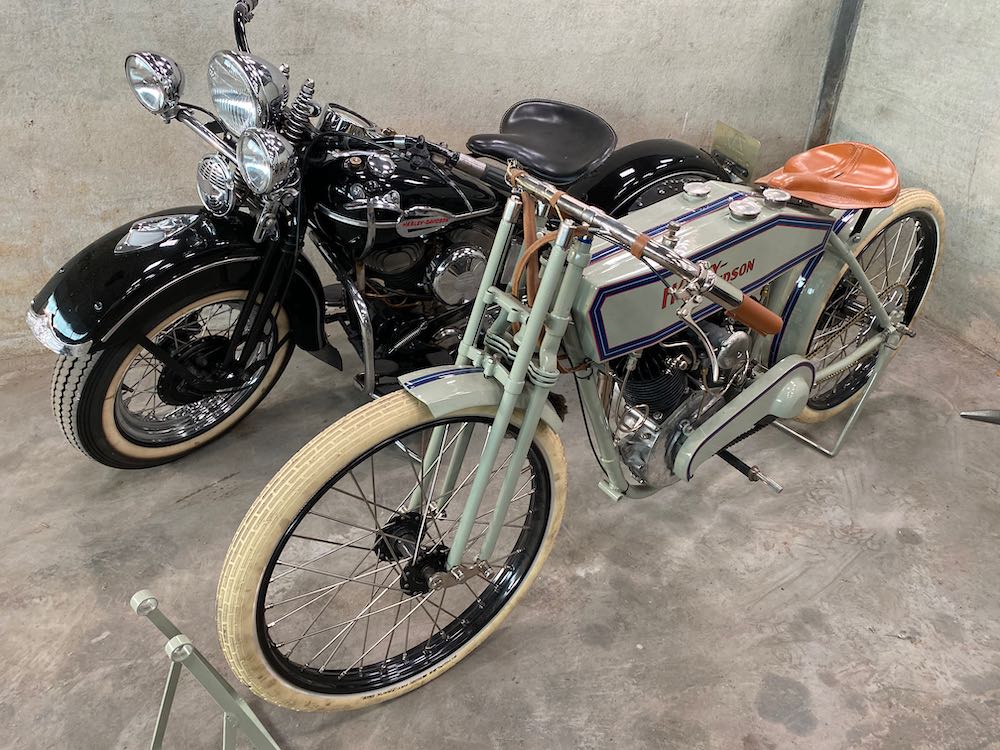
Griffon G550 met 98cc uit 1928
Een andere; erg mooi, perfect merk, maar veel te licht om met een helm op rond te gaan rijden. Gaan ongeveer 30, wat toen heel snel was.

Motoconfort MC2 met 175 cc uit 1927

Ook een prachtig mooie exemplaar gezien bij Boelens Bikes in Groningen. Ap heeft me keurig geholpen en er alles aan gedaan om me van informatie te voorzien, maar ook deze ging niet door. Al die Franse modellen zijn eigenlijk te klein voor mijn iets te riante lichaam, maar die zijn wel betaalbaar in vergelijking met de Engelse (en Amerikanen). Deze heeft een ligt blokje van 175cc en zou daardoor slechts 40 km/u gaan met mij erop. Ook nog geen kenteken en onduidelijkheid over welk model het nou precies is. Blokje zegt MC2, maar frame lijkt meer een D1 / D4. Een D2? Hij heeft wel de juiste elementen: mooie voorvork, tank, floorboards, zadel en uitlaat. Prima voor erbij dus voor een rustig ritje over de dijk, maar da’s niet de bedoeling; ‘voor erbij’…
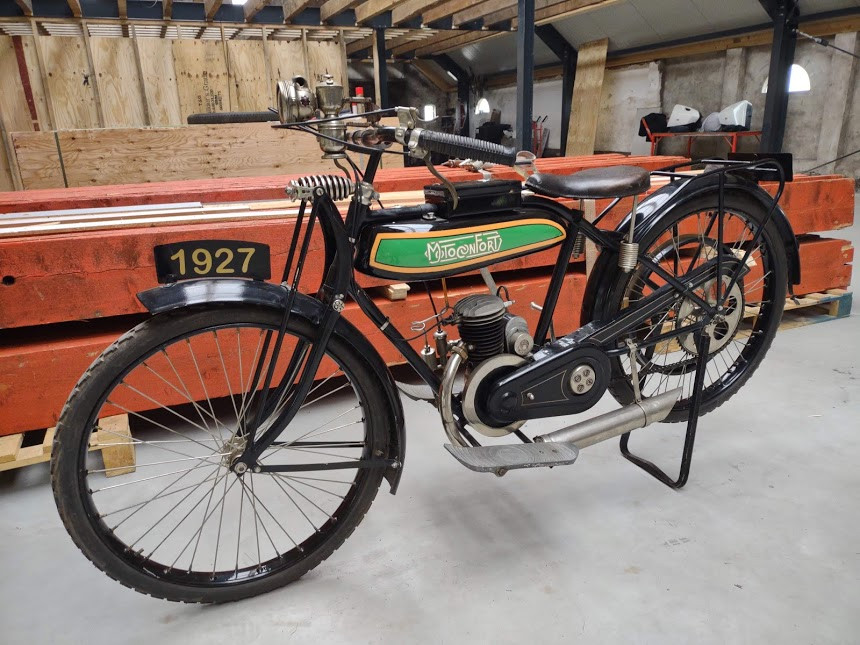
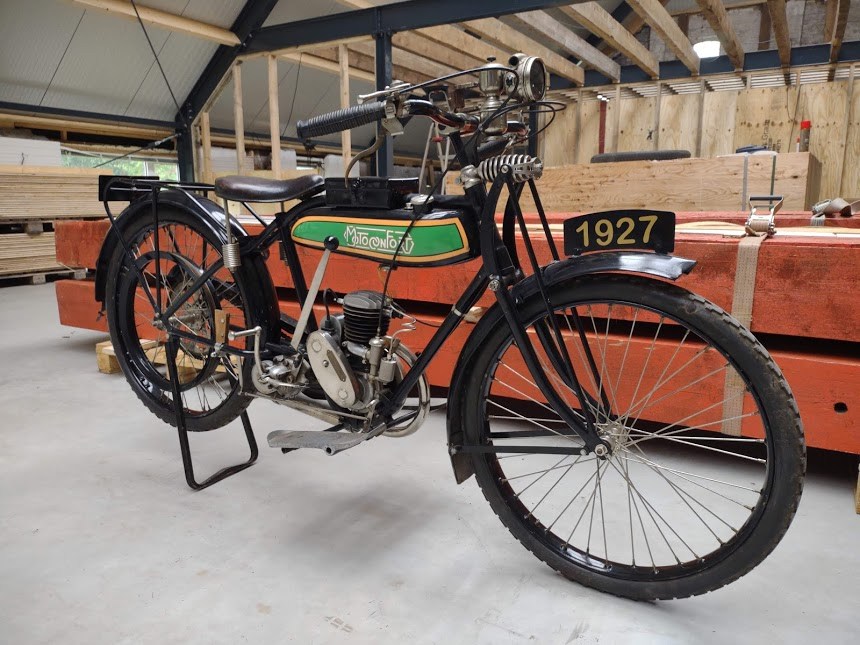
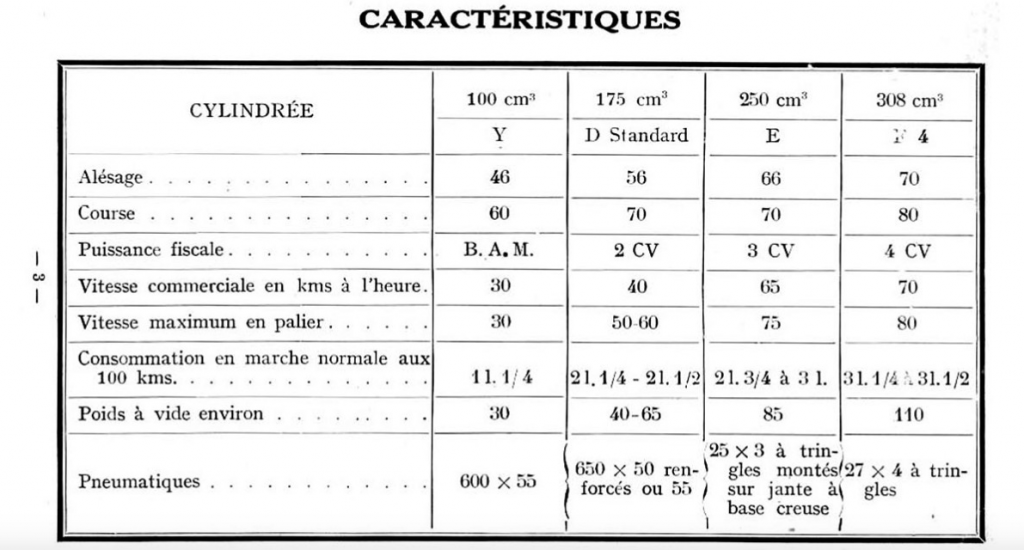
Nieuwe kans: Grote broer van 250 cc > Motoconfort MC6 / Type E uit 1929
Deze stond aanvankelijk in optie en dus uitgesloten als kanshebber. Nu alsnog eens goed (gaan) bekijken. Model 1928 geleverd in 1929, deze keer met remmen en verlichting, rechte floorboards, zelfde uitlaat en nagenoeg zelfde zadel. Andere vork en matig bijrijderszadel (Kwestie van smaak); die zou er dan af gaan vrees ik… En met kenteken, dus iets makkelijker om te zetten. Ook zou deze de gewenste 60-70 km/u moeten halen. Hij ziet er nog super origineel uit volgens deze site.
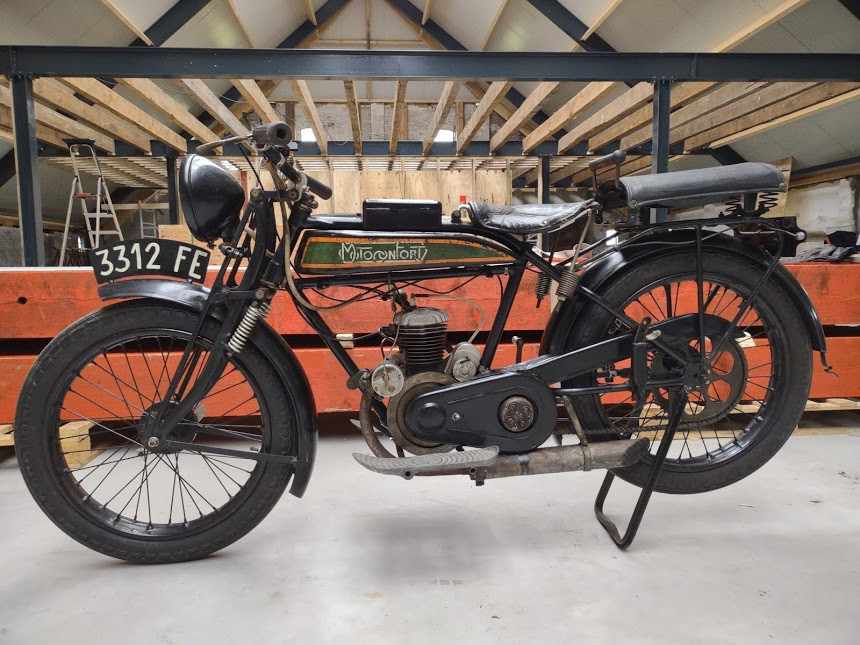
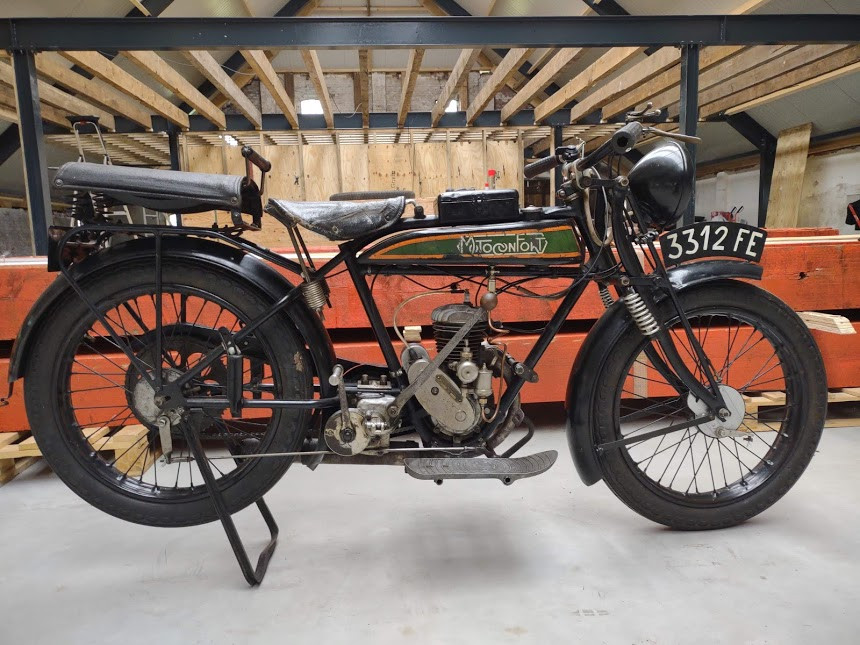
En toen nog een keer terug naar Wildervank om een proefrit te maken op de grotere broer. Via de VMC tourrit terug naar huis: kleine 500 km op 1 dag. Ik denk dat ik wel vort getraind ben om naar Toscane te rijden… Vannacht een beslissing nemen over deze.
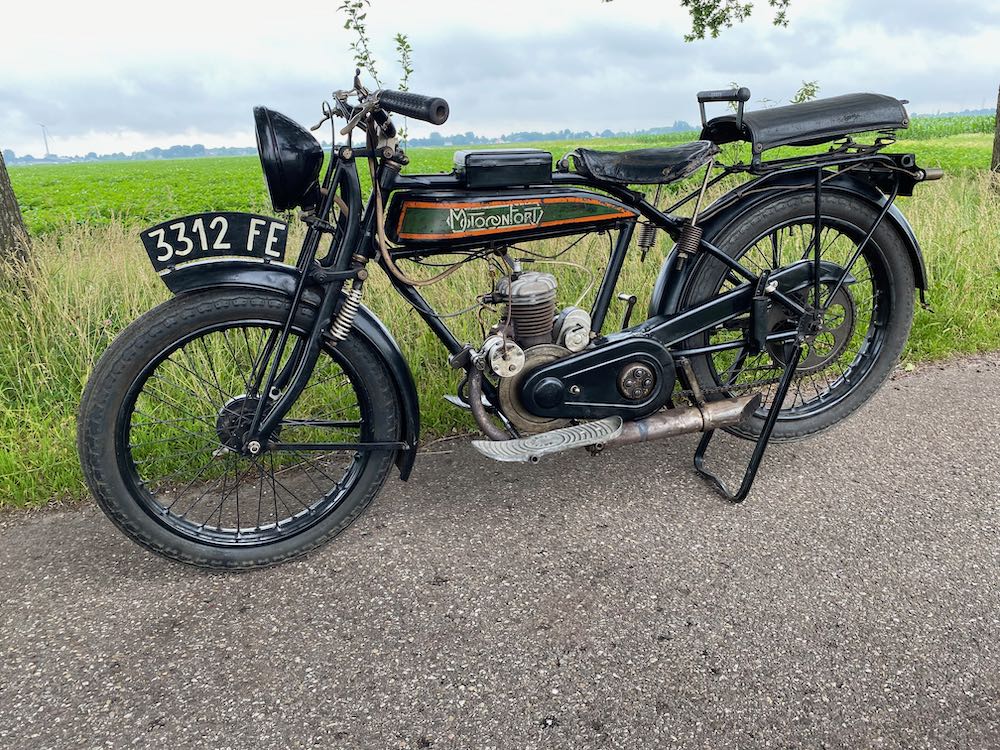
Prachtige onbetaalbare Ariel 498cc uit 1920
Er staat heel veel moois op de site van Yesterdays en ik was er nog nooit geweest: nu wel > Wat een mooie snoepwinkel. Vanalles moois tussen de 15.000 en 85.000 euro. Kijken, kijken en niet kopen dus in mijn geval. Ariel is niet alleen een gaaf merk, maar dit is ook nog een hele mooie fiets met aparte remmen, mooie cilinderkop, goede zithouding en prachtige handvaten. En een apart voorspatbord. Qua prijs ligt is ook nog eens best vooraan in de range, maar blijft is natuurlijk ongelofelijk veel geld voor een motor die ik zelf niet kan onderhouden… Er zijn wel meer dromen uitgekomen, dus we gaan het zien. Voor een motor die echt goed bij mijn iets te riante lichaam past, zou het toch een Indian of een Harley moeten zijn. Die stonden er ook !
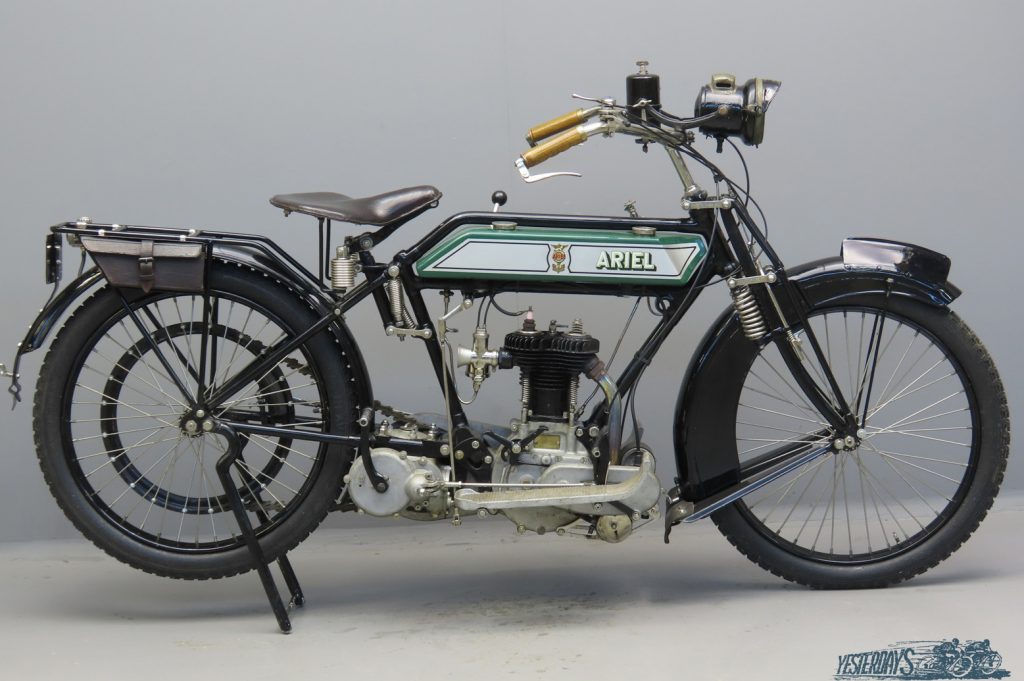
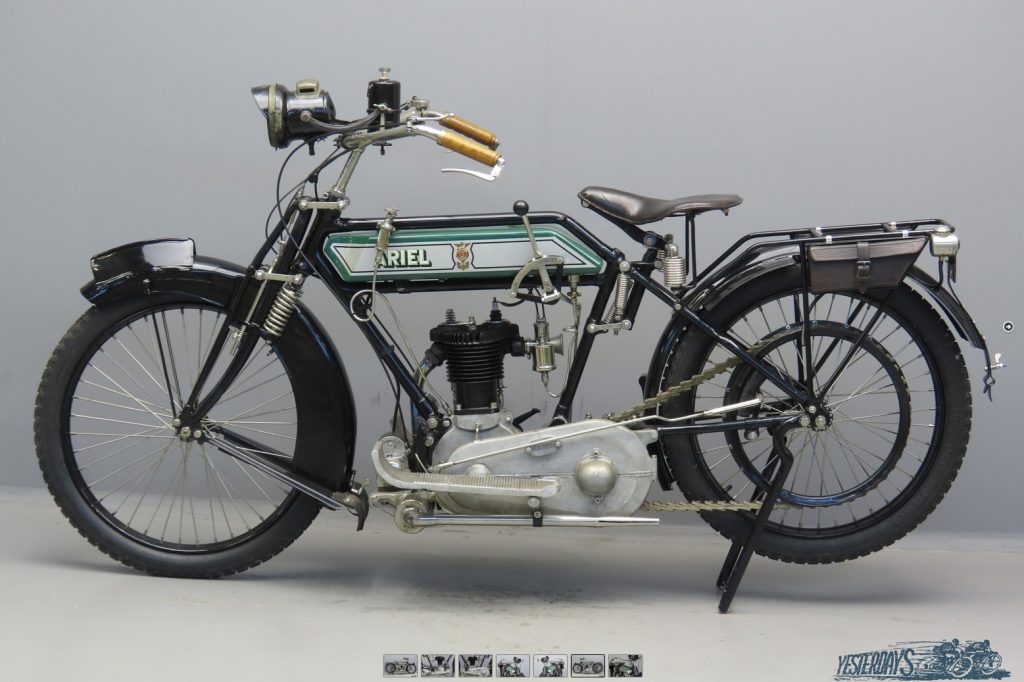
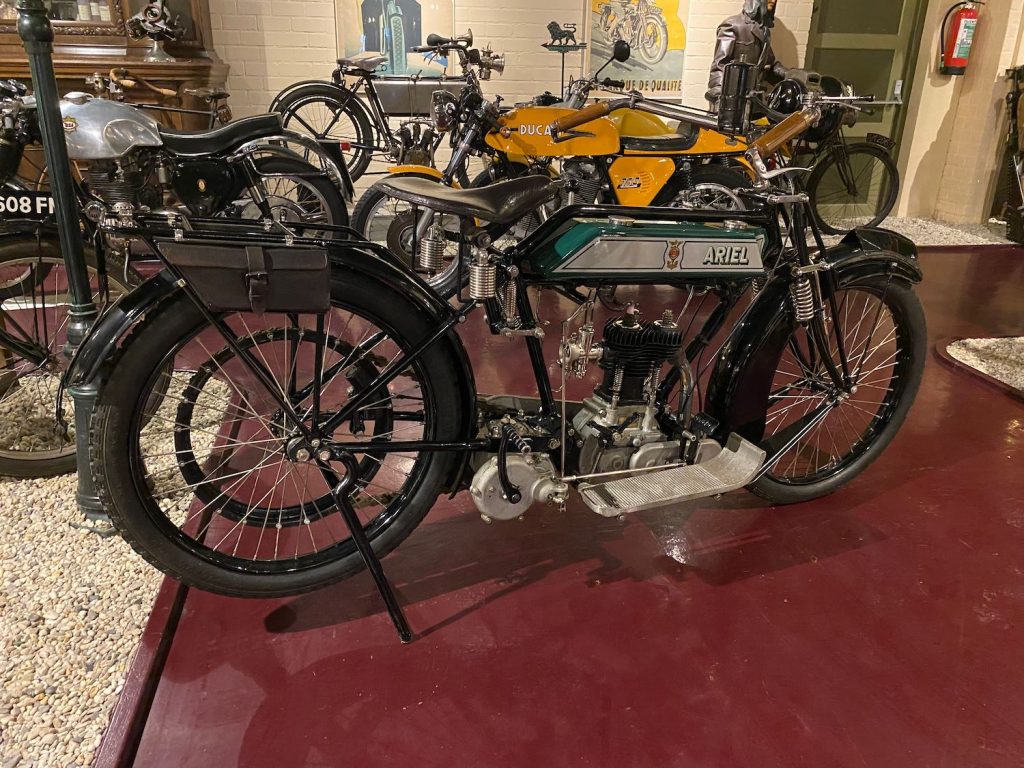
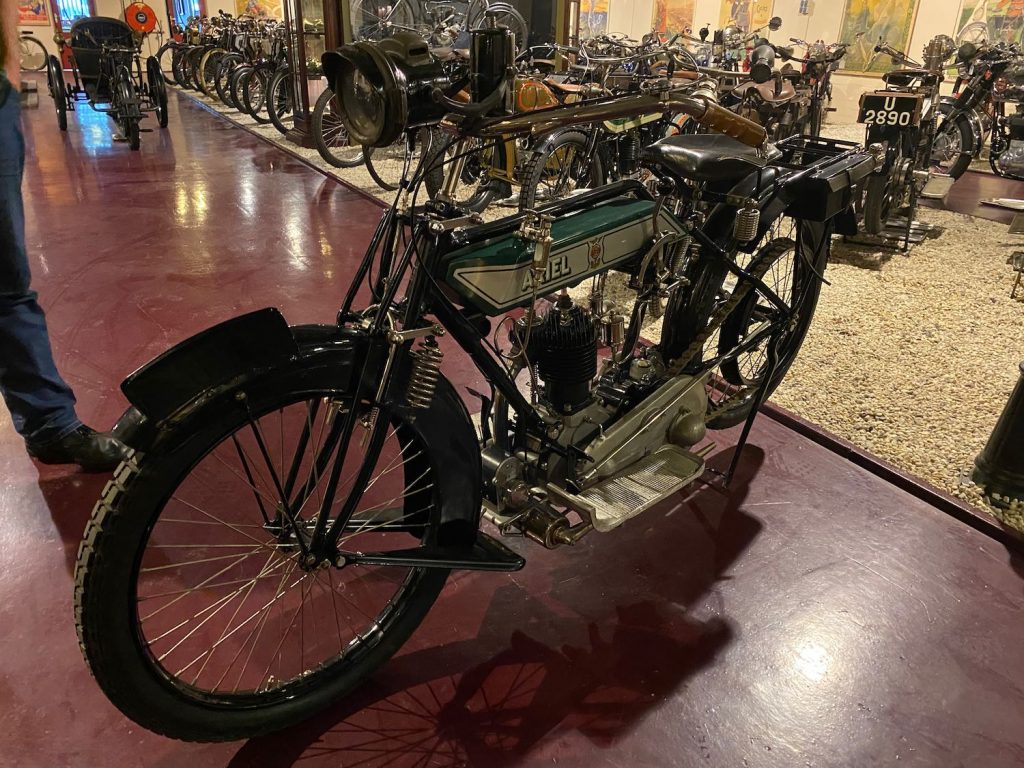
De beschrijving op hun site: Components Ltd., the Ariel parent company, had been involved in producing motorized vehicles since 1898. For the 1910 season a radical change occurred in the motorcycle range. All previous models were discontinued and were replaced by 3 ½ HP machines that would remain in production for the next 15 years: the T-head White & Poppe engine, in which the inlet and exhaust valves were placed an extraordinarily 4 ½ inches apart. Because of this the new machines soon gained the nickname of “the Ariels with valves a-mile-apart”. The new models proved very popular with motorcycle enthusiasts and in 1911 Components Ltd. bought the patents rights of the engine and started producing the power unit itself, at the same time increasing the bore to enlarge the swept volume from 482cc to 498 cc. In 1914 a three-speed countershaft gearbox was added. Clutch control is by foot pedal. Secondary transmission is by belt and the comfortable spring seat is a practical detail. The early postwar models differed but little from the 1914-style machines. This well-designed and sturdy Ariel thumper with bore x stroke dimensions of 86.4x85mm has been restored and comes with full acetylene lighting system. Hij blijkt geweest te zijn van Rein van de Arielclub; pas ook zijn collectie mogen bekijken. Ook alles prachtig…
Watje, koop die Automoto 350cc zijklepper uit 1927
Een oproepje leverde diverse reacties op, maar net niet de goede. Behalve van Anne, die had een flinke robuuste 350cc zijklepper (en dus 4takt en dus allemaal wat grover) uit 1927. Prijs was keurig, formaat prima, uiterlijk matig maar te overzien. Ik mocht meteen komen kijken. Ook hier een prachtig museumpje erbij. De motor had 20 of 30 jaar puur ter decoratie ergens gestaan en de eigenaar kon zich niet herinneren dat ie ooit gelopen had. Motor ging rond en de versnellingen werkten. Voor mij, zeker op dit moment, is het beter iets kantenklaarders te kopen met kenteken. Toch begin ik een watje te worden, want dit was de beste optie tot nu toe, ook wel de grootste gok… Blok? Tank binnenkant? Nieuwe banden ! Beetje opknappen. Voor je het weet een flink project en dan nog steeds niet moeders mooiste, maar ja als ik lekker wil zitten zal het wat lomper moeten. Ik weet wie hem gekocht heeft dus wellicht krijgt verhaal nog een mooi staartje.
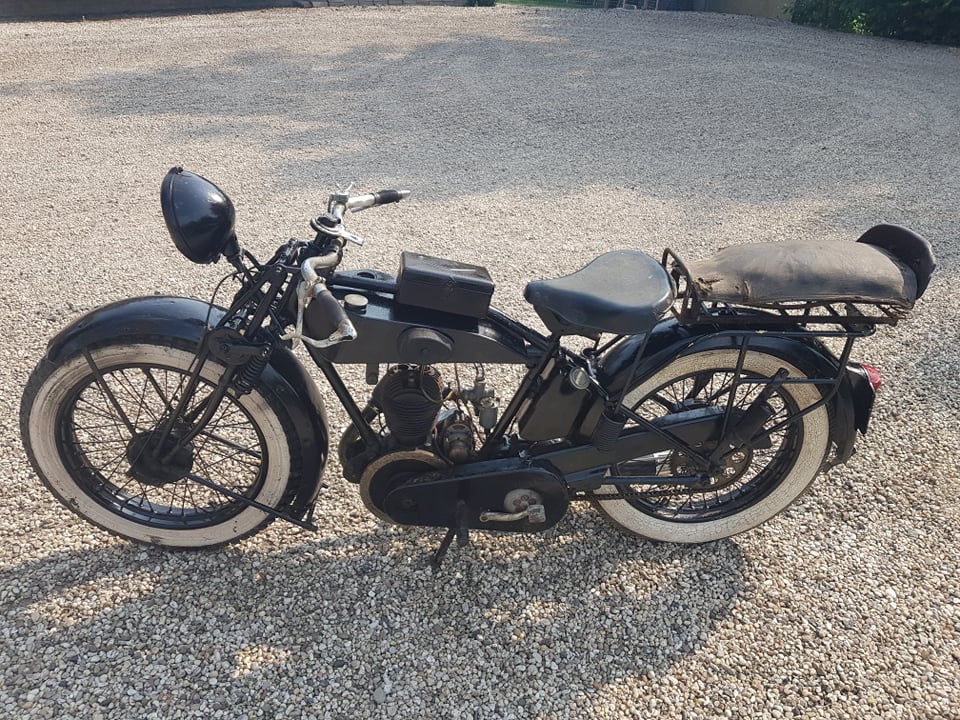
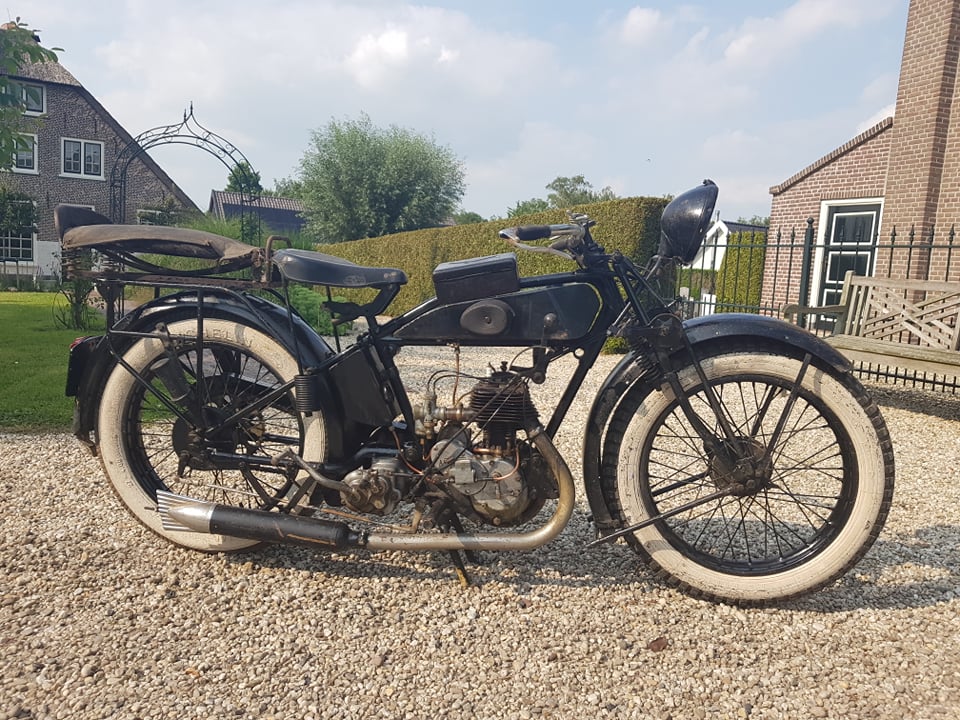
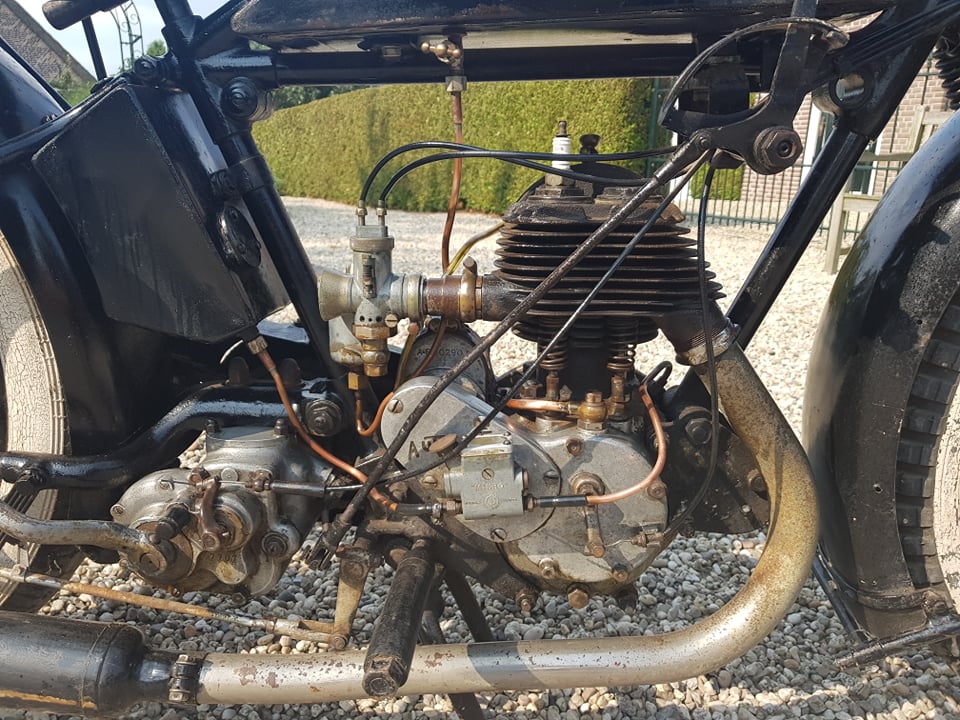
Indians
Er stonden bij Dutch Lion Motorbikes (en bij Yesterdays) ook vele Indians en zelfs een Henderson van 87.500 euro… Niet te betalen, maar o zo mooi…
